Join Pilot Waitlist

Home » Blog » General » Effective SEL Activities for Students with Special Education Needs: A Comprehensive Guide


Effective SEL Activities for Students with Special Education Needs: A Comprehensive Guide
Social Emotional Learning (SEL) plays a crucial role in the development and well-being of all students, but it is especially important for those with special education needs. These students often face unique challenges in their social and emotional development, which can impact their overall academic success and quality of life. In this comprehensive guide, we will explore the benefits of SEL activities for special education students and provide practical strategies and resources for implementing effective SEL interventions.
Understanding Special Education Needs
Before diving into the specifics of SEL activities for special education students, it is important to have a clear understanding of what special education needs are and the challenges these students may face in their social and emotional development.
Definition and Characteristics of Special Education Needs
Special education needs refer to a range of learning difficulties or disabilities that require additional support and accommodations in the educational setting. These needs can include intellectual disabilities, learning disabilities, autism spectrum disorders, emotional and behavioral disorders, and physical disabilities.
Students with special education needs may exhibit a variety of characteristics depending on their specific diagnosis. These can include difficulties with communication, social interaction, self-regulation, problem-solving, and emotional expression. It is important to recognize that each student is unique and may have a combination of strengths and challenges.
Challenges Faced by Students with Special Education Needs in Social Emotional Development
Students with special education needs often face significant challenges in their social and emotional development. These challenges can stem from difficulties with communication, sensory processing, self-regulation, and understanding social cues. As a result, they may struggle with forming and maintaining relationships, managing their emotions, and effectively navigating social situations.
Without targeted interventions and support, these challenges can have a negative impact on their overall well-being and academic success. This is where SEL activities come in.
Benefits of SEL Activities for Special Education Students
SEL activities provide a structured and intentional approach to supporting the social and emotional development of students with special education needs. These activities offer a range of benefits that can positively impact their overall well-being and academic achievement.
Improved Self-Awareness and Self-Regulation
SEL activities help students develop a greater understanding of their own emotions, strengths, and challenges. Through activities such as mindfulness exercises and emotional identification tasks, students learn to recognize and regulate their emotions more effectively. This increased self-awareness and self-regulation can lead to improved behavior, increased focus, and better overall emotional well-being.
Enhanced Social Skills and Relationships
SEL activities provide opportunities for students to practice and develop their social skills in a safe and supportive environment. Role-playing activities, group discussions, and collaborative projects help students learn and apply important social skills such as active listening, empathy, perspective-taking, and conflict resolution. These skills are essential for building and maintaining positive relationships with peers, teachers, and caregivers.
Increased Academic Engagement and Achievement
Research has shown that students who participate in SEL activities demonstrate higher levels of academic engagement and achievement. By addressing the social and emotional needs of students with special education needs, these activities create a foundation for improved learning and academic success. When students feel safe, supported, and connected, they are more likely to actively participate in the learning process and achieve their full potential.
Key Considerations for Effective SEL Activities
When implementing SEL activities for special education students, it is important to consider their individual needs and abilities. Here are some key considerations to keep in mind:
Individualized Approach Based on Student’s Needs and Abilities
No two students with special education needs are exactly alike. It is important to tailor SEL activities to meet the specific needs and abilities of each student. This may involve modifying activities, providing additional support, or using alternative communication methods. By taking an individualized approach, you can ensure that each student is able to fully participate and benefit from the activities.
Incorporating Sensory-Friendly Strategies
Many students with special education needs have sensory sensitivities or difficulties with sensory processing. When planning SEL activities, it is important to consider sensory-friendly strategies to create a comfortable and inclusive environment. This may include providing sensory breaks, using visual supports, and minimizing sensory distractions. By addressing sensory needs, you can help students feel more at ease and ready to engage in the activities.
Collaboration with Other Professionals and Caregivers
Implementing effective SEL activities requires collaboration and communication with other professionals and caregivers involved in the student’s education and support. This can include special education teachers, speech-language pathologists, occupational therapists, and parents. By working together, you can ensure a consistent and coordinated approach to supporting the student’s social and emotional development.
Effective SEL Activities for Special Education Students
Now that we have explored the benefits of SEL activities and key considerations for implementation, let’s dive into some specific activities that are particularly effective for students with special education needs.
Mindfulness and Relaxation Exercises
Mindfulness exercises help students develop their ability to focus, regulate their emotions, and manage stress. These activities can include deep breathing exercises, guided visualizations, and body scans. By practicing mindfulness regularly, students can improve their self-awareness and develop strategies for self-regulation.
Emotional Identification and Expression Activities
Activities that focus on emotional identification and expression help students develop their emotional vocabulary and understanding of different emotions. These activities can include emotion charades, emotion flashcards, and journaling prompts. By increasing their emotional literacy, students can better express their feelings and understand the emotions of others.
Social Skills Development through Role-Playing and Group Activities
Role-playing activities and group projects provide opportunities for students to practice and develop their social skills. These activities can include scenarios that require problem-solving, conflict resolution, and teamwork. By actively engaging in these activities, students can improve their communication skills, empathy, and ability to work collaboratively with others.
Problem-Solving and Decision-Making Exercises
Problem-solving and decision-making exercises help students develop critical thinking skills and strategies for navigating real-life situations. These activities can include puzzles, case studies, and group discussions. By engaging in these exercises, students can enhance their problem-solving abilities and become more confident in making informed decisions.
Building Empathy and Perspective-Taking Skills
Empathy and perspective-taking are essential skills for developing positive relationships and understanding the experiences of others. Activities that focus on building empathy can include storytelling, role-playing, and community service projects. By engaging in these activities, students can develop a greater sense of empathy and appreciation for diversity.
Strategies for Implementing SEL Activities
Implementing SEL activities effectively requires careful planning and consideration of the student’s individual needs. Here are some strategies to help you create a supportive and inclusive environment for SEL:
Creating a Supportive and Inclusive Environment
Set the tone for SEL activities by creating a supportive and inclusive environment. This can include establishing clear expectations, promoting positive behavior, and fostering a sense of belonging. By creating a safe and welcoming space, students will feel more comfortable and motivated to participate in the activities.
Providing Clear Instructions and Visual Supports
When introducing SEL activities, provide clear and concise instructions to ensure that students understand the objectives and expectations. Visual supports such as visual schedules, visual cues, and visual prompts can also be helpful for students with special education needs. These supports provide additional guidance and help students stay organized and focused during the activities.
Modifying Activities to Meet Individual Needs
Be prepared to modify activities to meet the individual needs of each student. This may involve simplifying instructions, providing additional support, or adapting materials. By making these modifications, you can ensure that all students are able to actively participate and benefit from the activities.
Monitoring Progress and Adjusting Interventions as Needed
Regularly monitor the progress of students and adjust interventions as needed. Keep track of their social and emotional development and make any necessary changes to the activities or strategies. By continuously assessing and adapting, you can ensure that the SEL interventions are effective and meet the evolving needs of the students.
Resources and Tools for SEL Activities
There are a variety of resources and tools available to support the implementation of SEL activities for special education students. Here are some recommendations:
Online Platforms and Apps for SEL Activities
Online platforms and apps such as EverydaySpeech provide a wide range of SEL activities and resources specifically designed for students with special education needs. These platforms offer interactive games, social stories, and lesson plans that can be easily integrated into the classroom or therapy sessions.
Books and Literature for Promoting SEL in Special Education
There are many books and literature available that promote SEL in special education. These resources can provide valuable insights, strategies, and activities for supporting the social and emotional development of students with special education needs. Some recommended titles include “The Social Skills Picture Book” by Jed Baker and “The Zones of Regulation” by Leah Kuypers.
Professional Development Opportunities for Educators and Caregivers
Professional development opportunities such as workshops, webinars, and conferences can provide educators and caregivers with the knowledge and skills needed to effectively implement SEL activities. These opportunities offer valuable insights, research-based strategies, and networking opportunities with other professionals in the field.
Social Emotional Learning activities play a vital role in supporting the social and emotional development of students with special education needs. By implementing effective SEL interventions, we can help these students develop important skills, improve their overall well-being, and achieve academic success. Remember to take an individualized approach, incorporate sensory-friendly strategies, and collaborate with other professionals and caregivers. Start exploring and implementing effective SEL strategies today to make a positive impact on the lives of your special education students.
Start your EverydaySpeech Free trial here .

Related Blog Posts:
Pragmatic language: enhancing social skills for meaningful interactions.
Pragmatic Language: Enhancing Social Skills for Meaningful Interactions Pragmatic Language: Enhancing Social Skills for Meaningful Interactions Introduction: Social skills play a crucial role in our daily interactions. They enable us to navigate social situations,...
Preparing for Success: Enhancing Social Communication in Grade 12
Preparing for Success: Enhancing Social Communication in Grade 12 Key Takeaways Strong social communication skills are crucial for academic success and building meaningful relationships in Grade 12. Social communication includes verbal and non-verbal communication,...
Preparing for Success: Enhancing Social Communication in Grade 12 Preparing for Success: Enhancing Social Communication in Grade 12 As students enter Grade 12, they are on the cusp of adulthood and preparing for the next chapter of their lives. While academic success...

FREE MATERIALS
Better doesn’t have to be harder, social skills lessons students actually enjoy.
Be the best educator you can be with no extra prep time needed. Sign up to get access to free samples from the best Social Skills and Social-Emotional educational platform.
Get Started Instantly for Free
Complete guided therapy.
The subscription associated with this email has been cancelled and is no longer active. To reactivate your subscription, please log in.
If you would like to make changes to your account, please log in using the button below and navigate to the settings page. If you’ve forgotten your password, you can reset it using the button below.
Unfortunately it looks like we’re not able to create your subscription at this time. Please contact support to have the issue resolved. We apologize for the inconvenience. Error: Web signup - customer email already exists
Welcome back! The subscription associated with this email was previously cancelled, but don’t fret! We make it easy to reactivate your subscription and pick up right where you left off. Note that subscription reactivations aren't eligible for free trials, but your purchase is protected by a 30 day money back guarantee. Let us know anytime within 30 days if you aren’t satisfied and we'll send you a full refund, no questions asked. Please press ‘Continue’ to enter your payment details and reactivate your subscription
Notice About Our SEL Curriculum
Our SEL Curriculum is currently in a soft product launch stage and is only available by Site License. A Site License is currently defined as a school-building minimum or a minimum cost of $3,000 for the first year of use. Individual SEL Curriculum licenses are not currently available based on the current version of this product.
By clicking continue below, you understand that access to our SEL curriculum is currently limited to the terms above.
The Pathway 2 Success
Solutions for Social Emotional Learning & Executive Functioning
30 Social-Emotional Learning Activities for Every Classroom
August 9, 2022 by pathway2success Leave a Comment

How do I integrate social emotional learning? This is a question many educators are asking themselves. The good news is that there are countless ways to add SEL into the classroom, without it taking over your entire day. Social-emotional learning is a huge umbrella that accounts for the way we build relationships and teach meaningful skills from self-awareness to decision-making and everything in between.
This list is designed to give teachers and administrators options; no educator can do all of these activities all the time. Instead, choose a few and give them a try in your classroom to see what works best for you and your students.
Just a note: The majority of links below are free. This is intended to provide you with additional support to get started integrating SEL into your classroom. Every classroom deserves that. I’ve also included some extra paid activities if you need something more. I hope they make a difference for you and your students.

Maybe most importantly, these strategies are largely universal; they can be done with pre-schoolers all the way up to high schoolers. They can be done in a general education classroom, special education resource room group, a homeroom block, or an advisory period.
1. Daily Greetings
One of the simplest SEL techniques is starting the day with personalized greetings at the door. Have students choose the greeting (wave, fist bump, or thumbs up), or simply just say good morning to each student by name as they walk in.

2. Emotions Check-In
According to some research, just expressing our emotions can help alleviate those very feelings. Use a daily emotions check-in to help students share how they are feeling and what they need to be at their best.

3. Class Circle
Once a day, gather as a group in a circle. Use targeted relationship-building questions to share. It’s important to give everyone a chance to share who wants to. And on that note, it’s also important to allow kids to pass if they’re not comfortable sharing one particular question.
4. Journal Writing
Provide a SEL journal prompt each morning for kids to respond to. If your students are still working on writing skills, they can draw their responses and share aloud. SEL journaling provides a safe space to open up and allows you to integrate SEL with academic skills in a natural way.

5. Gratitude List
Once a day (or when time allows), have students write out a gratitude list. They should list out 3 things they are grateful for that day. These can be big things, like family or friends, but they can also be seemingly small things, like the smell of chocolate chip cookies or comfortable shoes. When we practice gratitude, we help kids and teens feel happier, more focused, and calm.
6. Morning Meeting
Start each day with a guided morning meeting. Any educator can implement a daily morning meeting some easy steps: greetings, a SEL-focused topic, guided discussion questions, a few activities, and a closing or reflection.

7. Mindful Morning Check-In
Use a mindful morning check-in to start the day. It is a five-step process that involves taking 5 deep breaths, listing 4 things you notice around you, identifying 3 things you are grateful for, saying 2 positive self-talk statements, and naming 1 thing you are looking forward to for the day.

8. SEL Read Alouds
Integrate social-emotional skills and reading using read alouds and stories. The truth is that read alouds are fun and engaging for kids of all ages (even big kids). Start or end your day with a read aloud, highlighting relevant SEL skills before, during, and after the story. You can choose a read aloud to work on a specific SEL skill (empathy or friendships, for example), or you can pick up any book and see where it takes you. Use a SEL read aloud list to help get started.

9. SEL Chats
Provide a targeted SEL question (or a few questions) and have students chat to discuss. Use SEL discussion-starters, such as: What is a good choice you’ve made recently? What could you teach someone else? What are some skills you feel most confident in? These questions are helpful to build relationships within the classroom, and they also allow for further discussion of critical SEL skills (self-awareness, self-management, social awareness, relationships, and decision-making). Come up with your own questions or use these SEL task cards with prompts for the year.

10. Coping Skills Practice
Healthy coping skills are essential to learning how to manage emotions and stress. Make it a point to practice coping strategies together, such as listening to music, drawing, reading, exercising, practicing yoga, and talking with a friend. These techniques can be practiced for just a few minutes as a time as a meaningful reminder for students.
11. End-of-the-day Reflection
The end of the day is the perfect time for reflection. That includes thinking about what went well, what students learned, what they are most proud of, and how they feel. Use targeted end-of-the-day reflection questions to start the process.

12. Recite Positive Affirmations
Positive self-talk helps students feel confident and ready for success. Choose favorite positive affirmations , create a list, and read them together. A list can be read at the start of each day or before a big test.

13. Practice Mindfulness
Mindfulness is learning how to be present in the moment. This self-regulation technique helps students feel calm, focused, and happier. Start your practice with mindful breathing exercises . These can be done anytime, but really pay off first thing in the morning, in between transitions, or right before quizzes and tests.
14. SEL Art Activities
Use art activities to allow for self-expression while integrating SEL skills at the same time. Use self-portraits to focus on self-awareness. Try mindful coloring to work on healthy coping skills. You can have students work together to create a shared drawing to build teamwork skills.

15. Class Meetings
Hold a class meeting on a regular basis to review expectations and solve problems together. These become a healthy spot to work on conflict resolution skills, as students can share struggles they are working through and get feedback from others. Class meetings are also the perfect venue for reviewing class expectations on a regular basis.
16. SEL Quote of the Day
Quotes are character-building! Share a meaningful social-emotional quote on the board. Have students discuss and share what it means to them. Some favorites to start out with are, “You are enough and a work in progress all at the same time,” and “It’s never too late to stop and go down a different path.”
17. Daily Check-In Journal
Provide a daily check-in journal first thing each day. This allows students to share how they are feeling, while also integrating other SEL skills and supports that kids need. As a bonus, journaling also means students are working on their writing skills.

18. “What Would You Do?” Scenarios
Integrate SEL skills by discussing some “What would you do?” scenarios. For example, you might ask, “You have a big test tomorrow, but a friend wants you to go out to the movies. What would you do?” Have students talk and share ideas to learn and grow. Make up your own questions or grab this set to get started.

19. Brain Breaks
Breaks are a critically important part of replenishing self-regulation skills. Provide brain breaks through movement like yoga or mindful breathing exercises. Schedule them into the day (such as between tasks) or use them when you notice students just need to refocus. Here are mindful brain breaks to try with a nature theme .
20. Show-and-Tell
Once a week, give students a chance to share items and ideas that are important to them. They might share an art project they created or a new game they got for their birthday at home. This gives kids a safe space to communicate and share a piece of themselves with their classmates.
21. SEL Skill of the Day or Week
Introduce one meaningful SEL skill of the day (or week). Briefly discuss it and ask some guided questions. Then, highlight that skill when you see it in action to help students generalize it to their own lives.

22. SEL Crafts & Hands-On Activities
Provide hands-on learning opportunities with SEL crafts. Have students make a coping strategies wheel or practice mindfulness with hands-on tools . Activities that are hands-on are often memorable.
23. Play Games
Many games build social-emotional skills . Use games to fill some end-of-the-week reward time, also weaving in those social-emotional skills at the same time. Choose games you might already have in your classroom (such as Jenga and Scrabble), or use games that specifically target SEL skills.

24. Shout Out Board
Create a bulletin board in the classroom where students can give “shout outs” to others. The idea is that students can give compliments and kind feedback to their peers and teachers. For example, a student might give a classmate a shout out for helping them organize their notebook. This builds a sense of community and allows a chance to highlight SEL skills along the way.
25. AM / PM Check-In
Provide individualized check-ins for students in need. During an AM/PM check-in time, an adult might ask a student how they are doing, review goals for the day, and reflect on how the day went.
26. Weekly Goal Reflection
Meet with individual students once a week to review goals and track progress. Goal reflection meetings can just be a few minutes, but have a big impact because students are getting 1:1 support. One helpful strategy is to have an individual binder for each student to record their goals, grades, and progress.

27. Daily Jobs
Help build responsibility by assigning classroom jobs. Examples of jobs might include paper collector, technology set up, and lunch counter.
28. Provide Catch-Up and Organization Time
Everyone needs down-time sometimes. Provide catch-up and organization time to allow students the chance to re-organize materials, finish missing work, and even get a head start on future assignments.
29. SEL Question of the Day
Provide one SEL question of the day . Project it or write it on the board. Give students time to discuss with a partner and write about it.
30. Group Activities or Challenges
Help students build a stronger community by implementing group activities and challenges. Have students work in groups to design kindness posters or work through an escape room challenge.
Social Emotional Learning Curriculum
I’ve developed a complete yearlong social-emotional learning curriculum for elementary students grades 3-5. It comes with everything you need to target skills like empathy, decision-making, confidence, friendships, self-control, and more. Learn more here.

Grab your free printable poster to help remind you about SEL activities and strategies in the classroom!

Remember that it’s about finding the social-emotional learning activities that work best for you and your learners.

Share this:

Leave a Reply Cancel reply
Your email address will not be published. Required fields are marked *
Save my name, email, and website in this browser for the next time I comment.
Find It Fast
- Privacy Policy
- Join Pathway 2 Success
- Social Emotional Learning Toolkit
- Self-Control Resources
pathway2success1
⭐ Kristina 💖 SEL & Executive Functioning 💻 Blogger at www.thepathway2success.com 👩🏫 Special Educator turned Curriculum Specialist Links here 👇

95 Supplemental Social Emotional Learning Activities
Welcome to our supplemental Social Emotional Learning Activities page!
As you will see below, many of the supplemental SEL activities and lesson plans include characters from our game-based, social emotional learning interventions . And when you use the online programs with your students, these activities will reinforce the learning that occurs during game play.
These supplemental resources – lessons, activities, and worksheets – are in the following SEL skill areas: Communication , Cooperation , Emotion Regulation , Empathy , Impulse Control , and Social Initiation .
These resources are age-appropriate for elementary and middle school students and are typically used in a classroom or a small group setting. And in most cases, if materials are required for the activity, they are items that you already have in your classroom or office.
Note: Please share this page on your school website so other educators may also benefit.
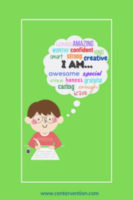
Self Esteem Worksheets
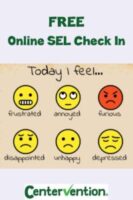
SEL Check In
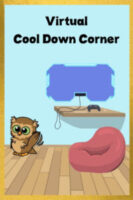
Cool Down Corner
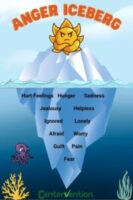
Anger Iceberg
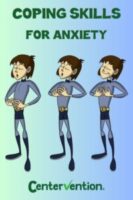
Coping Skills For Anxiety
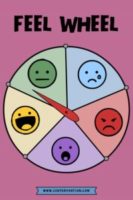
Feelings Wheel
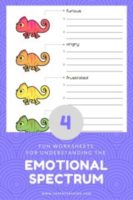
List of Emotions: 135 Words that Express Feelings
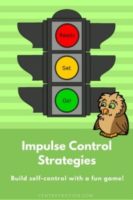
Impulse Control Activities for Kids
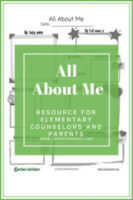
All About Me Worksheet
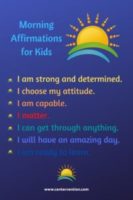
50 Positive Affirmations for Kids
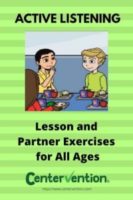
Active Listening Exercises
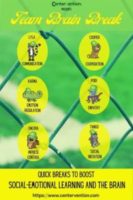
Brain Breaks For Kids
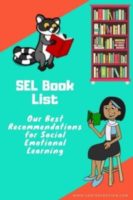
Word Association Game
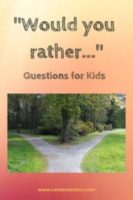
Would You Rather Questions For Kids
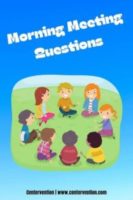
Morning Meeting Questions
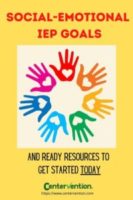
Social Emotional IEP Goals

Self Care For Teachers
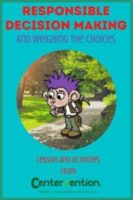
Responsible Decision Making Lesson
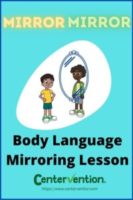
Body Language Mirroring
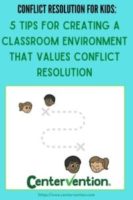
Conflict Resolution for Kids
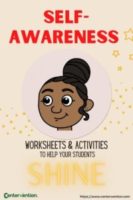
Self Awareness Worksheets
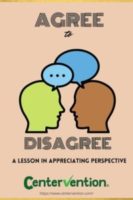
Agree to Disagree: A Lesson About Perspective
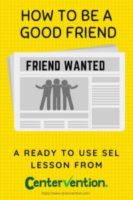
How to be a Good Friend
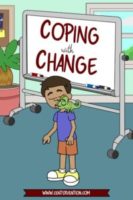
Dealing with Change
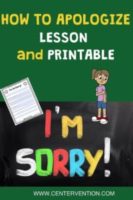
How to Apologize
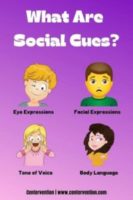
Social Cues and Social Competence
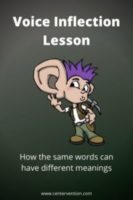
Voice Inflection
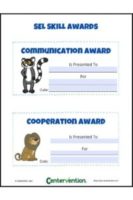
SEL Skill Printables
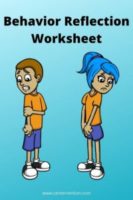
Think Sheet: Behavior Reflection Exercise
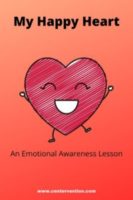
Emotional Awareness: What Makes Me Happy
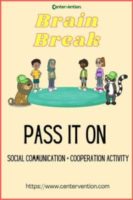
Pass It On Game
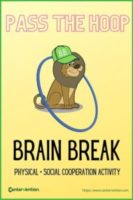
Indoor Recess Activity: Pass The Hoop
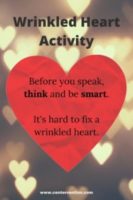
Wrinkled Heart Activity
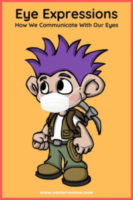
Eye Expressions: How We Communicate With Our Eyes
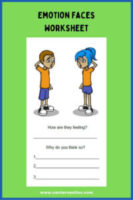
Emotion Faces Worksheet
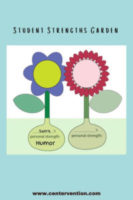
Student Strengths Lesson
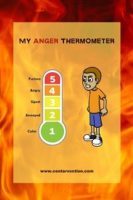
Anger Thermometer (Lesson and Printable)
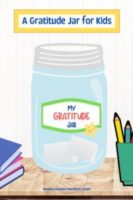
A Gratitude Jar for Kids
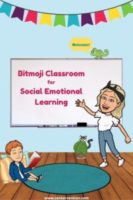
How to Create a Bitmoji Classroom for SEL
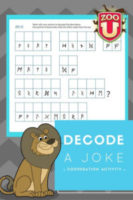
Cooperative Learning Activity
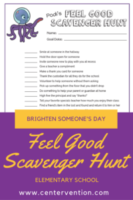
SEL Classroom Scavenger Hunt
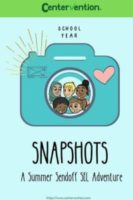
Summer Worksheets for Social Emotional Learning
Affirmation cards for kids.
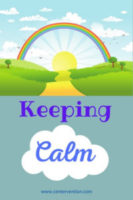
Mindfulness Activities for Kids
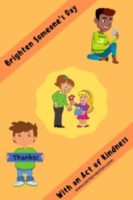
Acts of Kindness Worksheets for Kids
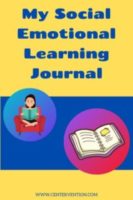
Social Emotional Learning Journal
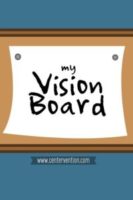
Vision Board Ideas for Students in Elementary and Middle School
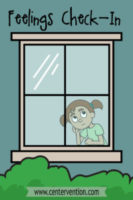
Emotional Check In Worksheet
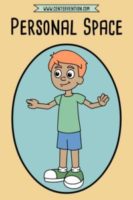
Personal Space Worksheets for Students in Elementary School

Gratitude Worksheets for Students in Elementary School
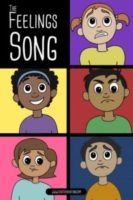
Song About Feelings for Kids
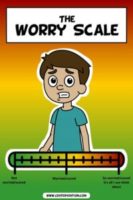
The Worry Scale
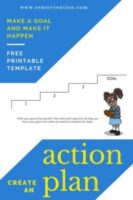
Goal Setting Worksheet

Hurtful Words Lesson for Young Students

Stay Focused Worksheet for Students in Elementary School
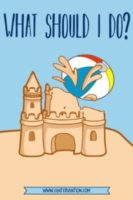
Dealing with Disappointment Lesson and Printable
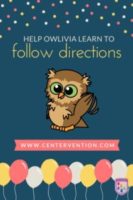
Following Directions Worksheets
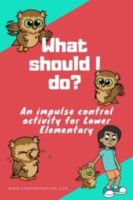
Socially Appropriate Behavior Worksheet for Elementary School Students
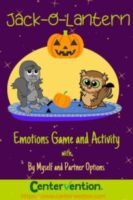
Holiday Printables for Social and Emotional Learning
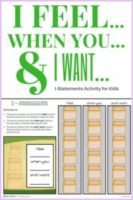
I Statements Worksheet
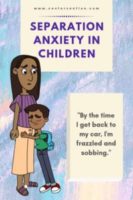
Separation Anxiety At School
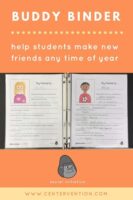
How To Make Friends At School

Perfectionist Child: Lesson and Expert Tips
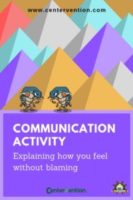
Expressing Feelings Without Blaming Activity
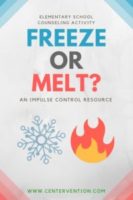
Impulse Control Printable: Melt or Freeze
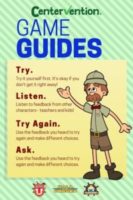
Game Guides: Informational Posters for Zoo U, SS GRIN, and Hall of Heroes
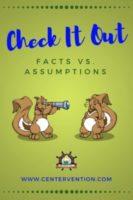
Critical Thinking Worksheets
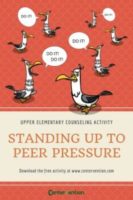
Peer Pressure Activities
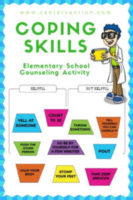

Coping Skills Worksheets
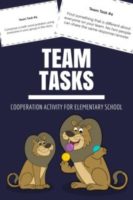
Social Skills Group Activities
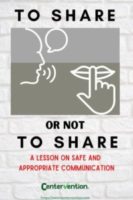
Communication Skills Worksheets
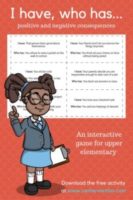
I Have Who Has Game of Actions and Consequences
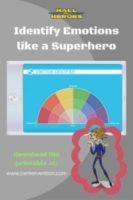
Mood Ring Colors: Identifying Emotions
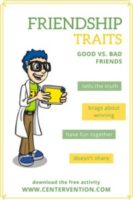
Friendship Traits: Making and Keeping Friends Activity
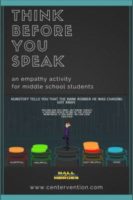
Think Before You Speak
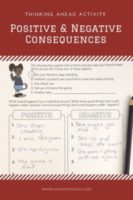
Positive and Negative Consequences
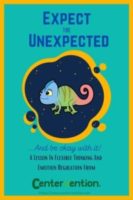
Emotional Regulation Activities
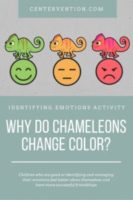
Identifying Emotions Activity: Chameleon Moods
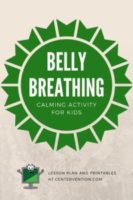
Belly Breathing for Kids
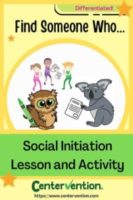
Find Someone Who
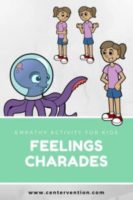
Emotion Charades for Kids: Feelings and Empathy
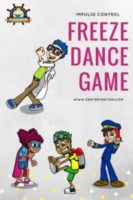
Freeze Game Activity
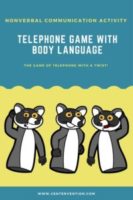
Body Language Game: Telephone Game
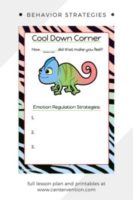
Calm Down Corner
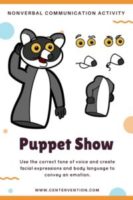
Nonverbal Communication Activities for Students in Grades K-8
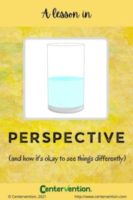
Perspective Taking Activities
Emotion words to convey a range of feelings.
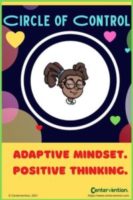
Circle of Control Worksheet for Students
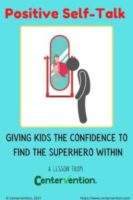
Positive Self Talk for Kids
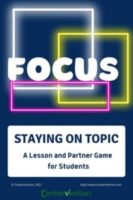
Staying on Topic Activity
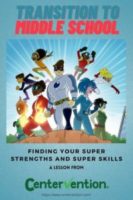
Transition to Middle School: Opening Lockers
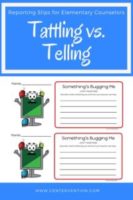
Tattling vs Telling
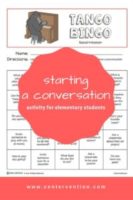
Conversation Starters for Kids
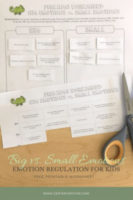
Feelings Worksheets: Understanding Big Emotions vs. Small Emotions
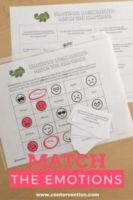
Feelings Faces Printable
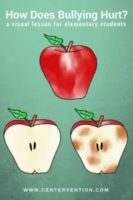
Bullying Lessons Using Apples
Social emotional learning at home.
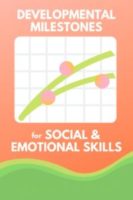
Developmental Milestones for Social and Emotional Skills
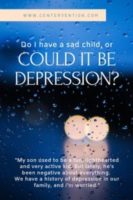
Do I have a Sad Child or Could it be Depression?

What to do when your child feels left out
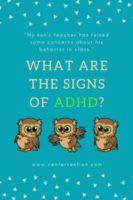
What are the Warning Signs of ADHD?
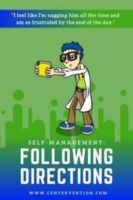
Following Directions: Advice from Experts
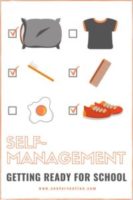
Getting Ready for School: Avoid the Drama
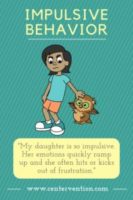
Impulsive Behavior in Children
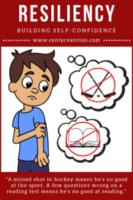
Lacking Self-Confidence: Expert Ideas and Tips to Help your Kids
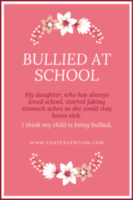
Bullied at School: Expert Ideas to Help your Child
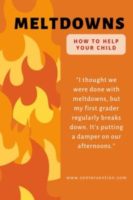
Meltdowns: How to Help your Child and Reduce Frustration
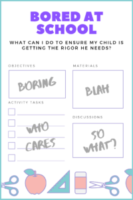
Bored at School and Academically Gifted
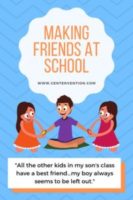
Making Friends at School
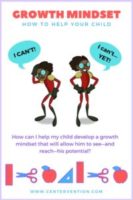
Growth Mindset for Kids
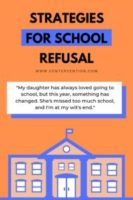
Strategies for Helping Your Child with School Refusal
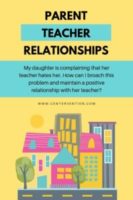
Parent-Teacher Relationships to Help Your Child Thrive at School
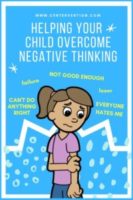
How to Help Your Child Overcome Negative Thinking
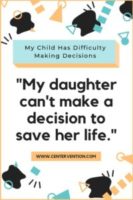
My Child Has Difficulty Making Decisions: How Can I Help?
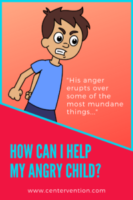
Angry Kid: How Can I Help My Son be Less Frustrated?
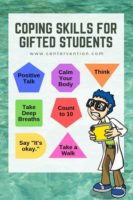
Coping Skills for Gifted Students
Additional resources for social emotional learning, classroom management plan.
Our classroom management plan is a step-by-step guide and includes proven strategies, tips and printables for elementary school teachers, and it covers four key components for establishing a successful, well-managed classroom.
Classroom Decorations
These free downloadable posters will decorate your classroom and be great teaching resources, reinforcing social and emotional skills in your classroom and reminding students to practice their skills like emotion regulation, impulse control, empathy, and more.
Social Emotional Learning Quotes
For each of the topics below, we have curated a list of quotes. You can incorporate these quotes in your social emotional learning lessons, add them to social media images, create classroom posters, or write one on your whiteboard each day.
Empathy Quotes
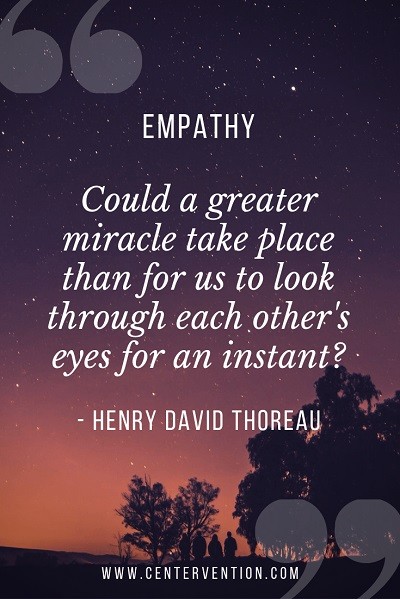
Self Care Quotes
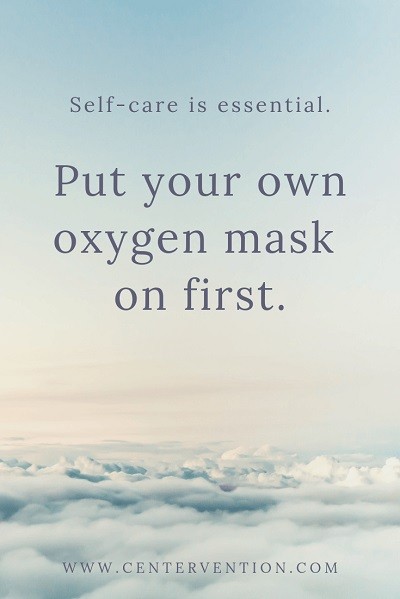
Bullying Quotes
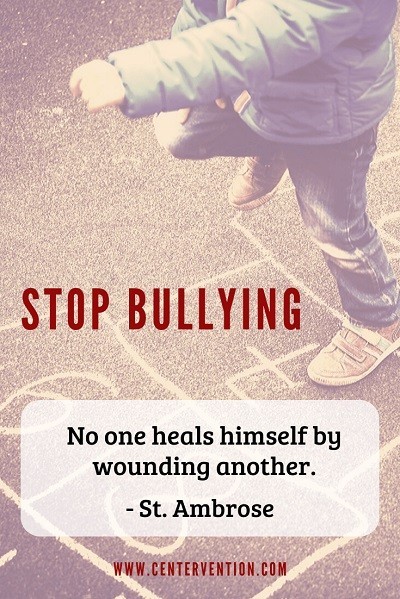
Confidence Quotes
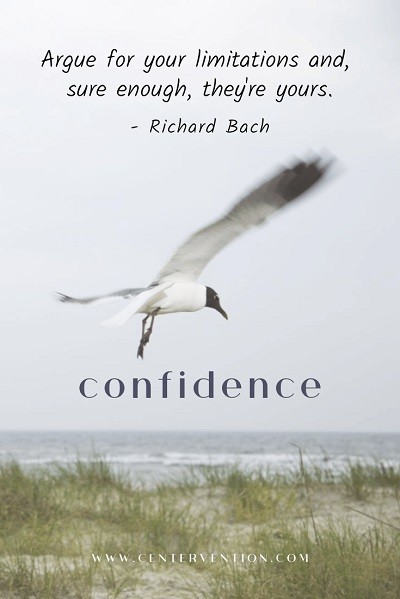
Growth Mindset Quotes
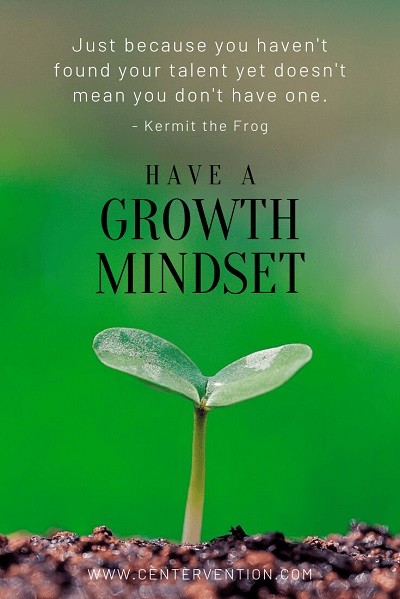
Need Something More Engaging And Effective For A Few Students?
Simply request a free centervention educator account and start using our online programs.
Zoo Academy: Grades K-1 Zoo U: Grades 2-4 SS GRIN: Grades 3-5 Hall of Heroes: Middle School Stories in Motion: High Needs
Purchasing Funding Information SEL Spotlight Supplemental Activities
Contact News Research Support
Get in Touch
Tel (919) 283-8899 [email protected]
Copyright 2024 Centervention® | All Rights Reserved | Privacy Policy | Terms of Use

Want to learn more about Riverside? hbspt.cta._relativeUrls=true;hbspt.cta.load(7083436, '0d51a9ef-7472-46c4-b0d6-ef4d2328ff08', {"useNewLoader":"true","region":"na1"});
Sel in special education: 7 tips for supporting your students part 3.
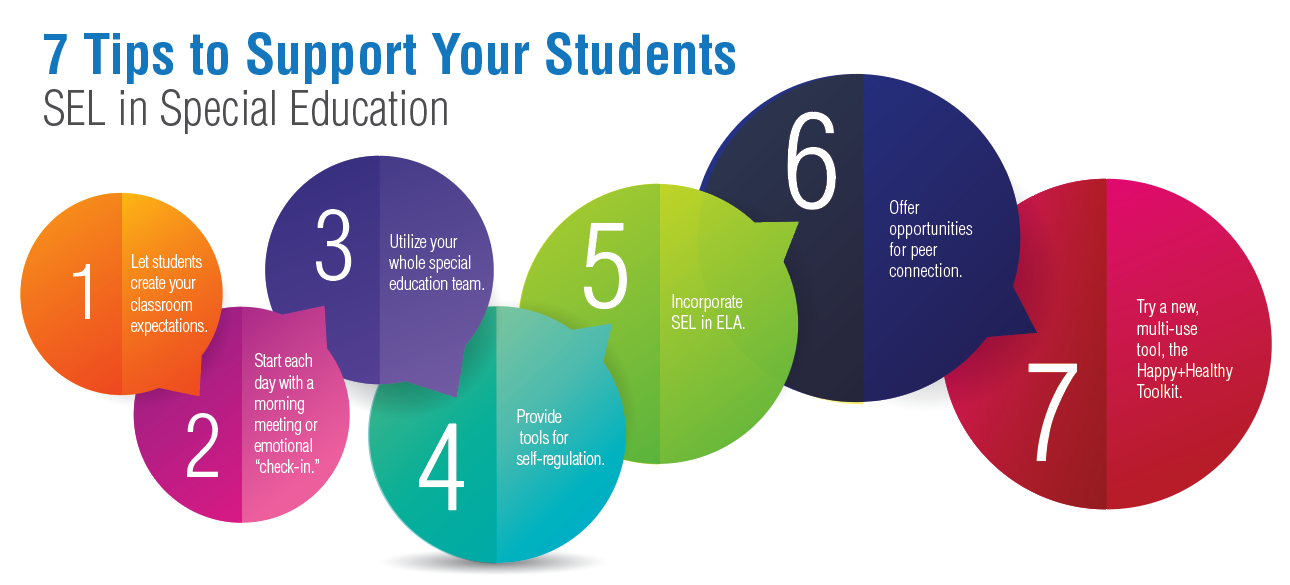
In the second installment of our Social Emotional Learning (SEL) series, we explored student-created classroom expectations and SEL check-ins for students in special education. In this final part of the series we discuss utilizing your special education team, providing tools for self-regulation, incorporating SEL in ELA, offering opportunities for peer connection, and utilizing a new SEL tool. Try implementing one or multiple of these ideas to help respond to student SEL needs now, even during remote or hybrid learning!
3. Utilize your whole special education team.
One of the best parts of special education is that we do not work alone—we have a whole team. I was able to make SEL a consistent, routine part of my last classroom’s weekly schedule with the help of the school social worker, who came to my class once a week and did a SEL mini-lesson with students. This helped me in many ways. First, it made SEL an ongoing part of our classroom and students expected the lesson each week. Second, it was exciting for students to have a new person in the classroom and to be taught by someone other than myself. Third, I was able to participate in the lessons and model SEL competencies. It also helped that my school social worker had fun lessons and activities, so students felt like it was a break from academic work. The school psychologist was also helpful and did mini lessons on executive functioning for our students. Last, I have had the pleasure of working with multiple amazing paraprofessionals who were able to help students with self-regulation, could run small group social skills lessons, and checked in with students. Use your team! Even remotely, the school social worker or psychologist could help with mini-lessons via video conferencing and paraprofessionals could host breakout groups, help you with Google forms, or help find online self-regulation tools.
4. Provide tools for self-regulation.
Every special education classroom needs a space for students to work on self-awareness, self-management, and responsible decision-making. In my classrooms, I have called mine the “Comfy Corner.” In my physical space, I had beanbag chairs and tools for self-regulation, plus a desk away from others. Tools that I liked to have available for students included:
- DIY sensory bottles
- Movement or yoga task cards. This website has many links to free movement activities.
- Social stories, like these free stories about many topics. I also like to use Boardmaker .
- Choice boards for activities to deescalate emotions, such as this example you can download.
- Coloring pages (Yes, even for older students!)
- Small sensory items like fidgets—there are tons on Amazon.
- Visuals I created based on individual student needs
- Different SEL worksheets (very popular with my high school students). Here is an example of one I have used with many students about worrying .
- Sound-blocking headphones
- Task cards with mindfulness tasks such as breathing exercises
Make sure to provide clear expectations for using the tools both in-person and remotely. While the tools above were for in-person teaching, many can be adapted to a remote environment by providing links in a SEL section on your LMS and teaching students and parents or guardians how to use the resources. Here is a digital calm corner that has many activities to help regulate emotions as well.
5. Incorporate SEL in ELA.
[back to top]
One of the easiest ways to incorporate SEL is during English or Language Arts class. Discussions about books, novels, plays, short stories, and news articles are ways to make SEL relevant for students. Examine if character choices are examples of responsible decision-making, or have students discuss what their choice would be. A favorite of mine for discussing responsible decision-making is Romeo and Juliet ; students loved to talk about all the terrible decisions characters made and rewrite the play with their own endings based on responsible decisions. Character analysis can help students understand traits about themselves (self-awareness); they can compare and contrast themselves to characters. Students can also analyze social interactions in literature and discuss if characters have good relationship skills or what they would do differently.
Educators can choose literature that correlates with SEL skills they would like to teach. For younger students, there is a multitude of books you can use to teach SEL— here is a great list from the School Library Journal. Here is another booklist with clear age guidelines from the Center on the Social and Emotional Foundations for Early Learning at Vanderbilt. My daughter and I personally love Giraffes Can’t Dance by Giles Andreae, which is wonderful for self-awareness.
Writing activities are also useful for incorporating SEL. Journal writing is a good activity because it is easily adaptable for all levels of students and for remote learning. Students with more significant disabilities can do journals with sentence starters and picture communication choices. Another great accommodation is adding a word bank to journaling activities. I do not find it useful to correct grammar and spelling in journals; in my experience it made students more self-conscious about their writing and was not the purpose of the activity. The biggest tip I have for this area is to write back! My students have always appreciated comments on their journals, and it’s a great way to continue talking about SEL topics. Here’s a link to a worthwhile SEL journal you can use during distance learning with your students. While it is not free, I think this is an incredible resource as it has intentional, daily prompts related to the five competencies. If you are looking for free resources, this blog broke down SEL writing prompts into the CASEL categories and this website has many different SEL-related writing prompts, including the topics of personal growth , self-esteem and confidence , and kindness , to name a few.
"Every special education classroom needs a space for students to work on self-awareness, self-management, and responsible decision-making."
6. Offer opportunities for peer connection.
Social awareness and relationship skills are so important for making friends, getting and maintaining jobs, and overall student confidence. While I am sure you are providing ways for students you service to connect with each other, whether it’s through sharing projects, morning meetings, breakout rooms, debates, etc., least restrictive environment in special education also includes contact with peers in general education. If you had a “lunch bunch” program at your school, where general education students ate lunch with students in special education, perhaps try to think of ways to make it virtual. For example, students from general education could be guests at a classroom Zoom lunch.
Unified Champions , part of Special Olympics, is an incredible program that pairs students in both special and general education together for sports, and if your school participates these students may be interested in still meeting online and coming up with fun ideas to do remotely, such as online parties and games.
Conversation cards, or cards with prompts for beginning conversations, are helpful for getting students to talk to each other when they have deficits in expressive language, have social anxiety, or simply struggle to come up with topics to discuss with others. These can be used between special education students or with general education peers. Hint: there are tons of these cards for sale on Teachers Pay Teachers . Another activity is to have students write their own conversation cards and then utilize them with peers. Or, you can create class anchor charts such as “Things to Say in the Fall” and have students give suggestions. Students who are nonverbal can use augmentative communication devices preprogrammed with suggestions to choose from.
Role plays are also a fun way for students to practice social awareness, relationship skills, and responsible decision making because students can get up and act out scenarios. It is easy to create your own scenarios by thinking about actual issues happening in your classroom. For instance, I had a student having a difficult time getting his food in the cafeteria and interacting with the cafeteria staff. My class was happy to role play getting their lunch and interacting with staff, having one person act as a student getting lunch and one person act as a cafeteria worker. The student was not singled out, he was able to learn from his peers, and we no longer had social skills issues in the cafeteria with that particular student.
Games, even traditional board games, are a great way to work on all of these skills as well. Taking turns, problem solving, talking to others respectfully, and dealing with winning and losing, are all skills students need in order to be successful. You can also create SEL-specific games, such as charades where students have to guess each other’s emotions. Here’s a fun list of easy games you can play remotely with students.
7. Try a new, multi-use tool, the Happy+Healthy Toolkit.
A new tool that I am excited about is the Happy+Healthy Toolkit . The goal of the toolkit is to equip children and
An Overview of the Happy + Healthy Toolkit from Riverside Insights on Vimeo .
teens with a set of skills to help self-regulate. The toolkit was created with emotional resiliency and trauma-informed care in mind, and based on the concept that students cannot learn if they are not self-regulated. It is composed of a deck of 21 fun, bright-colored cards. The cards are broken down in to seven wellness areas and provide prompts for short, research-based SEL activities. For example, one of the cards in the “Relax” category includes a “belly breath” activity to help calm students. What I like most about these cards is that they have multiple uses: they would be an excellent addition to a “calm corner,” easy to use for mini-lessons, or useful for brain breaks during remote learning. Educators can use the cards with whole or small groups, or students can individually choose cards based on need or interest. The toolkit is accessible for a wide range of students, from pre-k to adolescents, comes in English and Spanish, and has clear, easy-to-read directions and prompts which make the cards perfect for many students with reading disabilities. It is rare to find an activity that is useful in multiple different scenarios, is inclusive of all students, and is easy to use remotely for only $25!
While you wait for your school or district to implement a SEL program, these tips can get you started and on the way to improving your students’ SEL skills. This is by no means a comprehensive guide to SEL strategies and resources; I encourage you to continue learning and implementing new SEL ideas throughout the school year. Do you have any tips to share about SEL? Let us know!
Recommended Articles:
New partnership to keep schools safe through modern student wellness.
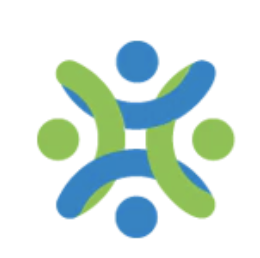
Riverside Insights and CAI Founders to Host Virtual Conference on SLD Identification
Navigating the challenges of identifying sld and id, subscribe to our newsletter.
We hate spam. You’ll only receive essential emails.
Submit a Comment
Click here to subscribe
Stay up to date
At Riverside Insights, we share your commitment to helping individuals elevate their learning potential-from early childhood through their academic journeys, and for the rest of their lives.
Popular Post
Recent posts.
- Grades 6-12
- School Leaders
Enter Today's Teacher Appreciation Giveaway!
Every product is independently selected by (obsessive) editors. Things you buy through our links may earn us a commission.
50+ Simple Social-Emotional Learning Activities for All Ages
Easy, meaningful, and important.
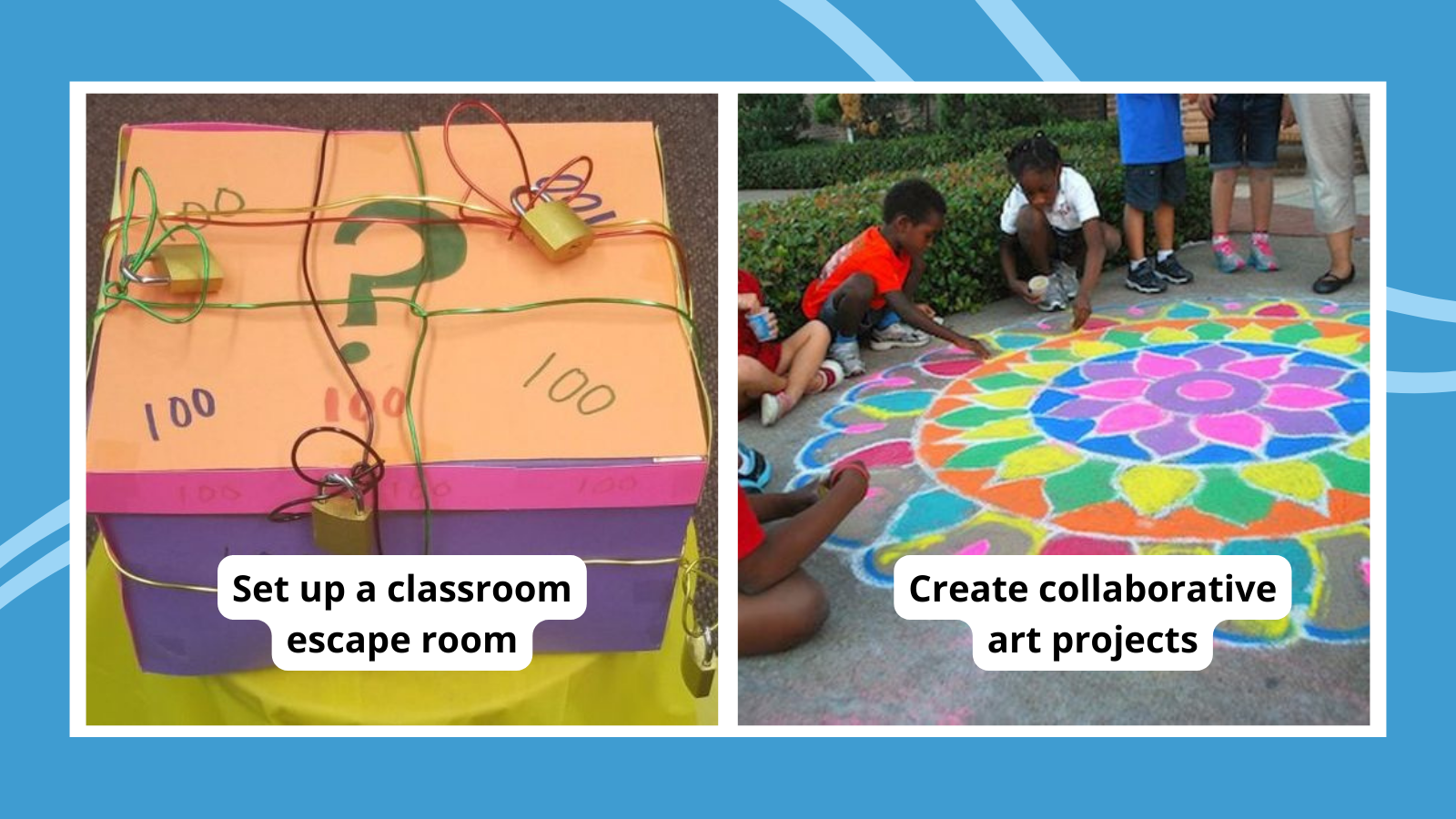
Kids have a lot to learn, in and out of school. In addition to knowledge and skills in areas like reading, writing, science, and math, students need social-emotional learning (SEL) too. SEL teaches soft skills like communication, self-awareness, regulating emotions, and more. Some schools use a set SEL curriculum, but there are lots of easy ways to include social-emotional learning activities in your everyday routine. Check out these ideas and try them with your own students.
New to social emotional learning? Start here.
Self-Awareness and Self-Management SEL Activities
Social awareness and relationship skills sel activities, responsible decision-making sel activities.
These social-emotional learning activities help kids recognize their own emotions, thoughts, and values. They also teach skills like impulse control, self-discipline, and handling stress and anxiety.
Put up an emotions bulletin board
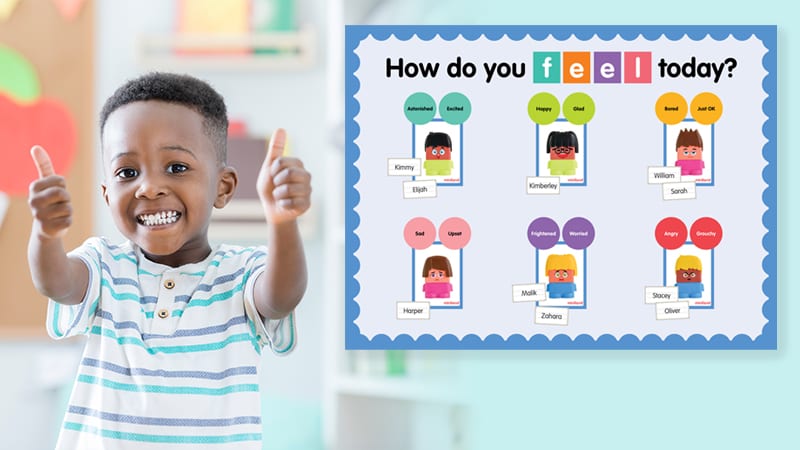
Little kids have big feels, and they need to learn the words to match their emotions. That’s where this free bulletin board kit comes in! Use it to talk about the emotions kids experience throughout the day, teaching them to name how they’re feeling. Get your free printable emotions bulletin board kit here.
Set up a calm-down corner
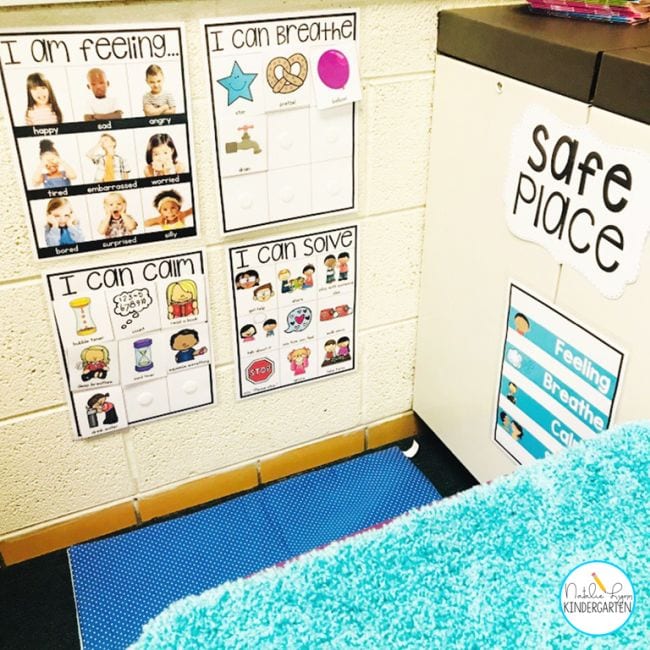
These have become really popular in elementary school classrooms, but older kids and teens can also benefit from a safe space to sit apart and get their emotions and behavior in check. Learn how to create your own classroom calm-down corner here. No space for a whole corner? Try putting together a calm-down kit instead.
Use transition times for mental and emotional health check-ins
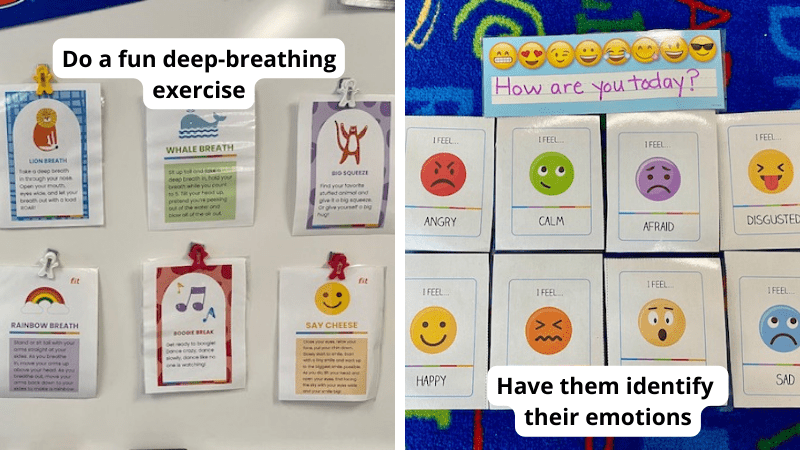
School kids spend a lot of time getting from one activity to the next. Elementary kids line up and follow each other to their next class or special, while middle and high school kids change classes every hour or so. Teachers can use these times to offer an anxiety buster (like doing a yoga pose while transitioning from seat work to lunch time), or reaching out to students who seem to need a friend that day. See more ways to use transition times for SEL activities here.
Introduce the Zones of Regulation
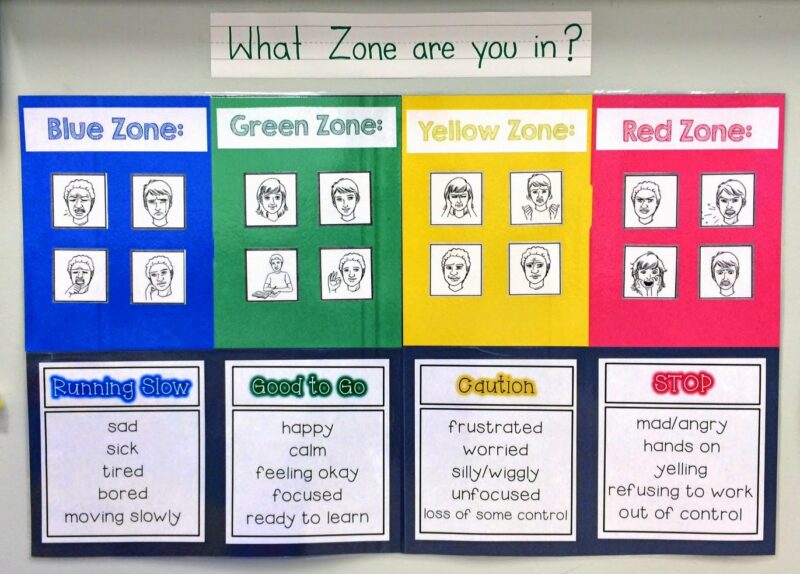
The Zones of Regulation were developed by Leah Kuypers, an OT and autism resource specialist, to help kids understand and learn to manage their emotions. Rooted in cognitive behavioral therapy, it’s a framework that uses four colors—blue, green, yellow, and red—to help students identify their feelings and levels of alertness. Once they identify what zone they’re currently in, they can use various social-emotional learning activities to move into a better, calmer zone. Here are some terrific Zones of Regulation activities to try with your students.
Create calm-down jars
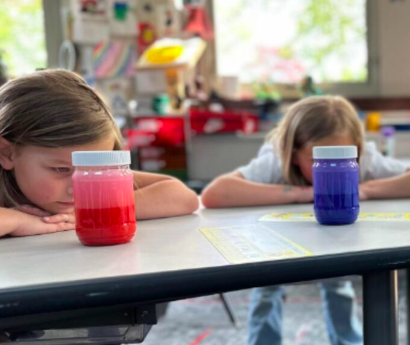
This is one of our favorite social-emotional learning activities because it’s also a craft project and STEM experience! Learn how to make calm-down jars and get ideas for using them here.
Try calming mind-body exercise worksheets
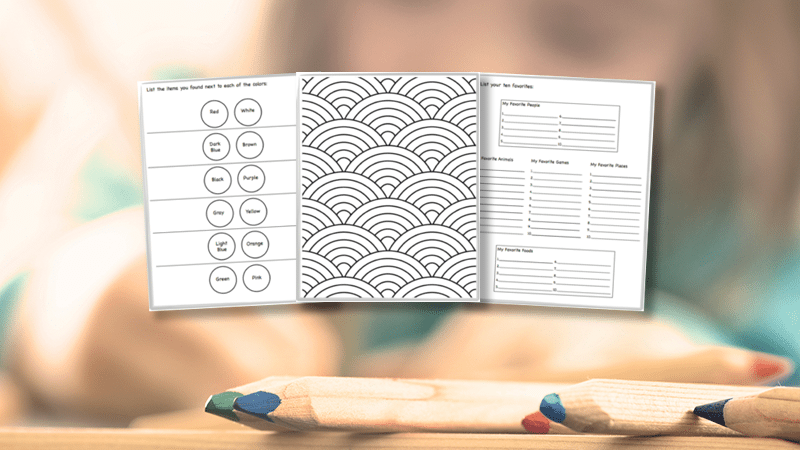
All students can benefit from activities like mindful breathing and visualization, giving them ways to calm their minds and regulate their emotions. Find some helpful free worksheets adapted from Starr Commonwealth to get kids started here.
Give out alternative progress reports
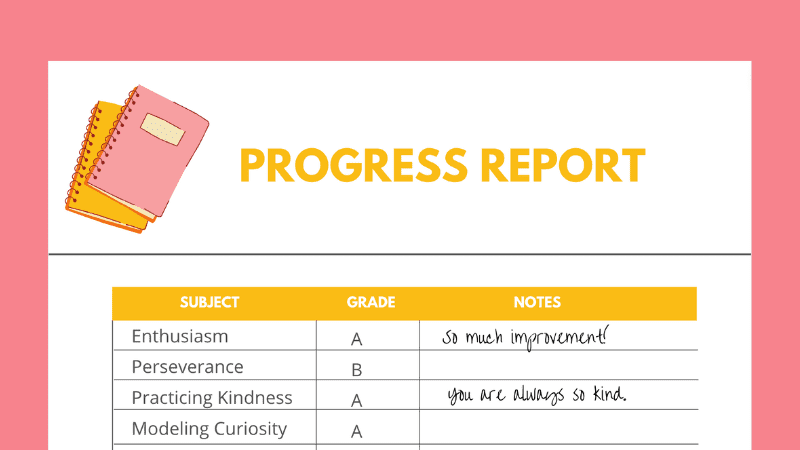
We love the idea of giving kids and their families feedback on their SEL skill development! An alternative progress report like the one this teacher uses can help kids zero in on their strengths and weaknesses. Find out how it works here.
Include music education in your curriculum
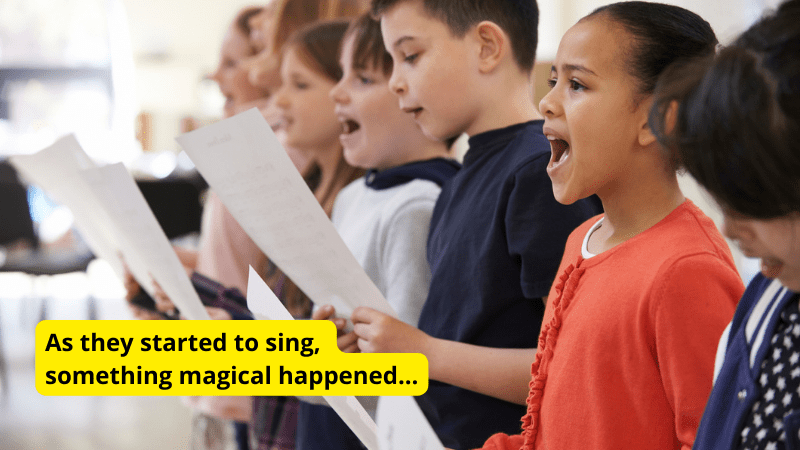
Music education programs are full of social-emotional learning activities. They teach personal awareness, cooperation, and collaboration, along with fostering a sense of personal pride and achievement. Music opens doors to other cultures and helps build self-confidence, while also providing many people with relief from stress and anxiety. If your school doesn’t offer music programs, look for ways to add them to your own daily classroom routines. Learn why music education is more important than ever here.
Write in mindfulness journals
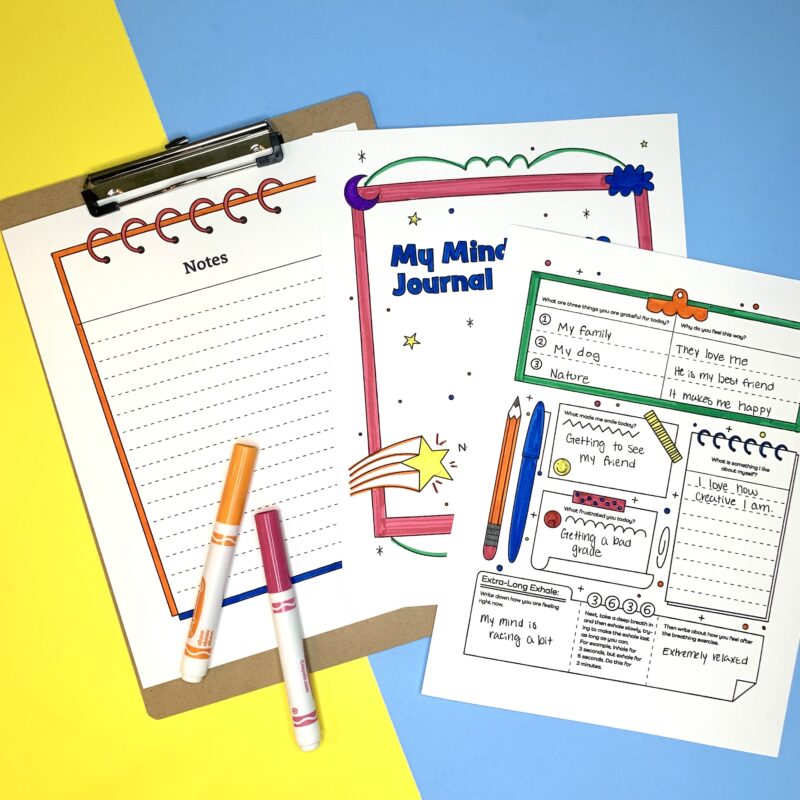
Journaling has so many benefits for kids and adults alike , including helping us deal with stress and anxiety. Any time kids spend writing and reflecting is valuable, but you can make the process even more meaningful with our free Mindfulness Journal kit. It even includes a teachers guide to help you make the most of it! Grab your free Mindfulness Journal kit here.
Build emotional resilience in just one minute
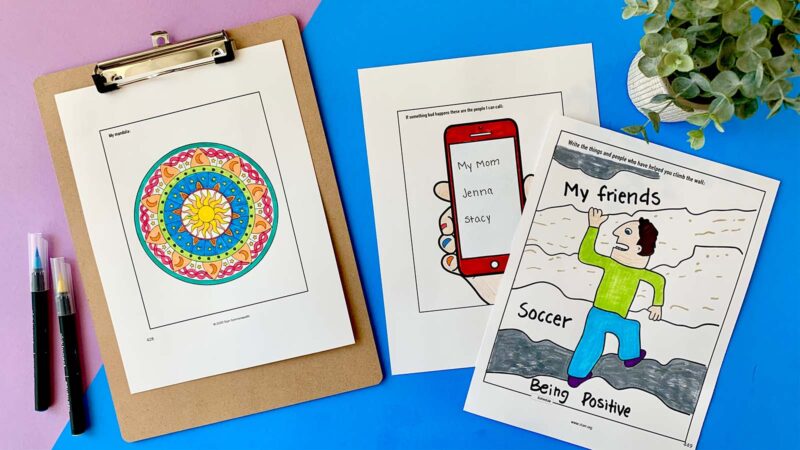
Emotional resilience, a person’s ability to “bounce back” after setbacks, to learn from past failures and be willing to try again, is vital to students’ long-term success. We need to give kids tools to deal with the challenges life will throw at them. Find five simple one-minute SEL activities for building resilience here.
Learn positive self-talk
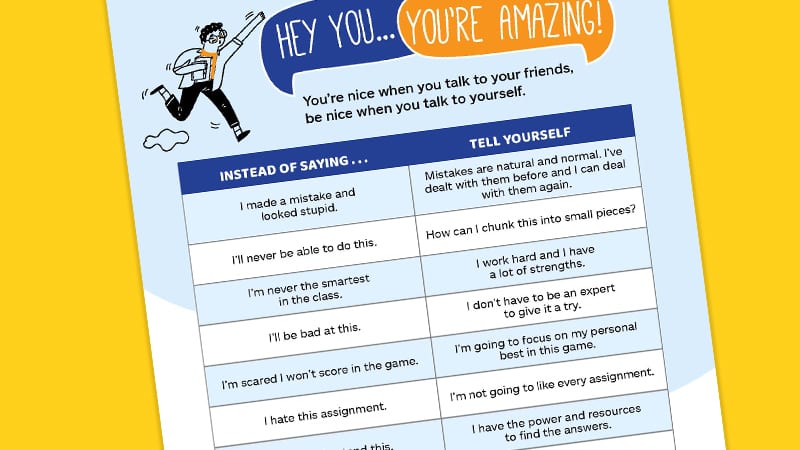
Our inner voice has a lot of control over how we think, feel, and act. Most of the time, it’s helpful. But sometimes, our inner voice becomes our harshest critic. That’s why we need to teach kids the importance of positive self-talk. Grab our free printable self-talk poster to hang in your classroom , and help students remember that they need to be their own #1 biggest fan.
Cue up GoNoodle
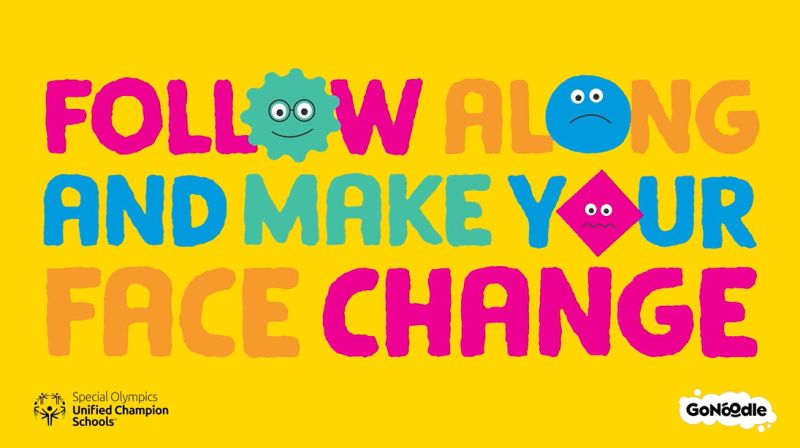
Kids and teachers both adore GoNoodle videos. They’ve got a nice roundup of mindfulness options and brain breaks, perfect for helping kids regulate emotions throughout the school day. See all of our favorite GoNoodle videos here.
Make DIY stress balls
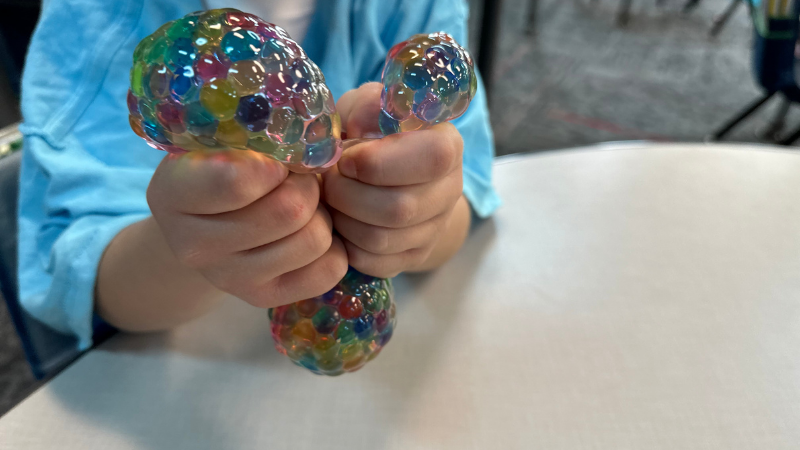
Part classroom craft project, part SEL activity, DIY stress balls are so much fun! We’ve got four different ideas for making them, with easy-to-find materials like balloons or slime. Get the DIY instructions for all of them here.
Welcome a therapy dog into the classroom
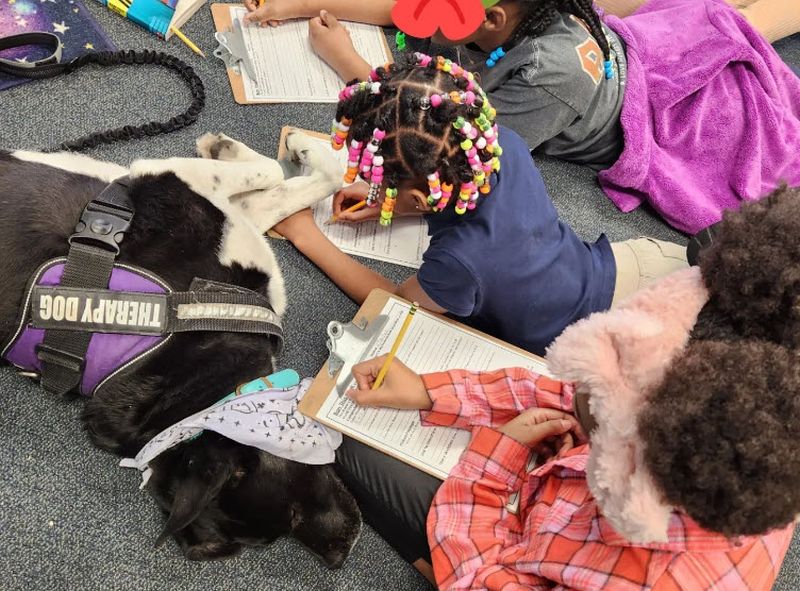
This won’t work in every learning environment, but when it’s a possibility, it can be a real game-changer! According to one study published by the National Institutes of Health (NIH) , having a dog present in the classroom promotes a positive mood and provides significant anti-stress effects on the body. Learn more about pet therapy in the classroom here.
Assign classroom jobs
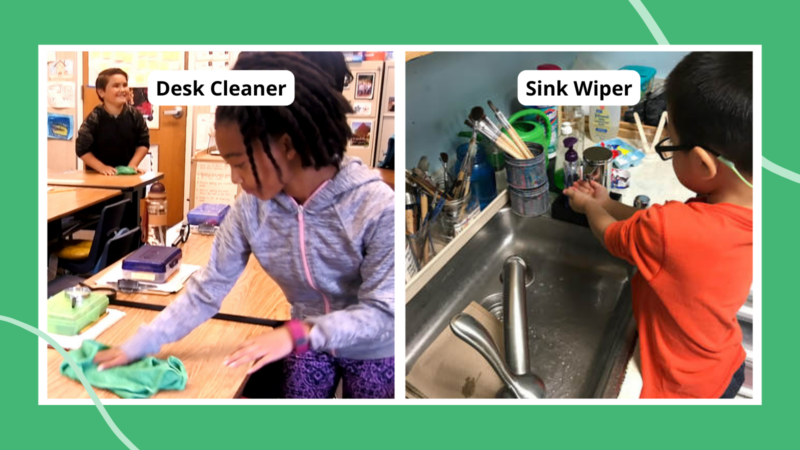
Classroom jobs are standard in most K-5 classrooms, and some of them can work all the way through high school. They’re a good way to make overall classroom management easier on the teacher, but they also help teach kids a sense of responsibility and self-confidence. See our big list of classroom jobs for preK-12 students here. (Feel like keeping track of classroom jobs is too complicated? Try the Star Student system instead! )
Read a mindfulness picture book (at any age)
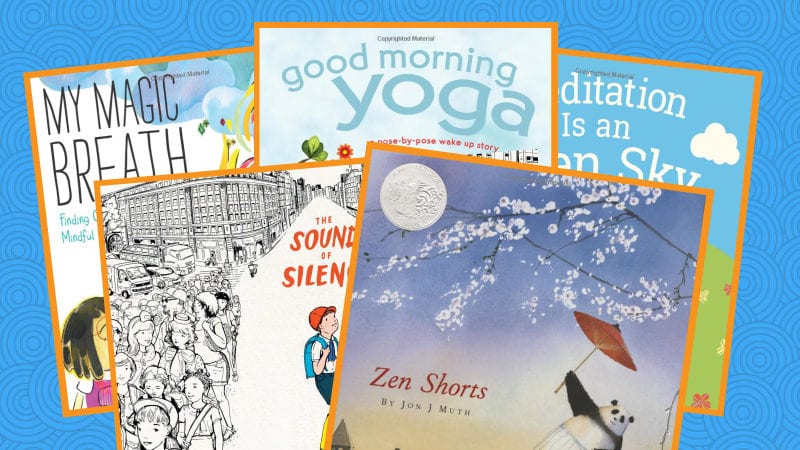
Picture books aren’t just for toddlers! In fact, middle and high school students often really enjoy a chance to revisit a childhood favorite or discover a new one to share with their younger friends and family members. Many picture books encourage social-emotional learning, so they’re great for starting classroom discussions from kindergarten to senior year. See our favorite mindfulness picture books for any age here.
Use an app to manage stress and anxiety
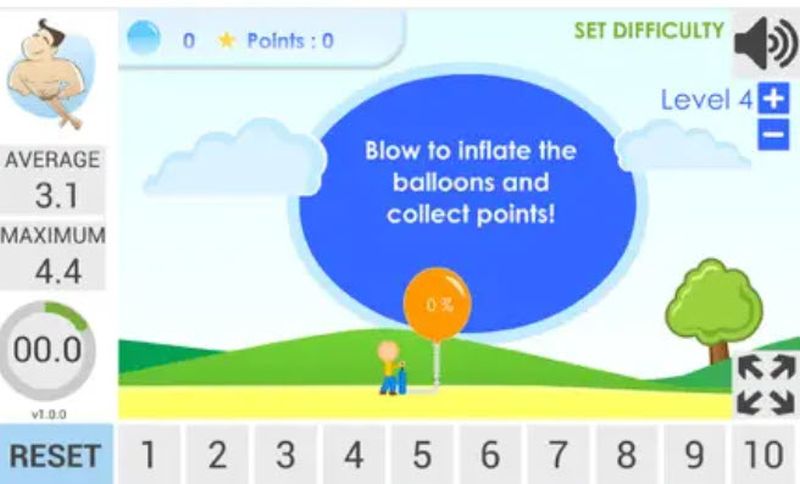
For younger kids, install apps like Balloon Breathing or Positive Penguins on classroom tablets. If your students are old enough to have their own phones and devices, introduce them to popular apps like Calm and Headspace. Find a roundup of the best apps to combat stress and anxiety for kids, teens, and adults here.
Share daily affirmations
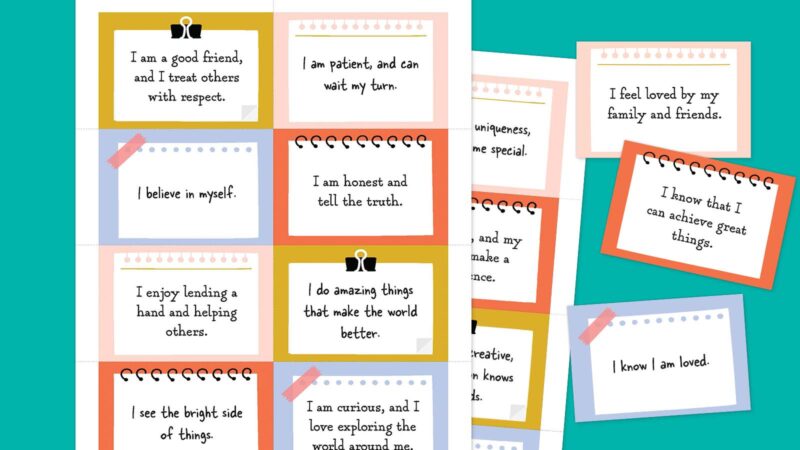
Positive affirmations for kids serve as powerful tools to instill confidence, resilience, and joy in their hearts. If you’re looking for ways to make a significant impact on the development of the children around you, our free collection of uplifting, printable affirmation cards is a great place to start. Snag your free set here.
Set and track actionable goals
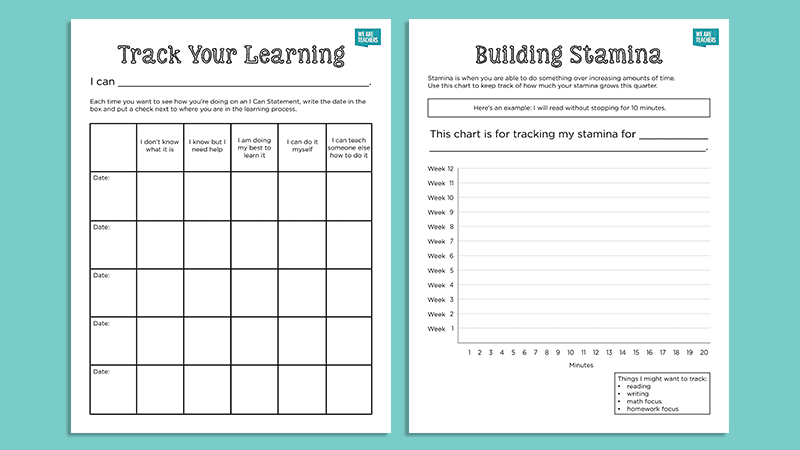
Setting goals is a vital skill, one that keeps us organized, ambitious, and on-track. But this isn’t a skill that comes naturally. We have to teach students how to set meaningful, reasonable targets, and then give them the tools to track their progress. Try resources like our free Back-to-School Goal Setting page or Goal Tracking and Stamina worksheets to help kids with these important social-emotional learning activities.
Track important habits
Getting into the groove of a new habit takes persistence, an important SEL skill. Many people use habit trackers to stay on target, marking down their progress each day. Habit trackers are a terrific tool for kids, so we’ve created a whole year’s worth of fun trackers for them to use. Get the free printable set here to share with your class.
Use these social-emotional learning activities to develop a sense of empathy, compassion, and social justice. Activities like these also help kids relate to one another, communicating effectively and learning healthy ways to resolve conflict.
Break the ice

Icebreakers are great for the first day of school, but you can actually incorporate them all year long. Use them when you form new project groups, or when you change the seating around in your room. They’ll help kids meet new people and form unexpected friendships. Try these 200 fun icebreaker questions for kids and teens.
Hang kindness posters
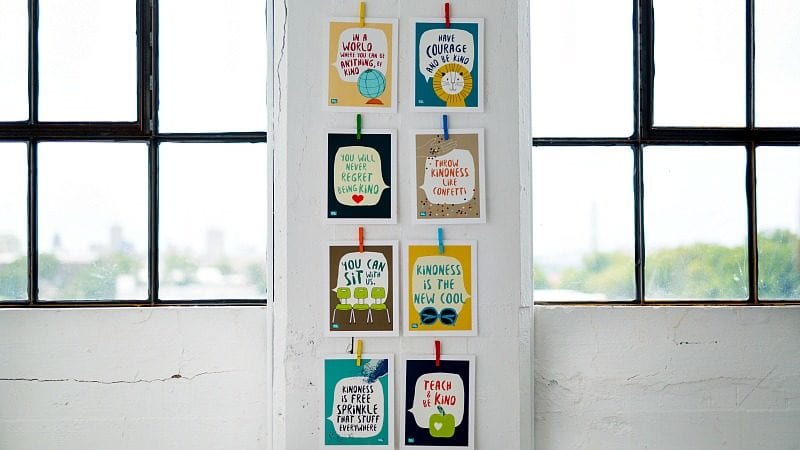
This free set of printable kindness posters helps spread important messages. When you first put them up, take time to discuss them with your students. Ask them for examples of what kindness looks like, and encourage them to share stories of a time when their kindness made a difference. Get the full free printable set of posters here.
Be an upstander
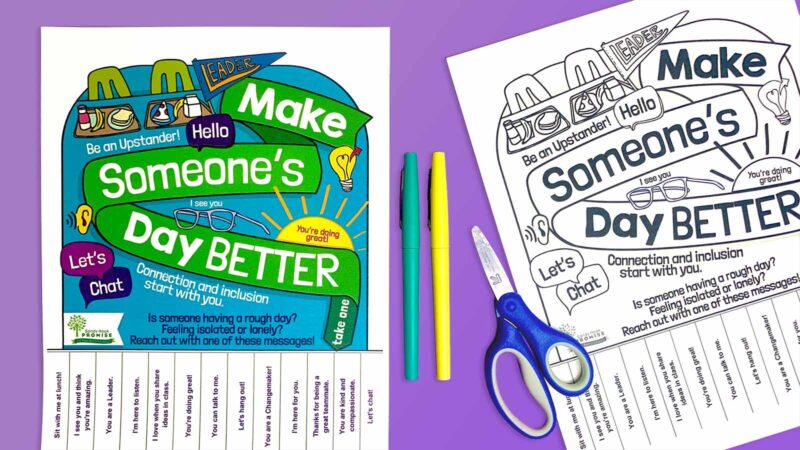
Upstanders reach out to others, especially those who seem like they might be hurting or struggling. Teach kids about the concept, and hang these free printable upstander posters in your classroom. The tear tags offer specific social-emotional learning activities kids can try to help their peers. Get the posters here.
Recognize your students’ diversity

It’s so important for kids to start recognizing the wide variety of cultures in their community and around the world as soon as possible. This set of free worksheets has options for grades K-5 , and offers ways to learn more about each student’s family, background, and experiences. Use them in the first week of school, or any time you want to help your students make a deeper connection with one another.
Stress the importance of names
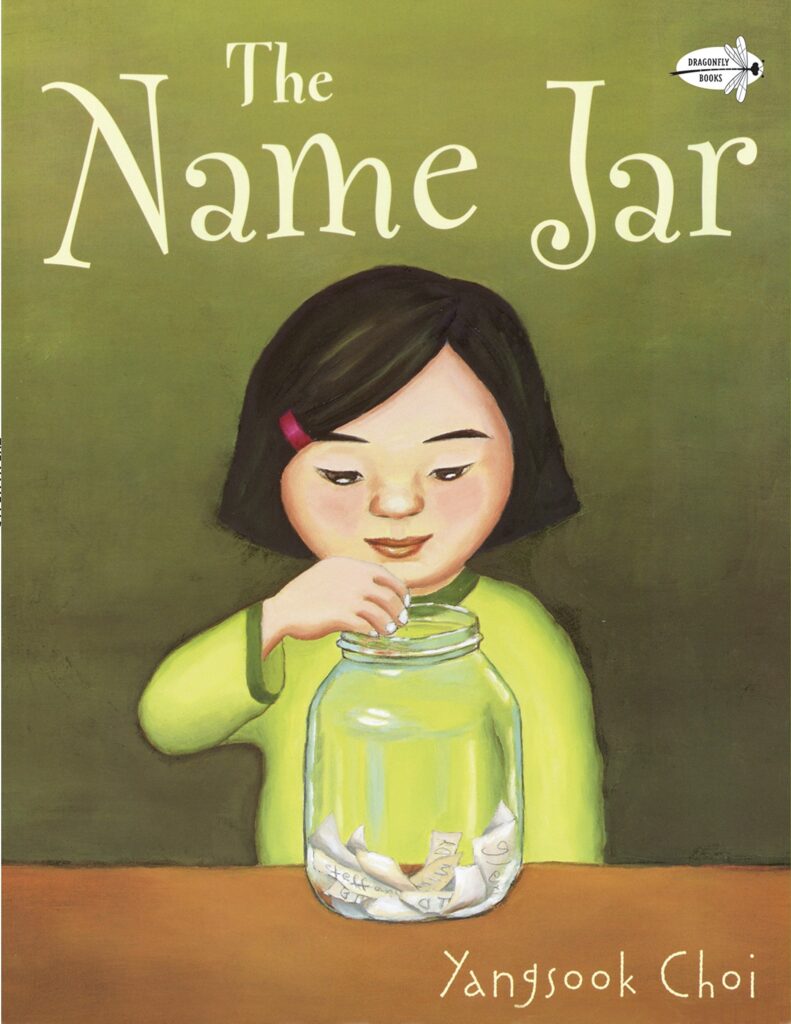
Our names are closely tied to our personal identity, and they often represent a lot about our own culture and background. When a teacher refuses to call a student by their preferred name, or makes up a nickname for a name they have trouble pronouncing , this sends the wrong message to students about acceptance and diversity. As a teacher, learn and correctly pronounce your students’ preferred names , and help your students do the same for their peers. Celebrate the importance of names by sharing this roundup of books with kids .
Fill a bucket
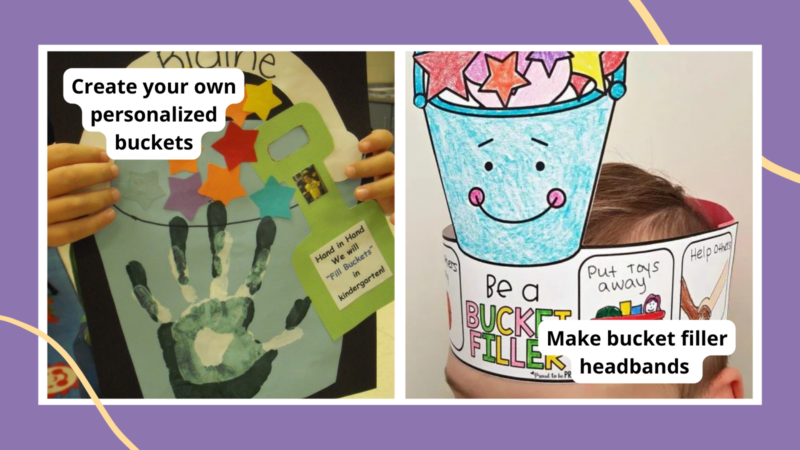
Is your class familiar with the concept of bucket fillers and bucket dippers? Start by reading the sweet SEL book Have You Filled a Bucket Today? Then, use bucket-filling activities in your classroom from our huge list of ideas here .
Learn what healthy friendship looks like
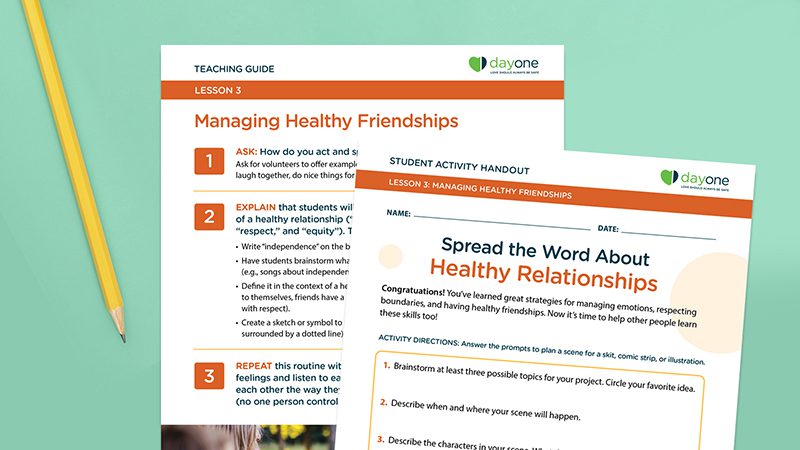
Kids learn a lot about making friends on their own through trial and error, and that’s good. But somewhere in the middle school years, it’s a good idea to check in with them and help them recalibrate any misconceptions they have about healthy relationships. Use our free Healthy Friendships Guide to cover this important SEL topic with your students.
Watch friendship videos …
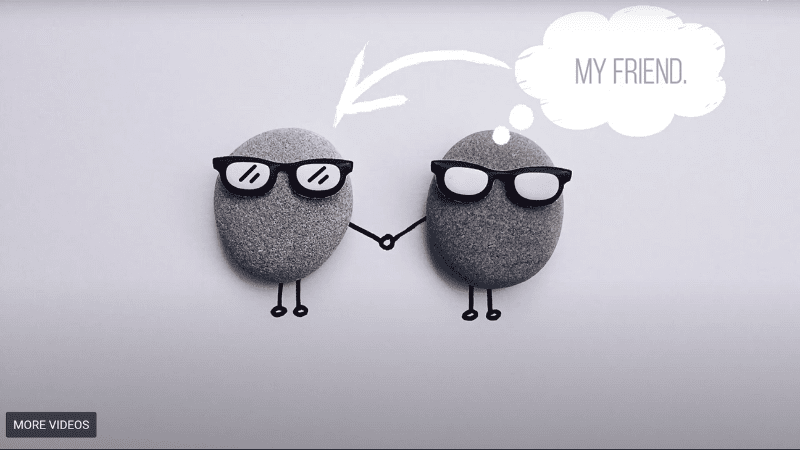
Everyone can use a reminder about how to make and keep friends. We especially love videos that put an emphasis on celebrating kindness and valuing our differences. Check out our big roundup of friendship videos for all ages , perfect for jump-starting conversations with your students.
… and anti-bullying videos
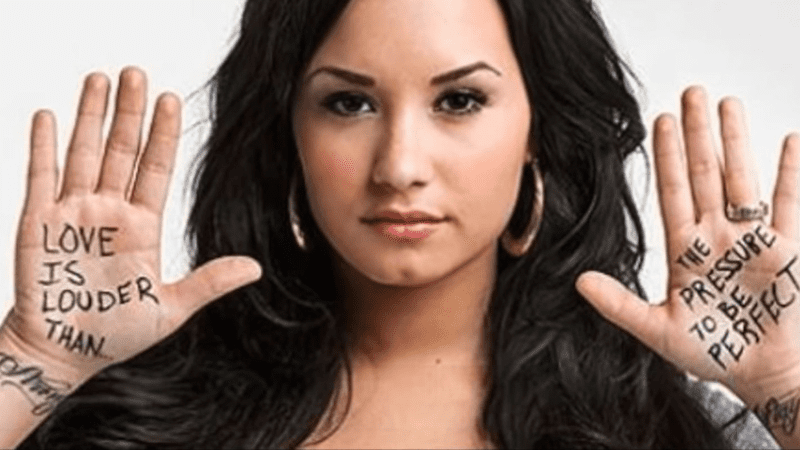
Bullying is an incredibly tough topic to tackle in the classroom. But the more we talk about it, the better our chances of making things safer for all kids. Try our list of anti-bullying videos to start conversations and encourage kids to respect one another and themselves.
Discuss and write about empathy

Empathy can be a challenging concept to teach, but the more you give kids a chance to recognize and practice it, the better they’ll get. Use our list of 30+ empathy prompts to kick-start classroom conversations, or as daily journaling prompts to get kids thinking. Get the full list of prompts here, along with a free slideshow you can use in your classroom.
Use Band-Aids to learn about fairness
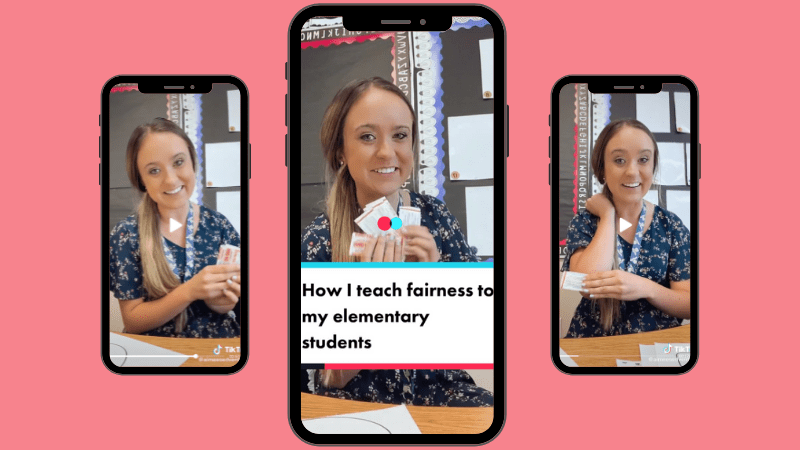
Tired of hearing kids whine, “But that’s not fair!”? You’ll want to try Aimee Scott’s fairness lesson with your class. Her quick and simple exercise helps kids understand that fairness doesn’t mean everyone gets the same thing—it means everyone gets what they need to be successful. Learn how the Band-Aid lesson works here.
Take the 30 Days of Service Challenge
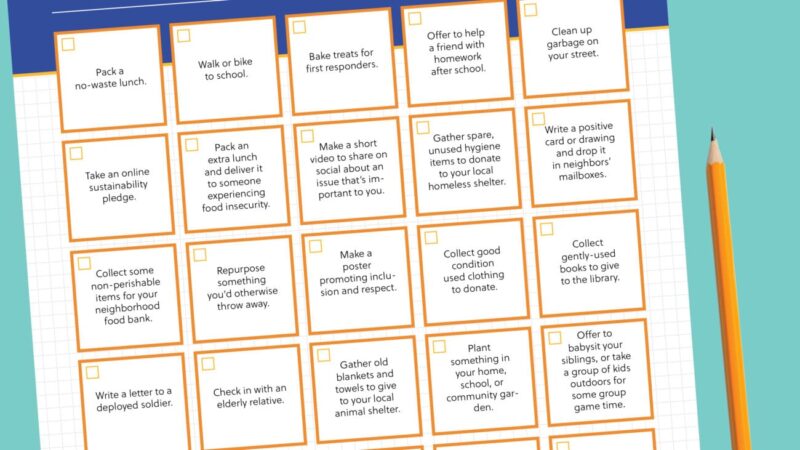
Demonstrate the value of helping others with this challenge, which asks kids to do one act of service for someone else each day. Use our checklist for concrete suggestions for specific acts kids can try, and encourage them to check off one block every day for a month. Grab the free printable 30 Days of Service Challenge checklist here.
Play a cooperative game
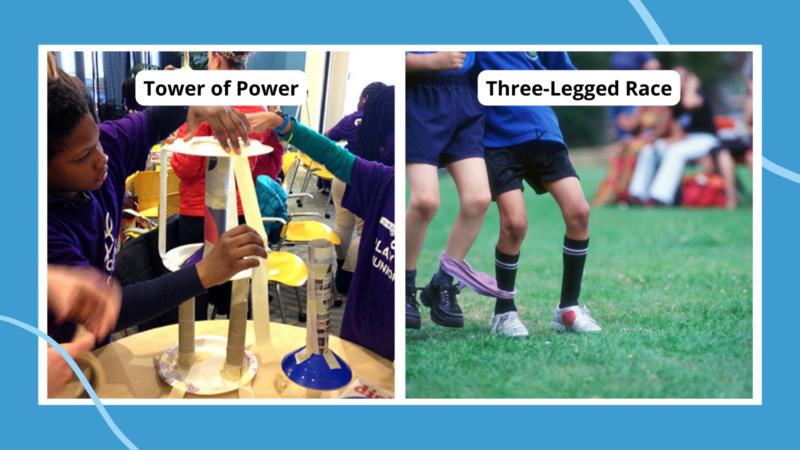
Kids get plenty of exposure to healthy (and unhealthy) competition, so use classroom time to shift the focus to cooperation instead. Cooperative games encourage kids to communicate, collaborate, and problem-solve together. Here’s a big roundup of some of our favorites, with options for all ages and abilities.
Print some free and easy kindness worksheets
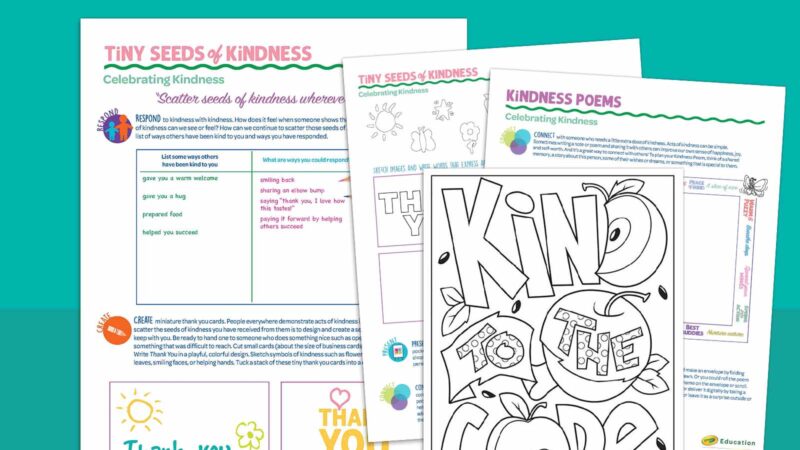
Sometimes you just need some simple activities you can print and use, without any additional prep. That’s why teachers will love this collection of free printable worksheets that teach kindness to elementary kids. Find poems, coloring pages, writing activities, and more. Get the whole collection here.
Create collaborative art
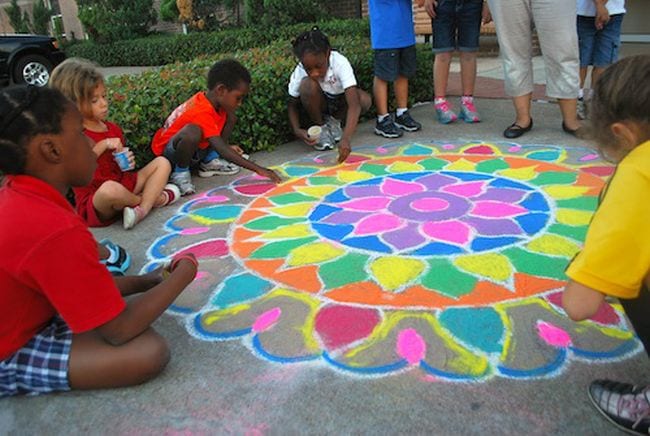
Art is about expressing your individuality, but you can also make something pretty incredible when people pool their talents. Murals, hallway and bathroom displays, kindness rock gardens, and other art projects bring students together to bond over creativity and artistic vision. Find dozens of unique collaborative art projects for kids in pre-K through high school here.
Thank school support staff
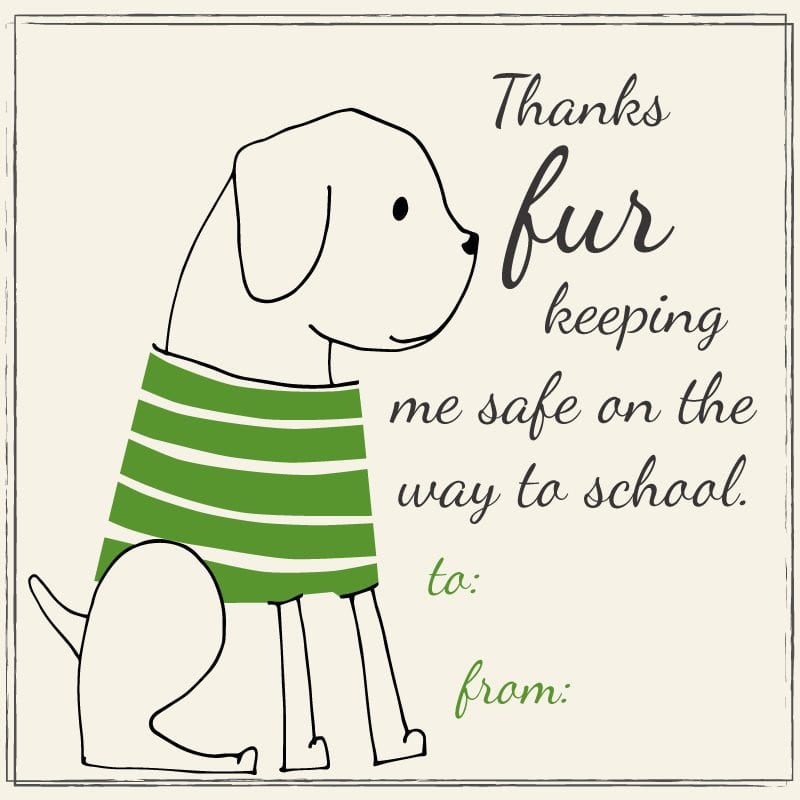
Showing sincere appreciation and gratitude is a social skill that kids can start to develop at a young age. One nice way to practice is writing thank-you notes to support staff at your school, like custodians, librarians, and more. Make this one easy by having kids write a personal message on these free printable thank-you cards .
Conduct a debate
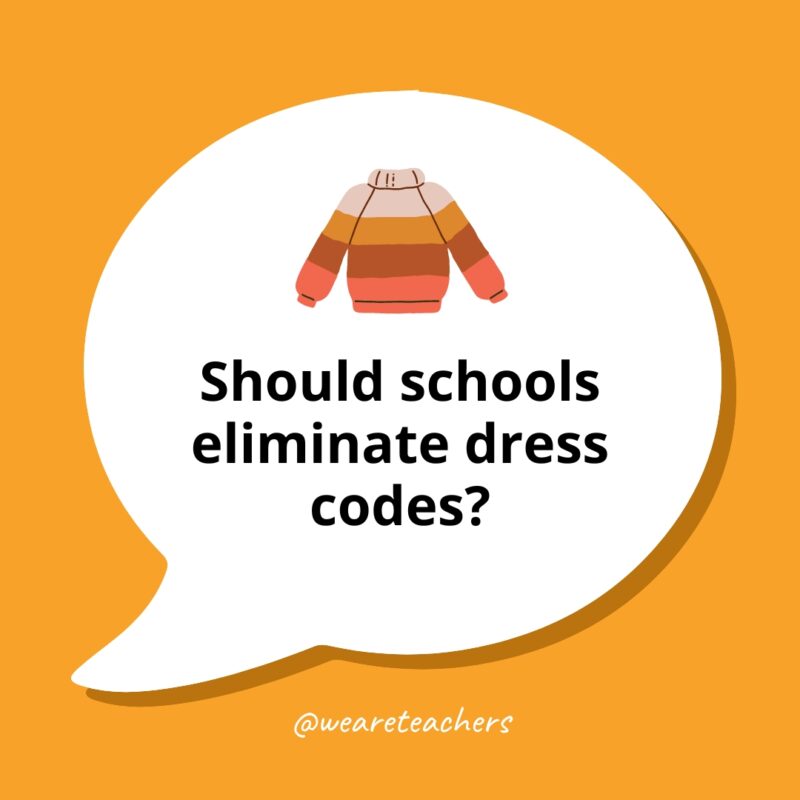
Debates teach students to respectfully disagree and also support their own opinions with real facts. Start with funny debate topics like the ones found here , then move on to more serious concepts with these middle school debate topics and high school debate topics . To really encourage respect and constructive discussions, try these controversial debate topics with your classes .
Engage in fishbowl discussions
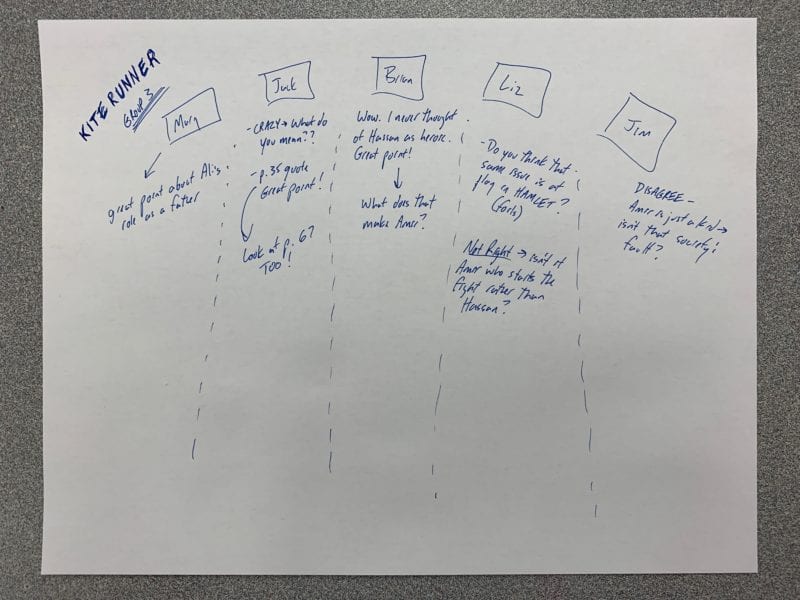
Encourage active listening and communication skills with this classroom idea. After taking some time to think about a topic, a small group of students discusses the issue while other students watch and take notes. After a time, the teacher opens the discussion to the entire group, using notes they made while they watched the small-group discussion. Learn more about the fishbowl discussion method here.
Post a sticky-note whiteboard question
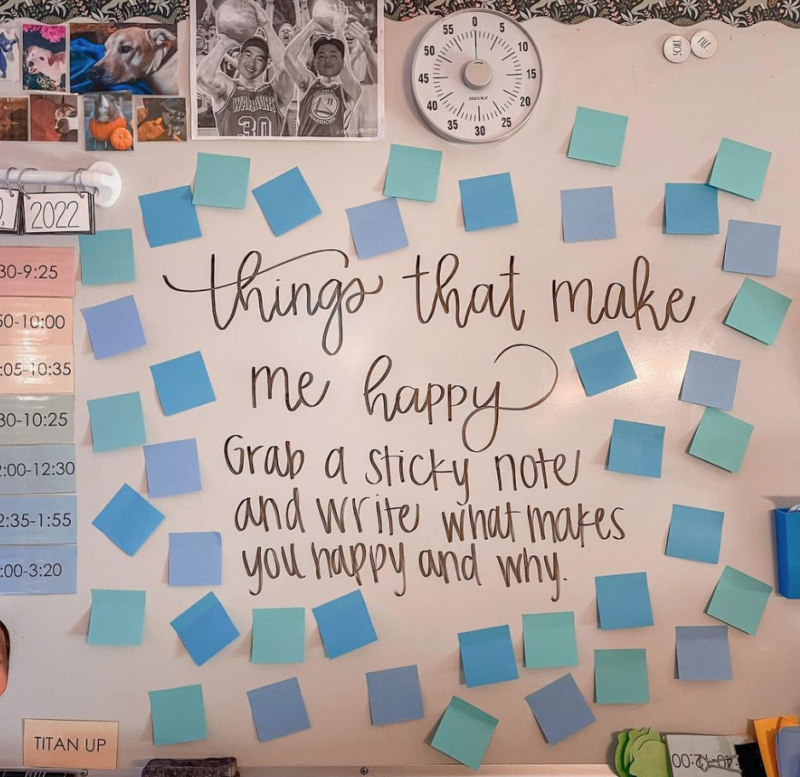
Teacher Erin Castillo popularized this concept on her Instagram account , and now teachers everywhere use this idea. We love it as a unique way to take attendance or as a bell ringer/entry activity. All you do is post a question on your whiteboard, and ask students to respond (anonymously or with names attached) using sticky notes. You can use “Would You Rather” questions , or try these SEL prompts to really get students thinking and sharing.
Do some team-building activities
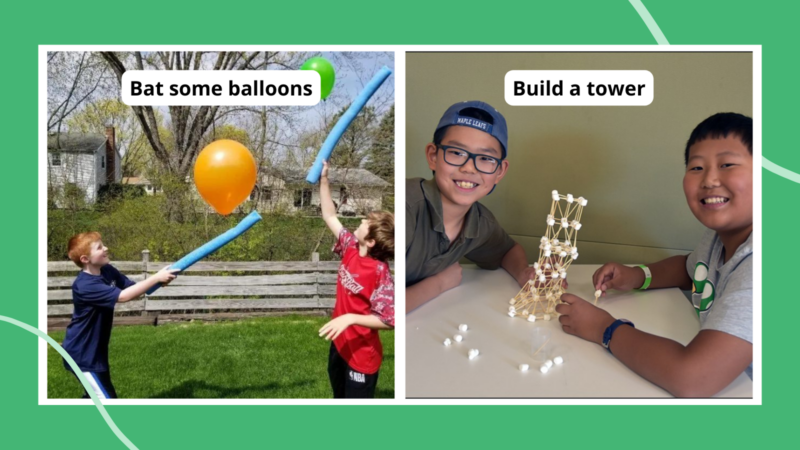
Some people love teamwork, while others would much rather work on their own. But everyone needs to develop the right skills to work as part of a team. One fun way to encourage kids to focus on cooperation, communication, and collaboration is to try a team-building activity. This big roundup includes ideas for all ages and abilities.
Teach important skills like critical thinking and ethics with these social-emotional learning activities. Help students separate fact from opinion, and consider the impacts of their decisions on others.
Play board games
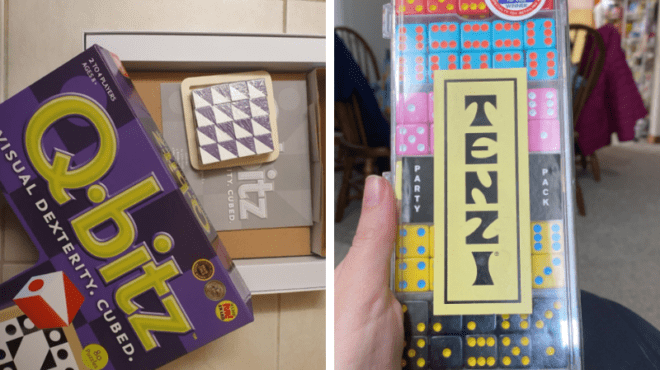
Whether kids are playing to win or working together to achieve a common goal, board games teach lots of decision-making skills. Players have to analyze information, consider their options, and imagine the impacts of their moves on themselves and others. Check out some of our favorite classroom board games here.
Ask philosophical questions
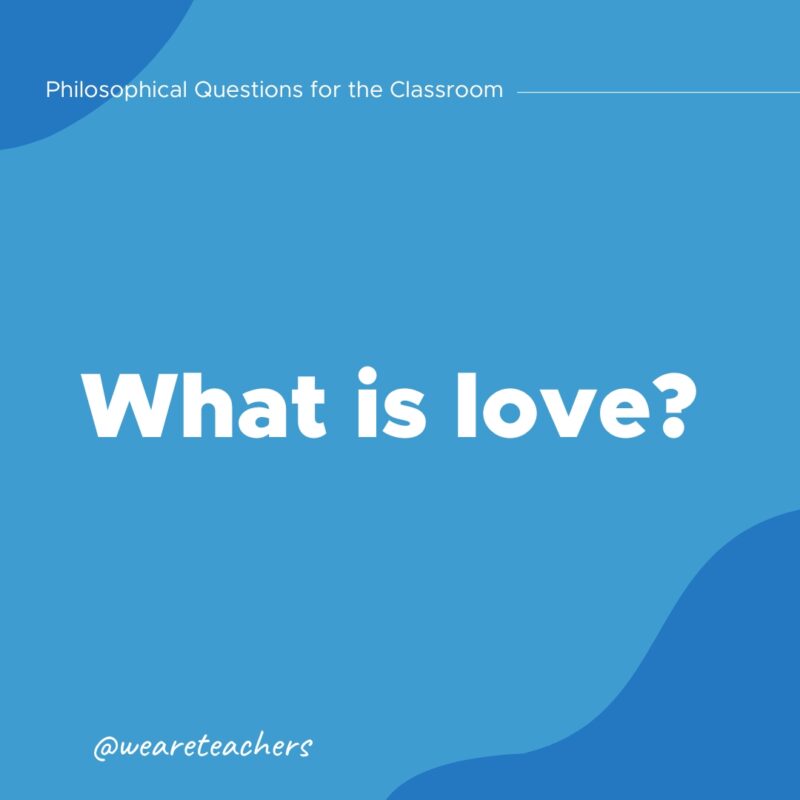
One of the most incredible ways to encourage critical thinking and self-exploration is to ask kids thought-provoking questions. Hearing the responses and exchanging ideas can really expand our perspectives and leave us with important food for thought. Find a list of 125 philosophical questions for kids and teens here.
Explore financial literacy with Dollars & Decisions
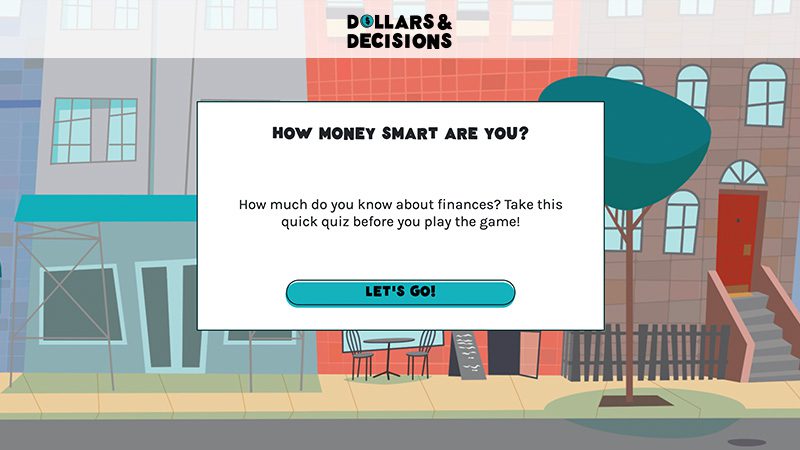
Dollars & Decisions is a free “Choose Your Own Adventure”–style interactive course designed to introduce basic financial literacy to students in grades 8-12. It can help them make smart money decisions, now and in the future. Learn more about the program and get the free teacher guide here.
Get a classroom pet
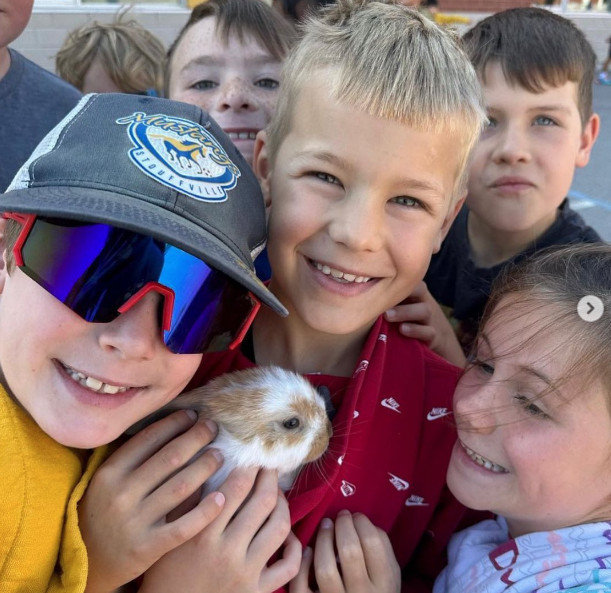
Want to teach kids about responsibility in an incredibly meaningful way? A class pet could be the answer! When kids work together to care for a hamster, goldfish, lizard, or tarantula(!), they have to make responsible choices about what’s best for the animal. Sure, it’s a challenge for the adults involved, but the benefits can really add up. See a teacher-approved list of the best classroom pets here.
Set up an escape room
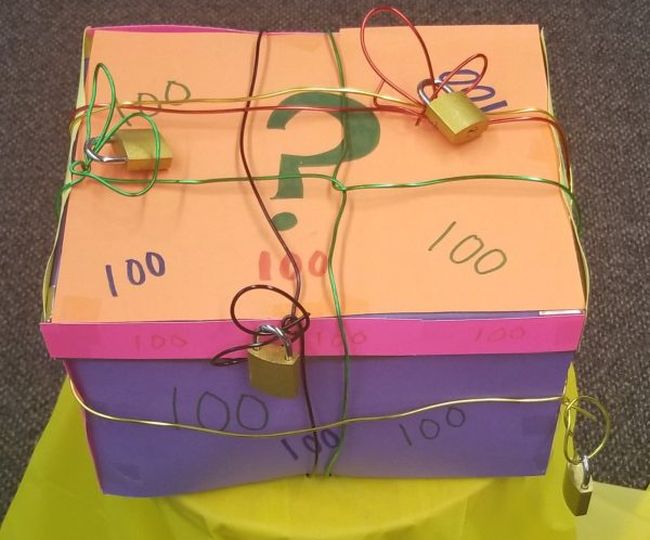
Students love the interactivity of an escape room, where they have to work together to solve a series of problems before their time is up. Escape rooms encourage a lot of responsible decision-making skills, both individually and as a group. Learn how to set up your own classroom escape room here , or check out this roundup of escape room games .
Use Choice Boards
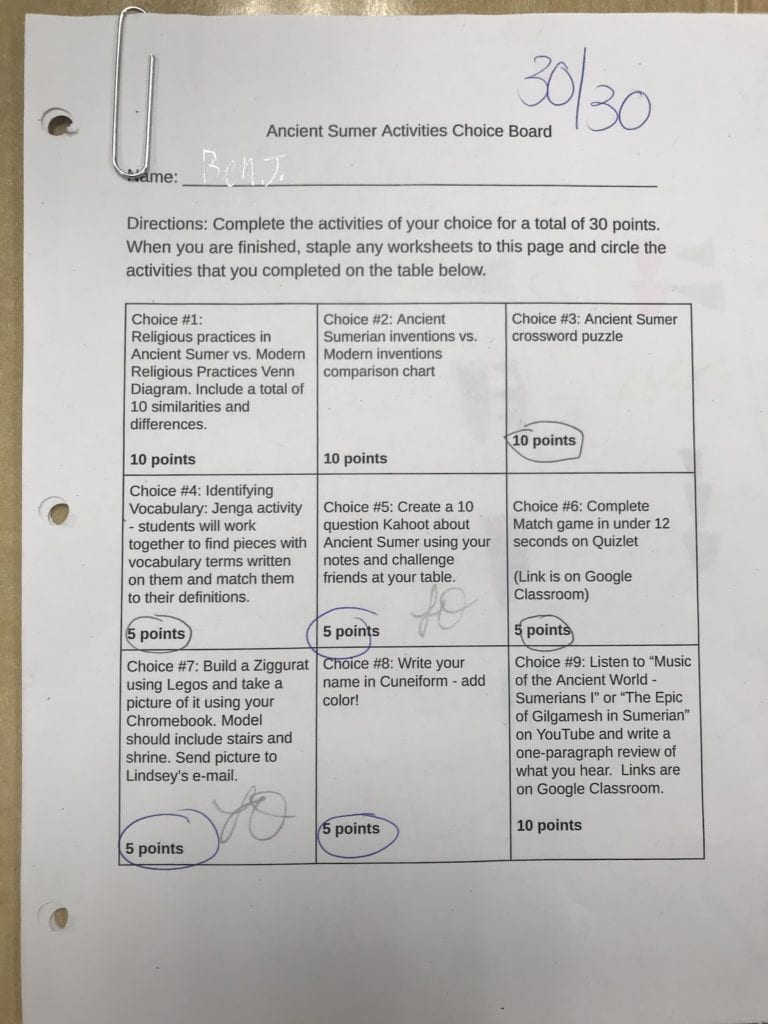
If we want kids to make smart decisions, we’ve got to give them the chance to make choices on their own. One way to do this in the classroom is Choice Boards. These interactive tools give kids several options to choose from on an assignment. They can evaluate the possibilities, and choose the one that seems right to them. Find out how to use Choice Boards with your students here.
Explore safe choices
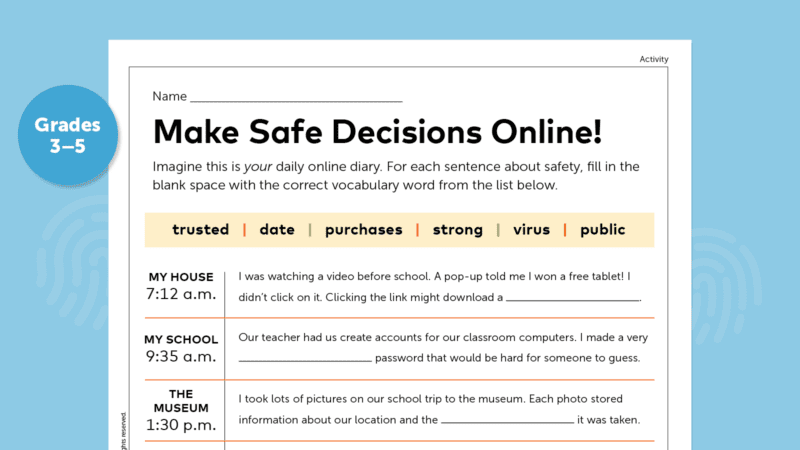
Let’s face it: Kids and teens aren’t necessarily focusing much on safety—their own or anyone else’s. So it’s important for the adults in their lives to help them learn why safe choices matter, and what they look like to begin with. We’ve got resources for talking to students about prescription drug safety , internet safety , bike safety , underage drinking , and inclusive sex ed .
Play Dungeons & Dragons
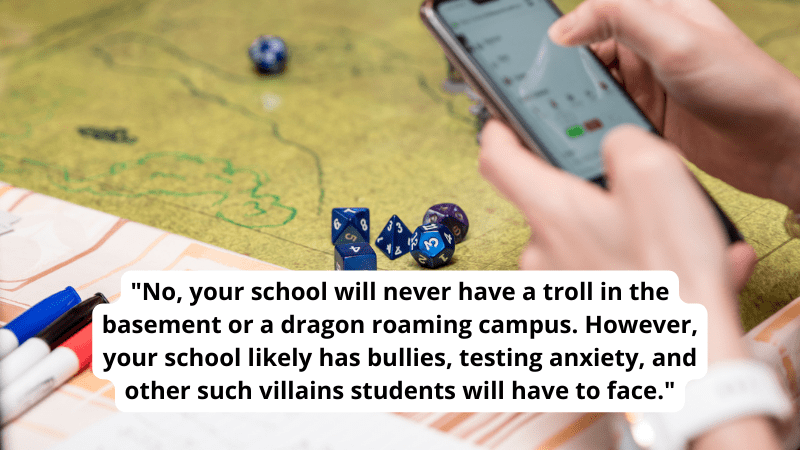
Dungeons & Dragons (D&D) can be a fantastic classroom game, and it encompasses a wide range of social-emotional learning activities. Players need to work together, know their own strengths and weaknesses, make smart choices, and so much more. Learn how teachers are using D&D to teach SEL skills here.
Talk about tough topics
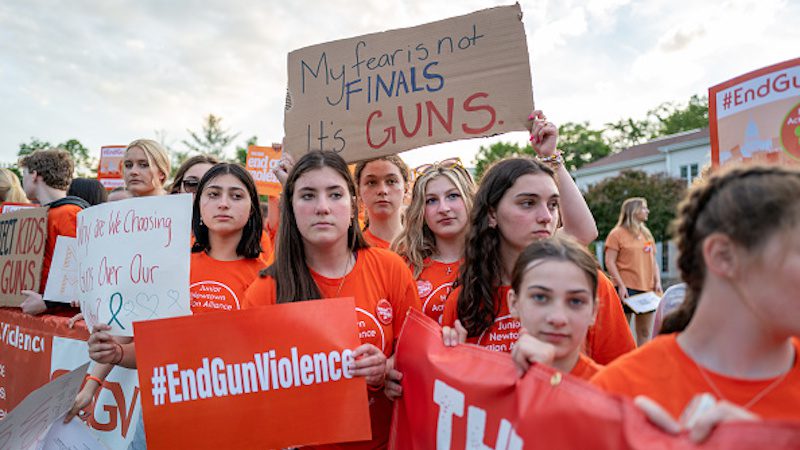
School shootings, racially motivated violence, abortion, gun control—these are topics most teachers tend to shy away from in the classroom. The thing is, kids need a safe place to talk about these issues. They need adults who will help them sort out their thinking and separate fact from opinion. Students need to learn to respectfully disagree with one another and how to have constructive conversations that may lead to compromise. Discover why it’s so important to address controversial topics in the classroom here.
Read the news as a class
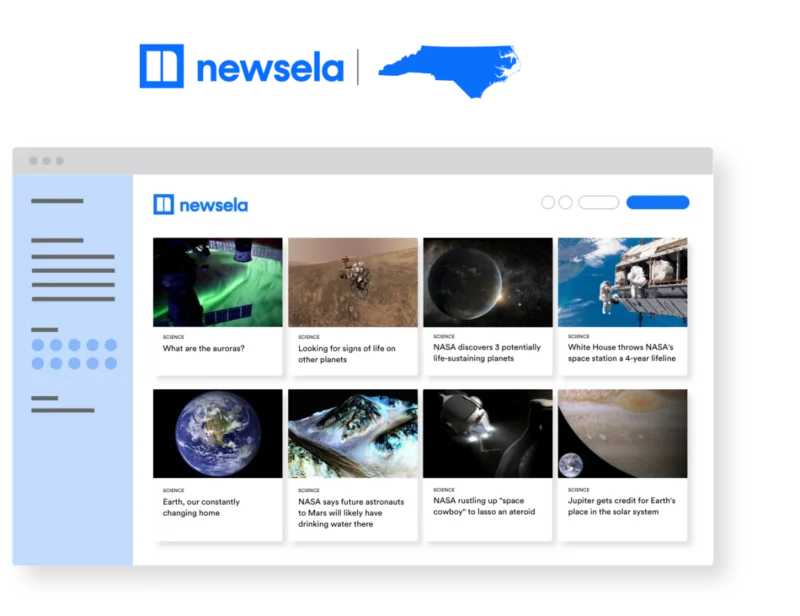
If you’re going to make smart decisions, you need to be informed. But many kids only learn about the news and current events from single news sources, usually whatever’s playing on their TV at home. Show students how to find a variety of sources to learn about current events. Teach them to think critically and evaluate articles to separate provable facts from opinion. Many teachers love using Newsela, since the articles can be differentiated for different reading levels. Learn more about ways to use Newsela to teach critical thinking here.
What are your current go-to social-emotional learning activities? Come share your ideas and ask for advice in the We Are Teachers HELPLINE group on Facebook .
Plus, 120+ morning meeting questions to start the day off right ..
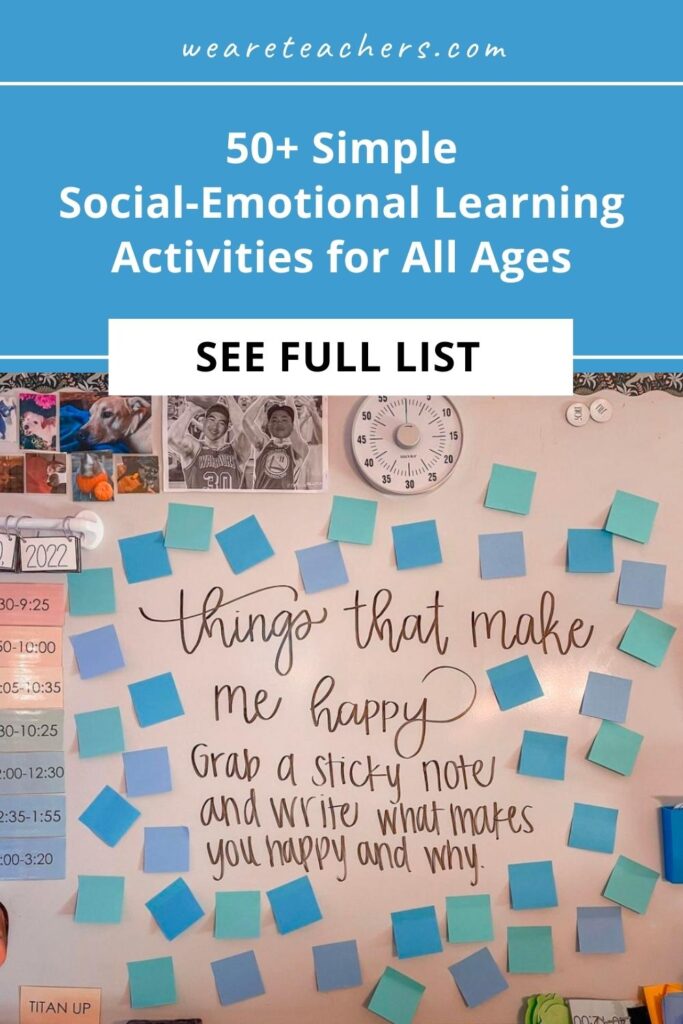
You Might Also Like
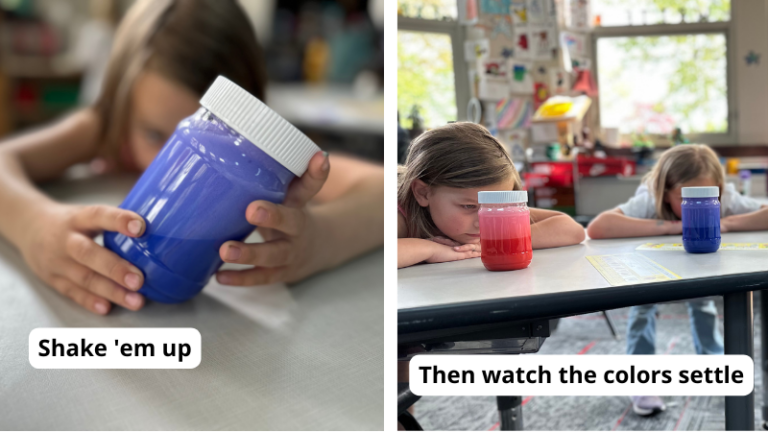
These DIY Calm-Down Jars Will Have Your Students Mesmerized
It's like a real-life science experiment with every shake. Continue Reading
Copyright © 2024. All rights reserved. 5335 Gate Parkway, Jacksonville, FL 32256
50 Activities That Support Social-Emotional Learning
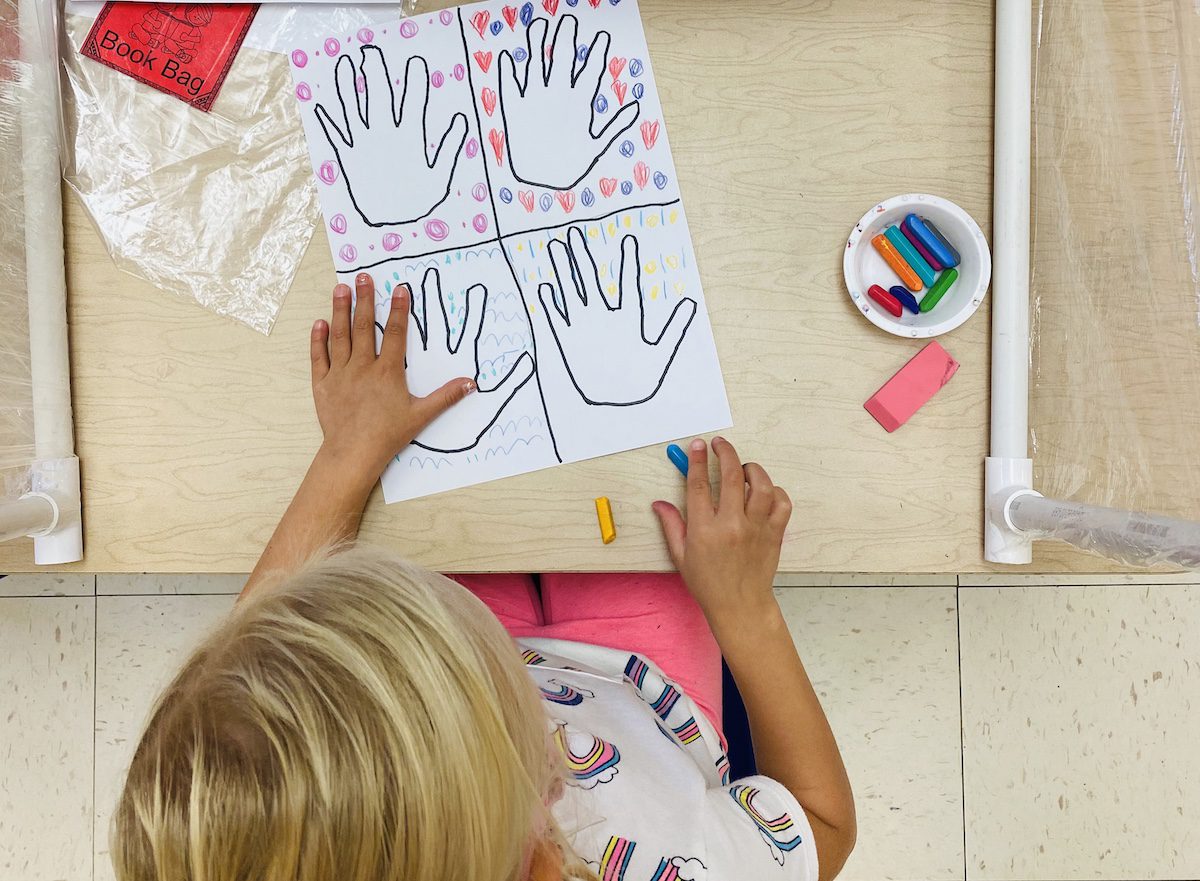
Return to Learn with The Art of Education University
Teaching our students how to understand and process their emotions is incredibly important now, more than ever. Art teachers are perfectly equipped to start conversations about identifying, expressing, and accepting all kinds of emotions with lessons specifically geared toward Social-Emotional Learning.
What is Social-Emotional Learning (SEL)?
Social-Emotional Learning (SEL) is the process through which children and adults understand and manage emotions, set and achieve positive goals, feel and show empathy for others, establish and maintain positive relationships, and make responsible decisions.
There are 5 main components of Social Emotional Learning:
- Self Awareness: Understanding yourself
- Self Management: Controlling impulses, stress, and emotions
- Social Awareness: Understanding the perspectives and feelings of others
- Relationship Skills: Communication, Cooperation, and Conflict resolution with others
- Responsible Decision Making: Identifying problems and brainstorming solutions
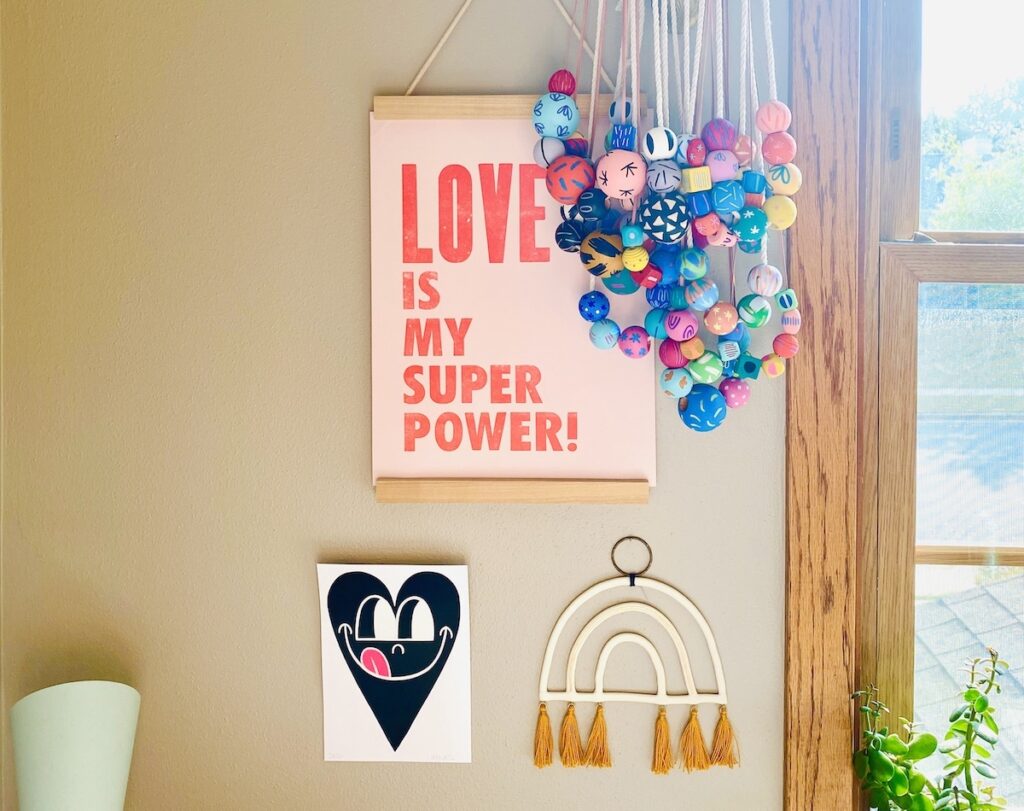
Once you are aware of the components that make up Social Emotional Learning, it’s time to make some art! Creating art that engages and strengthens your social and emotional muscles is a great way to make connections between feelings and creativity.
15 Art Lesson Ideas to Support SEL:
1. Partner Art Trade- Making something for someone else is a great way to encourage students to think about others. Have students create a small artist trading card, mini-masterpiece, or positive portrait of a friend. Intentionally taking the time to focus on creating something for another person specifically strengthens the social awareness and relationship skills of students.
2. Mantra Paper Beads- Have your artists think inward about what kinds of character traits make them special and strong. Using long strips of paper, instruct students to write and decorate each strip with a positive sentence about themselves. Then, tightly roll each strip of paper around a pencil, securing the strip together with glue or tape at the end. Once they have created a handful of positive rolled paper beads, students can make necklaces, banners, or decorations to remind them what makes them special.
3. Paper Chains- This classic lesson is a tried and true way to add positivity to the daily routine of a child. Using strips of paper, have students write a positive trait or a task to spread kindness. Then, loop the strips together to make a large paper chain. Each day, have students tear off a link to guide their SEL check-in for the day.
4. Scribble Art- Sometimes, we just need to “get the scribbles out!” Teach students how to hold one or many drawing tools and scribble all over a blank sheet of paper, letting their emotions come out on the paper. Artists can use the scribble paper to create something else, such as a sketchbook cover, bookmarks, or a decorative hanging banner.
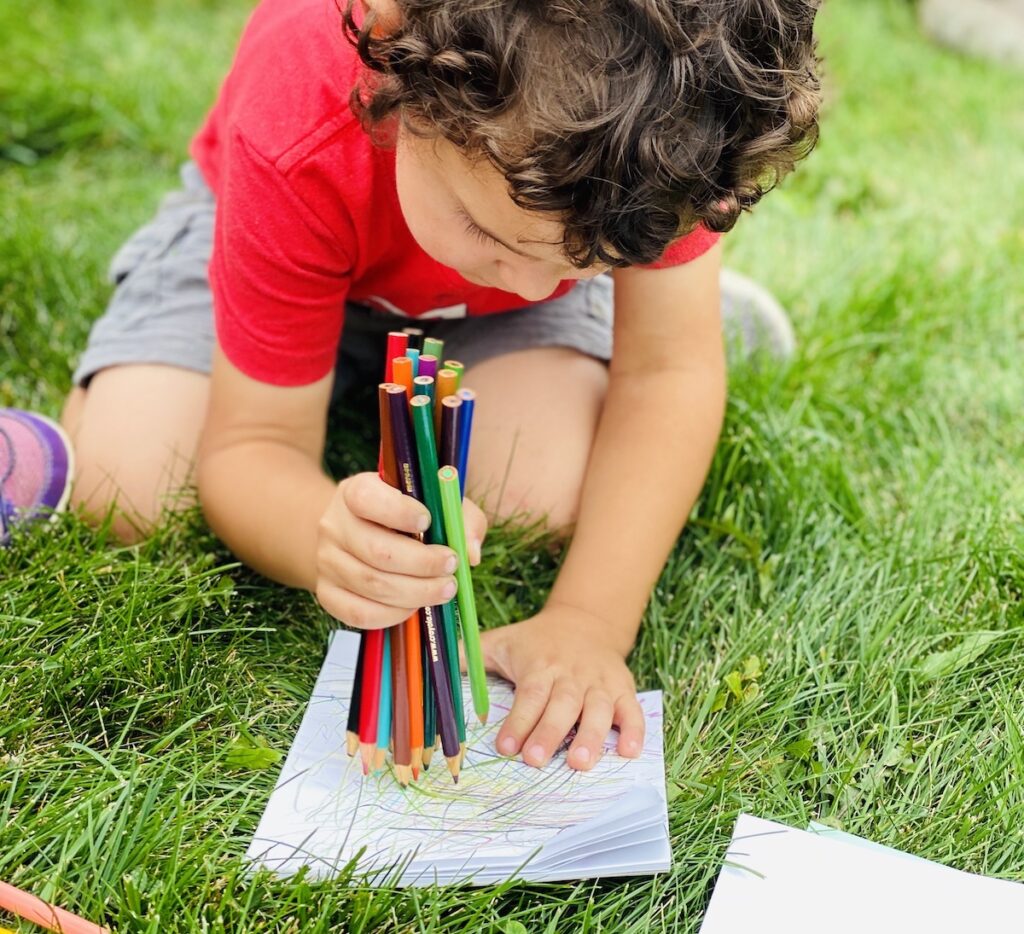
5. Circle of Control- Start by discussing situations you can or cannot control. Create a piece of art with a circle on it. Then, inside the circle, draw and write things you can control. Outside the circle, draw and write situations that you cannot control. This can help calm children and adults who experience anxiety during uncertain times.
6. Personal Mantra- Discuss specific words that encourage and lift you up. Have your artists decorate a poster, or even write on a window or mirror to be reminded of their daily positive mantra.
7. Repetitive Motion Projects- Incorporating the therapeutic nature of art, try having your students do repetitive drawing such as a Zentangle project or calming coloring.
8. “I am” Self Portrait- Having students reflect on their own amazing character traits will allow them to have a better understanding of what makes them unique. Using their own creativity, draw an outline of the profile of their face and write powerful statements about what makes them amazing.
9. Wrinkled Hearts- Have students cut out a paper heart then wrinkle it all up. Then, start a conversation about thinking first using the phrase, “Before you speak, think and be smart, it’s hard to fix a wrinkled heart.”
10. Intuitive Abstract Art- Let students create explorative abstract creations using inspiring artists. Model how to follow your heart to create abstract art .
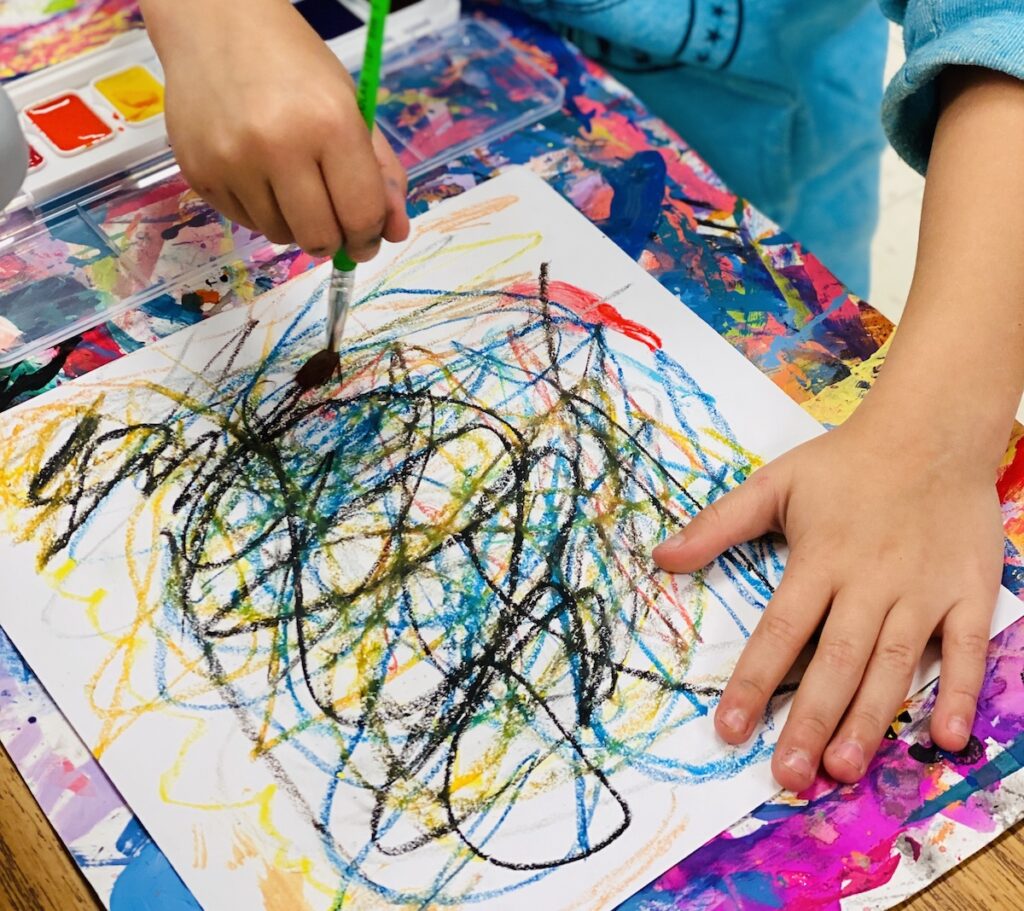
11. Emotional Color Wheel- Speak to students about the connection between colors and emotions. Ask: “How does the color red make you feel? What about blue?” Using these emotional connections, have students create an artistic representation of a color wheel or rainbow that addresses these emotional connections.
12. Vision Board- Have students create a vision board of things they want to do in the future. Suggest thinking ahead in a day, a month, and in years. Have students decorate their vision boards to reflect their goals and interests.
13. Hidden Hearts and Positive Phrases- Hearts are a classic symbol to represent feelings. Have students cut out paper hearts and write a positive phrase on each heart. Then, have students secretly hide their hearts around their living space to spread positivity and joy with the people around them.
14. Helping Hands- Encouraging students to think about others can make them realize how much control they have over the feelings of others. Have students trace or draw their own hands and reflect or write what their helpful hands can do for others.
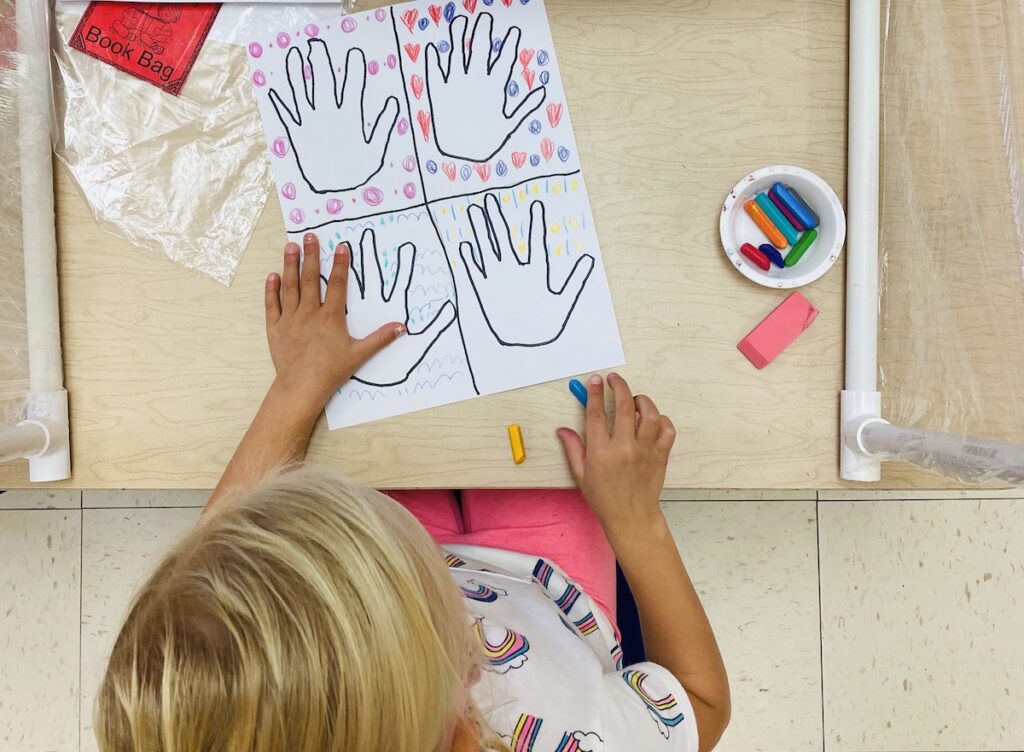
15. Calming Weaving- weaving has a naturally calming effect on students. Try having students create paper weavings with positive self-affirmations woven together. Or, if students are using yarn to weave, encourage them to make connections to the emotions tied with the colors they are choosing.
A great way to start a conversation about SEL is also by simply reading a book to your students.
25 books to read with students to address sel:.
1. A little SPOT of Anxiety by Diane Alber 2. Be You by Peter H. Reynolds 3. Charlotte and the Quiet Place by Deborah Sosin 4. Chocolate Milk, Por Favor by Maria Dismondy 5 . Even Superheroes Have Bad Days by Shelly Becker 6. Exactly You! The Shape of Your Feelings by Sarah Krajewski 7. Grumpy Dinosaur by Michael Gordon 8 . I Am Enough by Grace Byers 9. I Can Handle It by Laurie Wright and Ana Santos 10 . I Think, I Am!: Teaching Kids the Power of Positive Affirmations by Louise Hay 11 . I Will Be Okay by Laurie N. Wright 12. MySELF – Self Control & Self Esteem by Newmark Learning 13. The Boy with Big, Big Feelings by Britney Winn Lee and Jacob Souva 14. The Color Monster – A Story About Emotions by Anna Llenas 15. The Don’t Worry Book by Todd Parr 16. The Invisible String by Patrice Karst 17. There’s Nothing to Do by Dev Petty 18. Those Shoes by Maribeth Boelts 19. Train Your Angry Dragon by Steve Herman 20. Waiting is Not Easy by Mo Willems 21. We’re All Wonders by R.J. Palacio 22. What Should Danny Do? by Adir Levy and Ganit Levy 23. What Were You Thinking? by Bryan Smith and Lisa M. Griffin 24. When You are Brave by Pat Zietlow Miller 25. Worry Says What? by Allison Edwards
Playing interactive games with your students is also a great way to start conversations about their feelings. It can make the conversation more centered around fun and less stressful.
10 games to play that explore sel:.
1. Anger Slayer- Kids Anger Slayer Board Game 2. Feelings & Choices Flip Book 3. Don’t Go Bananas Card Game 4. StrongSuit – The Tower of Self Esteem 5. Match Master Card Game—Social Emotional Learning Game 6. Emoji Stories Dice Game 7. Mad Smartz Card Game 8. Love Language: Kids Conversation Starters 9. Mindfulness Therapy Games: Mindfulness Cards 10. Totem: The Feel Good Game
Our connections to our students are essential during this unprecedented time of teaching. Strengthening our SEL curriculum is a great way to start building even deeper connections with our artists.
What SEL lessons do you like to create with your students?
Why do you feel it is important to make SEL connections?
What do you feel may be an untapped resource in your school regarding SEL?
Magazine articles and podcasts are opinions of professional education contributors and do not necessarily represent the position of the Art of Education University (AOEU) or its academic offerings. Contributors use terms in the way they are most often talked about in the scope of their educational experiences.
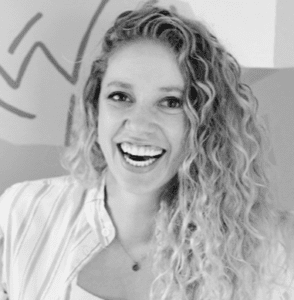
Sarah Krajewski
Sarah Krajewski, an elementary school art educator, is AOEU’s Social Media Content Creator and a former AOEU Writer.
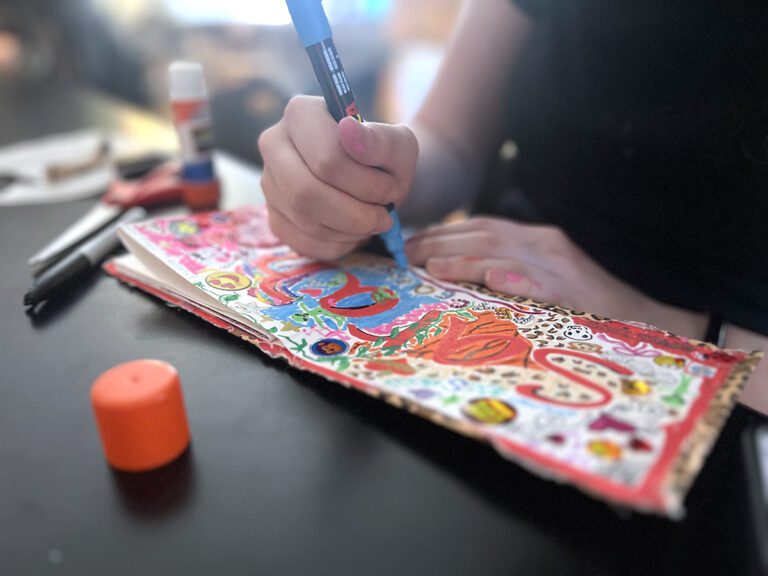
5 Art Activities to Unwind After Testing and Portfolio Submissions
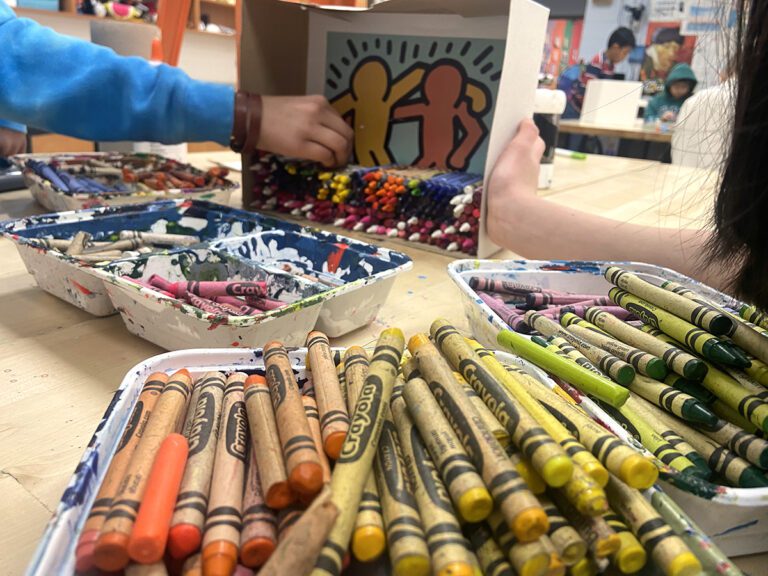
3 Contemporary Artists Making Amazing Work from Materials Found in Every Art Room
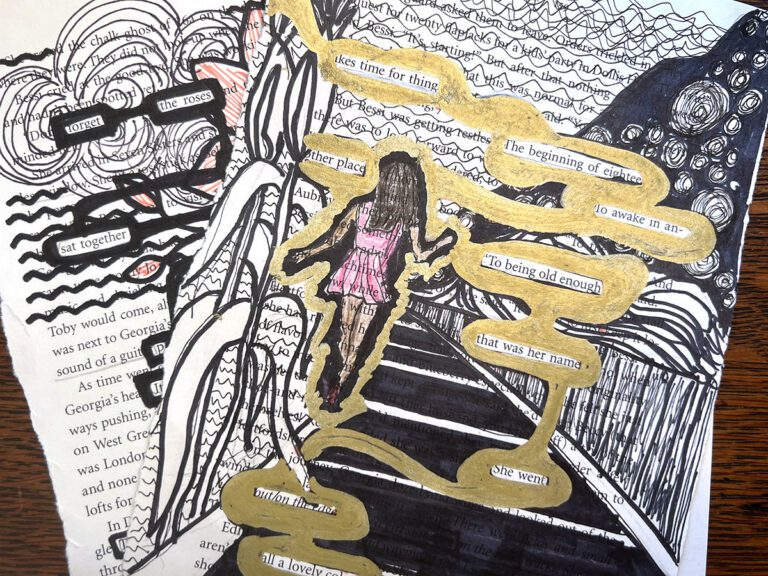
From Text to Powerful Art: How to Explore Blackout Poetry in Your Art Room

Bring Concrete Poetry Into the Art Room to Support All Learners
- Our Mission
13 Powerful SEL Activities
Build social and emotional skills into any class.
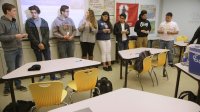
Summit Preparatory Charter High School in Redwood City, California, uses a variety of activities in the weekly, 90-minute Habits, Community, and Culture (HCC) class, where students learn Habits of Success and develop social and emotional learning (SEL) skills. The school has developed an HCC curriculum for grades nine through 12 and hired two full-time teachers for HCC, but Summit’s academic teachers also use some of these activities to build SEL skills and deepen their relationships with their students. Cady Ching, a biology and AP environmental science teacher at Summit, incorporates opening activities into all of her classes: “In my freshman classes, we do them every class period.”
Here are some of the opening, group sharing, and closing activities that teachers use at Summit:
Opening Activities
1. Mindfulness: The benefits of mindfulness range from improved working memory to stress reduction . Here are two ways Aukeem Ballard, an HCC teacher, facilitates mindfulness:
- Visualization to release stress: Have your students imagine what stress looks and feels like inside their body, and then ask them to release it. “The mindfulness practice makes you think the stress is coming off your body,” says Geoffrey, a 12th-grade student.
- Noise isolation: There are a variety of sounds that your students hear when they’re in your classroom, from students walking in the hallway to outdoor construction noise. Have your students focus on one noise and describe it to themselves and recall the last time they interacted with it.
To get more tips, check out Ballard’s “ When Mindfulness Feels Like a Necessity ."
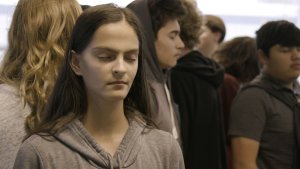
2. Name the emotion you’re bringing to class: Have each student call out the emotion they’re feeling. This helps each student know how they and other students are feeling, what different emotions look like, and how to better interact with their peers based on how they’re feeling.
3. Write down, rip up, and throw away your stress: Have your students write down their expectations and insecurities, rip them up, and throw them away. This emotional check-in takes about three minutes. By acknowledging how your students are feeling at the start of each class, you’ll acknowledge their barriers to learning and create a safe space for your students to overcome them.
4. Growth mindset vs. fixed mindset share-out: Have your students share moments when they have demonstrated a growth and fixed mindset.
5. Quote of the day: Introduce a quote relevant to what your students are learning or to a shared experience—for example, an act of violence in the community. You can facilitate a whole-class discussion, group students into pairs, or have each student share a one-word response to the quote. This gives students the space to reflect on their beliefs and experiences and whether they agree or disagree with the quote and other students’ opinions, and it gives them insight into their peers’ perspectives and feelings.
6. Where we came from: Collect baby pictures from your students. Project one baby picture at the start of class, have your students guess who it is, and then have the featured student share something about their childhood.
7. Starting positive: Have each student tape a sheet of paper to their back and then walk around and write positive qualities about their peers on their backs.
8. Motivational moment: Have two students start the class with a three- to five-minute presentation—and come up with two or three discussion questions—based on their interests. The presentation must be related to the course content in a real-world context. “Many students include a video for visuals and increased engagement, but it’s optional,” says Ching. Have the rest of the class partner up to discuss their questions for one minute and then give them the opportunity to share out to the whole class. This exercise gives your students insight into their peers’ interests.
Summit Preparatory Charter High School
Per pupil expenditures, free / reduced lunch, demographics:, group sharing.
9. Circle sharing: To encourage active listening, create small groups. Have your students position their chairs in a circle so everyone can make eye contact. To strengthen empathy, you can facilitate deeper discussion around what a student shares by asking, “Why did that student share what they did?” or “What perspective is that student coming from?”
When discussing emotionally charged topics, it’s important to have guidelines to foster a safe space. Summit uses the Courageous Conversation protocol created by Glenn E. Singleton when discussing race. The protocol is guided by four agreements—stay engaged, experience discomfort, speak your truth, and expect and accept nonclosure. Here is an example of elementary school discussion guidelines from School 21.
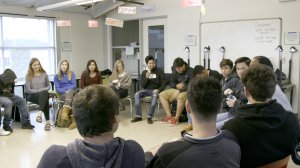
10. Write a poem from someone else’s perspective. Have your students choose someone they don’t know. This helps them to understand that they don’t “need to be best friends with someone to empathize with them,” explains Ballard.
11. Have a conversation with someone you don’t know. Have your students pair up with a student they don’t know and provide the pairs with five questions to ask each other. Each student introduces their partner to the class, speaking as if they were their partner, while the rest of the class looks at the student being introduced. “We don’t see people sometimes,” says Ballard, “and this exercise helps students to see each other more deeply.”
12. Play interest and identity-related bingo. Instead of squares filled with numbers or vocabulary words, create cards with information relating to your students . Summit’s Bingo cards have things like “‘I like to read’ or ‘I was born in a different country,’” says Armando, a ninth-grade student.
Closing Activity
13. Appreciation, apology, aha: Have your students get in a circle and share an appreciation, apology, or realization with the group. Students in Ballard’s class have shared things like:
- I would like to appreciate Brenda for facilitating the conversation in our small group.
- I would like to thank everyone for taking this class seriously.
- I apologize to everyone for having my headphones in for half of the time.
Encourage authentic and timely apologies. Apologizing for something that happened a long time ago has less impact than apologizing for something that happened that day or week. Let your students know that they don’t have to name who they’re apologizing to when they apologize for what they did.
Help students share helpful, not harmful words. “I often say, ‘Appreciations, apologies, and ahas should be something that you genuinely think will be useful for people to hear,’” says Ballard.
Have your students snap, clap, or shake both hands when they hear something that resonates with them. “We snap to let people know that we hear them without exerting our own voice in their narrative,” explains Ballard. Students shake their hands when peers share things that are emotionally charged. Ballard often gets this started by saying, “Let’s shake it up for that.”
“When you pay attention to each other, not only does it build a sense of community, but we’re more able to understand other people,” says Janet, a 12th-grade student. “If you're able to understand people at a younger age, you could work better with them as adults. That changes how the future generations will be. People can be more accepting, more helpful towards each other.”
Schools That Work
At Summit Preparatory Charter High School, students set daily academic goals, deciding what they’ll learn, how they’ll learn, and who they’ll learn with. Through a personalized learning platform, differentiated instruction, coaching in social and emotional skills, choice-based expeditions, mentors, and cognitive skills taught through projects, Summit helps students understand their needs as learners.
- Summit students outperformed the district and the state on the Smarter Balanced Assessment for math and ELA in 2015.
- In 2015, Summit schools had a 95% graduation rate and a 99% 4-year college acceptance rate.
- 55% of Summit graduates complete college in 6 years or less—almost twice the national average.

- BSW Scholarships
- How to Transition to a Social Work Career
- Social Worker Salary and Jobs in Social Work
- Is a Master of Social Work MSW Really Worth It?
- Social Worker Resource Guide
- Doctor of Social Work Salary and Careers
- How to Become a School Superintendent
- Faculty Interview: Dr. Lee Nabb, Morehead State University
- Scholarships for Doctor of Education (EdD) Students
- What is a Terminal Degree?
- Is It Worth Getting a Doctorate in Education (EdD)?
- Faculty Interview: Tracy Caddell, Ball State University
- Doctor of Education EdD Salary and Career Outlook
- EdD vs. PhD
- What is Organizational Change?
- Faculty Interview: Michael Poe, Northwest Nazarene University
- How to Transition to a Teaching Career
- Applying for Your Master’s
- Preparing for Your Interview
- Crafting Your Resume
- How to Write a Personal Statement
- How to Get the Right References
- Is a Master of Teaching Worth It?
- The Ultimate Guide to the Praxis® Tests
- Finance your Teaching Education
- Online Master of Arts in Teaching – TESOL Programs
- HBCU Undergraduate Scholarships Guide
- Librarian Resource Guide
- Explore Librarian Salary, Jobs, and Careers in Library Science
- Online Master of Science in Teaching
- Online Master of Education Programs
- Our Guide to Entry-Level Nursing
- What Type of Nurse Should You Be?
- Guide to Transitioning RN to MSN Programs
- What Can You Do With a Bachelor’s in Public Health?
- Bachelor of Public Health Scholarships and Grants
- Kinesiology and Exercise Science Salaries
- How to Make a Career Change from Teaching to Speech Pathology
- Speech Pathology School Scholarships
- How to Get into Speech Pathology School
- ASHA Certification for Speech-Language Pathologists
- Is a Master’s in Speech Pathology Really Worth It?
- Professional Development Guide for Speech Pathologists
- What Speech Pathology Students Should Do Before Graduating
- Speech-Language Pathologist Resume Guide
- Speech-Language Pathology Job Interview Guide
- Speech Pathologist Resource Guide
- Speech Pathologist Salary and Career Outlook
- What Is an AGACNP?
- What Is a Women’s Health Nurse Practitioner
- Guide to Making a Career Change to Nursing
- How To Get Into Nursing School
- Is Nursing School Really Worth It?
- Nursing Salary by State
- Nursing Resources
- Which Nursing Degree Is Right for Me?
- Types of Nursing Degrees
- Nursing School Scholarships
- Explore Midwife Salary, Jobs, and Careers in Midwifery
- What is a Midwife
- The 2022 Guide to Online Doctor of Nursing Practice (DNP) Programs
- Nursing Careers Infographic
- Nurse Practitioner Career & Salary
- Our Guide to APRN License and Certification
- NP vs DNP: Nurse Practitioner vs Doctor of Nursing Practice
- Family Nurse Practitioner (FNP)
- Registered Nurse vs. Nurse Practitioner
- Acute Care Nurse Practitioner ACNP Salary and Careers
- Women’s Health Nurse Practitioner WHNP Salary and Careers
- Online Psychiatric Nurse Practitioner Programs (PMHNP)
- Occupational Therapy Salary and Career Outlook
- Scholarships for Occupational Therapy Students
- How to Get into Occupational Therapy School
- Is a Doctor of Occupational Therapy Worth It?
- What is Occupational Therapy?
- What Is the Difference Between Physical Therapy and Occupational Therapy?
- What Is Physical Therapy?
- How to Get Into Physical Therapy School
- Is a Doctor of Physical Therapy DPT Really Worth It?
- Physical Therapy Careers and Salaries
- How to Make a Career Transition to Physical Therapy
- Chiropractor vs. Physical Therapist
- Physical Therapy Scholarships
- What’s the Difference Between a Physician Assistant and a Doctor?
- Scholarships for Physician Assistant PA Students
- Physician Assistant vs. Nurse Practitioner: What Are the Differences?
- Physician Assistant Salary, Jobs and Career Path
- How to Become a Physician Assistant
- How to Get Into PA School
- Is a Physician Assistant PA Degree Really Worth It?
- Physician Assistant Certification Guide
- Pharmacy Doctorate Salary and Career Outlook
- How to Get into Pharmacy (PharmD) School
- Master of Health Informatics Career and Salary
- Master of Public Health Salary and Career Outlook
- Online Master’s in Health Administration Programs (MHA)
- Top Paying Healthcare Careers
- Bachelor of Psychology Scholarships
- Digital Resources for Students with Autism – Helpful for Teachers and Parents
- What is a Functional Behavior Assessment?
- What is Applied Behavior Analysis (ABA)?
- Applied Behavior Analysis ABA Scholarships
- Psychologist Salary and Career Outlook
- Types of Psychology Degrees
- Clinical Psychologist Careers and Salary
- Marriage and Family Therapist Salary and Jobs for MFT Careers
- Behavioral Psychology
- Counseling Skills and Techniques
- Is a Master’s in Counseling Worth It?
- 25 Counseling Scholarships for Graduate Students
- School Psychologist vs School Counselor
- Bullying Resources for Educators and Parents
- The Comprehensive College Planning Resource
- School Counselor Certification Guide
- Resources for School Counselors
- School Counselor Salary and Career Outlook
- LMHC vs. LCSW
- How to Become a Counselor
- Mental Health Counselor Salary and Career Outlook
- MPA vs MPH: Which Degree is Best for You?
- MPA vs. International Relations
- MPA vs. MPP
- Masters in Business Administration (MBA) vs. Masters of Public Administration (MPA)
- Is an MPA Degree Really Worth It?
- MPA Careers and Salaries
- Master of Public Administration MPA Scholarships
- Online Masters in Urban Planning Programs
- What Can I Do With an International Relations Degree?
- International Relations Salary and Career Paths
- How to Make a Career Transition to Financial Planner
- Can You Change Careers with an MBA
- MBA Concentrations Guide
- Online MBA in Financial Planning Programs
- Find Online MBA in Entrepreneurship Programs
- Find Online MBA in Marketing Programs
- Find Online MBA in Business Analytics Programs
- Find Online MBA in Finance Programs
- MBA or CFA: Which Is Better for a Finance Career
- How to Get Into Business School
- MBA or JD: Which Is the Better Career Path?
- Is an MBA Degree Really Worth It? Decide Here
- Explore MBA Salary, Jobs, and Careers in Business
- MBA Scholarships
- Bachelor’s of Business Scholarships
- What Can You Do With a Bachelor’s in Business and Management?
- What Can You Do with a Bachelor’s in Marketing?
- Bachelor of Marketing Scholarships
- Is a Master of Accounting Worth It?
- Accountant Salary and Career Outlook
- Guide to Transition into an Accounting Career
- Master’s in HR Salary and Career Outlook
- How to Break into Supply Chain Management
- Supply Chain Management Salary and Career Outlook
- Online Master’s in Management and Leadership
- Online Master’s in Finance Programs
- Explore Our LSAT Study Guide
- How to Get into Law School
- How to Study for the Bar Exam
- Is a JD Really Worth It?
- MPA vs JD: Which Is Better?
- Is a Master of Legal Studies Worth It?
- Online Master’s in Taxation Law Programs
- Online Master of Laws LLM Programs
- Online Master of Legal Studies in Compliance Programs
- What You Can Do with a Bachelor’s in Communications
- Bachelor of Communications Scholarships
- Online Master of Communication Management Programs
- Master’s in Communications Salary and Careers
- Is a Communications Degree Worth It?
- How to Become a Communications Director
- How to Become an Architect
- Guide to Online Economics Certificates and Courses
- How to Become a Public Policy Analyst
- Public Policy Analyst Salary and Job Outlook
- Guide to Online Sustainability Certificates and Short Courses
- Data Science Salary and Career Outlook
- Is a Data Science Degree Worth It?
- Online Business Management Courses
- How to Become a Finance Manager
- Finance Salary and Careers
- Web Developer Salary and Career Paths
- How to Become a Cyber Security Specialist
- Guide to Cybersecurity Salaries and Careers
- AI Engineer Salary and Career Outlook
- How to Become an AI Engineer
- How to Become a Blockchain Developer
- Systems and IT Salary and Career Outlook
- Online Human Resources HR Courses
- How to Become a Project Manager
- Project Manager Salary and Career Outlook
- Become a Marketing Manager
- Is a Marketing Degree Worth It?
- Marketing Salary and Careers
- Online Healthcare Courses
- Online Nutrition Courses
- Online Education Courses
- Online Business Negotiations Courses
- Online Leadership Courses
- Online Conflict Resolution Courses
- Become a Data Analyst
- Online Real Estate Courses
- What is an HBCU?
- Reasons to Choose a Degree From an HBCU
- Teaching Methods
- Learning Styles
- Testing Effect
- School Media
- Motivating Students
- Dropout Prevention
- Teachers Care
- Grants for Teachers
- Teacher Appreciation
- Debra Rose Howell
- Dr. David Lazerson
- Dr. Penny Ferguson
- Genein Letford
- Lynne Kesselman
- Susan Evans
- Valerie Kibler
- How To Become a Lawyer Online
- How to Become a Principal
- Guide to Becoming a Doctor of Social Work
- Masters Degree Program Accreditation
- Teacher Certification Tests (The Praxis and Beyond)
- Teacher Salary, Career and Benefits Guide
- Summer Vacation for Teachers
- Teaching STEM
- Teaching Art
- Teaching Music
- Teaching Gifted Education
- Teaching Social Studies
- Teaching English as a Second Language (ESL)
- Teaching English and Language Arts
- Teaching Special Education
- Teacher Shortage Areas by State
- How To Become an Online Teacher
- Become a Licensed Mental Health Counselor
- How to Become a School Counselor
- LMHC Licensure Guide for Mental Health Counselors
- What does an LMHC do?
- Become a Psychologist
- How to Become a Clinical Psychologist
- What Does a Licensed Marriage & Family Therapist (LMFT) Do?
- Become a Behavior Analyst
- How to Become a Pediatric Nurse
- Become a Women’s Health Nurse Practitioner
- How to Become a Pharmacist
- Become a Speech Pathologist
- Become a Physical Therapist
- How to Become an Occupational Therapist
- Become a Registered Nurse (RN)
- Become a Nurse Practitioner
- Become a Nurse Midwife
- Become an Acute Care Nurse Practitioner
- Become a Psychiatric Nurse Practitioner
- Become an Advanced Practice Registered Nurse APRN
- How to Become a Business Consultant
- Become an Accountant
- Become a Human Resources Specialist
- Become a Public Administrator
- Become a Librarian
Teach.com / Resources
95 Resources for Teaching Social and Emotional Learning to Children
March 25, 2021

Social and emotional learning skills can help individuals participate and thrive in communities. The ability to interact with others to get what you want and/or need requires the ability to process what is happening and understand how to respond. You have to tap into your social and emotional learning skills.
According to the Collaborative for Academic, Social and Emotional Learning (CASEL), there are five core competence areas for SEL: self-awareness, self-management, social awareness, relationship skills and responsible decision-making.
All children benefit from acquiring SEL skills. David Lichtenstein, Ph.D., a licensed psychologist who works for a program that supports students with special needs in New England, writes in the Greater Good Science Center’s Greater Good Magazine that SEL training for children living with psychiatric or developmental disabilities requires patience but may help reduce the instances of behavior that disrupts their learning.
SEL training happens at every age. Educators and schools can cultivate competencies in children through SEL curriculum and SEL training for teachers, extracurricular activities and discipline. Parents and caregivers can do the same with family activities and participation in community events.
Teach.com rounded up resources for teaching SEL to children living with and without disabilities.
List of Resources
Children with developmental or behavioral disabilities, preschool-k, elementary school, middle school, high school, for those teaching sel.
“How Can We Help Kids With Self-Regulation?” Child Mind Institute: description of self-regulation skills and strategies to teach those skills.
“Social Challenges of Kids With Learning Problems,” Child Mind Institute: discussion about the link between learning problems and social difficulties.
“Social Emotional Learning for Students With Special Needs,” #RGSTeachersLounge: lessons on how to recognize others’ emotions.
“Social Skills and Autism, ” Autism Speaks: discussion about how professionals can help teach social skills and examples of where SEL skills are needed in the community.
“Supporting the Emotional Needs of Kids With Learning Disabilities,” Child Mind Institute: common reasons why children with learning disabilities might feel bad and what to do.
“Understanding Children’s Hearts and Minds: Emotional Functioning and Learning Disabilities,” LD Online and WETA: an examination of five examples of how emotional health affects children with learning disabilities.
Building Blocks for Teaching Preschoolers With Special Needs, Ilene S. Schwartz, Gail E. Joseph, Susan R. Sandall, Ariane N. Gauvreau: lessons on various skills, including making friends and building positive relationships.
How to Talk With Friends: A Step-by-Step Social Skills Curriculum for Children With Autism, Janine Toole: guide to help teach conversational skills to children with autism or Asperger’s.
It’s So Much Work to Be Your Friend: Helping the Child With Learning Disabilities Find Social Success, Richard Lavoie: answers to the most common questions from parents, teachers and caregivers about children with ADHD, anxiety, nonverbal-communication disorders, visual/spatial disorders and executive functioning difficulties.
Make Social and Emotional Learning Stick!, Elizabeth A. Sautter: practical advice for parents struggling to find the energy to teach SEL to children with self-regulation or behavioral issues due to sensitivities, autism or ADHD.
Six Minute Social Skills Workbook 1: Conversation Skills for Kids With Autism and Asperger’s (Volume 1), Janine Toole: worksheets and activities to help parents of learners who have autism, Asperger’s and similar social skill challenges.
The Social-Emotional Guidebook: Motivate Children With Social Challenges to Master Social and Emotional Coping Skills, Mike Fogel: guidebook that enhances SEL curriculum originally aimed to support children with ADHD, mild autism, learning differences and related self-regulation challenges.
Social Skills Activities for Special Children: Grades K-5, Darlene Mannix: compilation of lessons and worksheets for children to use inside and outside the classroom.
The Survival Guide for Kids With Behavior Challenges: How to Make Good Choices and Stay Out of Trouble, Thomas McIntyre: practical advice and strategies to help children keep friends, get along with teachers and make positive choices.
Toolkits, Brochures, Activities, Posters and Worksheets
Helping Young Children Control Anger and Handle Disappointment (PDF 98 KB), Center on the Social and Emotional Foundations for Early Learning: strategies for keeping children calm by modeling behavior.
Teaching Tools for Young Children With Challenging Behavior, National Center for Pyramid Model Innovations: user’s manual, progress sheets, posters, stories, handouts, and checklists to use at home.
Websites and Online Communities
Autism Focused Intervention Resources and Modules (AFIRM): lessons to help adults working with learners living with ASD improve their behavioral skills, including self-regulation and social interactions.
Education and Behavior: curated content related to different children’s needs including social and emotional learning for children with autism, ADHD and children who are affected by bullying.
Eye to Eye: online community focused on helping students with ADHD and other learning disabilities, offering online workshops for children and teachers in grades 5-8.
Learning Disabilities Association of America: organization offering informational guides and a support network for people with disabilities as well as their parents, teachers and other caregivers.
TeachingLD: information, tutorials and practice guides for teaching social skills to students with learning disabilities.
BACK TO TOP
“Promoting Young Children’s Social and Emotional Health,” The National Association for the Education of Young Children: why social and emotional health matters and how to establish trusting relationships to teach SEL skills with intention.
“Research-based Strategies to Help Children Develop Self-Control,” MindShift: discussion addresses the value of self-control for positive outcomes and offers tips for teaching how to delay gratification.
Creating Social and Emotional Learning Environments, Amy Cranston: lessons to encourage learning, understanding and reflection combine with examples of real-world applications of SEL in different situations.
Duck and Goose, How Are You Feeling?, Tad Hills: storybook characters help teach toddlers about emotions like happy, sad, scared and proud.
Mighty, Mighty Construction Site, Sherri Duskey Rinker: story about trucks teaches young children about friendship, team-building and working together.
My Body Sends a Signal: Helping Kids Recognize Emotions and Express Feelings, Natalia Maguire: story, illustrations and activities provide lessons on emotions and empathy.
My Mouth Is a Volcano, Julia Cook: story provides children a lesson in the value of listening to others and waiting to speak in turn.
Council for Exceptional Children: information, guides, teaching tools and more for professional development for special education instructors.
Social-Emotional Learning for Preschool, Scholastic: downloadable poster, lesson plan and activity sheets to teach children skills such as reflection, communication and listening.
Social Emotional Learning Toolkit (PDF, 7.2 MB), Indiana Department of Education: PreK-12: strategies and tools to help administrators and teachers improve students’ social, emotional, behavioral and academic skills.
Teaching Your Child to Identify and Express Emotions, (PDF, 2.8 MB), The Center on the Social and Emotional Foundations for Early Learning: guide to understanding, identifying, expressing and managing emotions.
“21 Simple Ways to Integrate Social-Emotional Learning Throughout the Day,” We Are Teachers: lessons on SEL skills from everyday situations, such as the morning check-in, to teamwork exercises and time dedicated to reflective writing or art.
“How One Elementary School Integrates Social-Emotional Skills Into the Classroom,” Greater Good Magazine: examples of the importance of SEL and how to use quiet spaces and collaboration to teach it in the classroom.
Our Class Is a Family, Shannon Olsen: lessons revolve around the classroom as a community where children can feel safe and build friendships.
Trauma-Informed Social-Emotional Toolbox for Children and Adolescents, Laura Sibbold, Lisa Weed Phifer: activities and worksheets about how to build resilience, connect with others and cope with difficult emotions.
72 Free Social Emotional Learning Activities , Centervention: lessons, activities and worksheets cover areas such as expressions of emotions, gratitude and coping with anger.
Climate Kids, NASA: games, activities and articles related to climate science to help students understand their impact on the environment.
Digital Citizenship and Social and Emotional Learning (PDF, 3.6 MB), Common Sense Education: discussions, lessons and digital tools to help students make wise choices and build character in positive ways.
Nurturing Gratitude From the Inside Out: 30 Activities for Grades K-8 (PDF, 15.8 MB), Greater Good Science Center: activities and lessons related to developing the knowledge, skills and attitudes associated with gratitude.
Start Empathy: A Toolkit for Promoting Empathy in Schools (PDF, 5.5 MB), Start Empathy and Ashoka: guide to building a sense of community in the classroom and school so that children develop empathy, caring and friendships.
The Collaborative for Academic, Social and Emotional Learning (CASEL): organization provides videos, webinars, activities and other guidance for schools and parents to work together to ensure SEL is a priority for every student.
Global Oneness Project: films and lessons for teachers and students that revolve around stories to foster inquiry, empathy, resilience and a relationship with the planet.
PenPal Schools: platform monitored by teachers allows students from around the world to connect and work on projects that build curiosity, relationships, empathy, self-awareness, collaboration skills and respect for others.
“8 Practical Things Families Can Do at Home to Support Social-Emotional Learning,” We Are Teachers: tips for parents to support SEL at home that include giving praise for effort, encouraging problem-solving and engaging in more family activities.
“Teaching Social Acceptance in Middle School,” We Are Teachers: conversation topics to help foster inclusion such as discussing relevant books, celebrating cultural differences and listening and considering others’ perspectives.
A Year of Positive Thinking for Teens: Daily Motivation to Beat Stress, Inspire Happiness, and Achieve Your Goals, Katie Hurley: prompts and reflections to help let go of stress and stay motivated, remember strengths and reach goals.
Humanizing the Classroom: Using Role-Plays to Teach Social and Emotional Skills in Middle School and High School, Kristin Stuart Valdes: strategies to help students learn SEL through role-playing and safely practice how to engage in common situations.
Examples of Social and Emotional Learning in Middle School Social Studies Instruction (PDF, 726 KB), CASEL: examples of how reflection on historical events, regular discussion about how to solve problems, positive feedback and volunteer projects can be effective ways to teach SEL.
Grades 6-8:Social-Emotional Skills, Scholastic: lessons and activities on attitude, boundaries, resolving conflict and more.
Happy, Successful Teens (PDF, 5.7 MB), Allstate Foundation: guide for parents and other caregivers to teach children how to master SEL skills and make smart choices so they can develop independence in healthy ways.
Thanks! A Strengths-Based Gratitude Curriculum for Tweens and Teens, (PDF, 4 MB), Greater Good Science Center: lessons to help students understand the meaning of gratitude and how to foster it.
Brilliant: community with interactive lessons related to STEM that stimulate curiosity, accepting mistakes and solving problems.
Character Playbook: NFL and United Way program that teaches middle school students SEL skills such as consideration for others, redirecting bullying behaviors and communicating effectively.
Youth Voices: monitored platform, organized by teachers with the support of the National Writing Project, encourages youth to write about their passions, explain things that they understand well and share discussion posts with their peers.
Zinn Education Project: teaching materials and discussion about different peoples’ history to provide students a better understanding of cultural origins and perspectives.
“ 13 Powerful SEL Activities,” Edutopia: useful exercises to build SEL skills that have been used successfully at a high school in Redwood City, Calif.
“Making SEL More Relevant to Teens,” Edutopia: activities to address students’ need for status and respect.
Belonging and Becoming: The Power of Social and Emotional Learning in High Schools, Kathleen Cushman and Barbara Cervone: examination of five high schools with a reputation for integrating rigorous academics with SEL with support systems, rituals and initiatives to build a sense of community.
Communication Skills for Teens: How to Listen, Express and Connect for Success, Patrick Fanning, Michelle Skeen, Matthew McKay, Kelly Skeen: exercises focus on active listening, compassion, the art of the apology and assertiveness.
Examples of Social and Emotional Learning in High School English Language Arts Instruction (PDF, 787 KB) CASEL: guide with lessons, activities and teacher practices to help develop the vocabulary and skills for communication and making connections with others.
Harry Potter as a Tool for Social Change (PDF, 9.6 MB). Harry Potter Alliance: toolkit to use stories such as those found in the Harry Potter series to teach about justice and inequity and inspire social change.
High School Social Emotional Distance Learning Activities, Changing Perspectives: activities to support secondary students and help them develop skills to interact with others, manage behaviors and show empathy.
The Harry Potter Alliance: ( Wizard Activist School ): online campaign that uses stories and pop culture to inspire activism and make it more accessible.
Parable of the Polygons: an interactive game that involves segregating shapes, which tells the story about how harmless choices can harm the world.
This I Believe: organization’s online community engages youth in writing, sharing and discussing essays about the value in their daily lives.
Thrively: assessments, journals and goal-setting activities to teach students how to raise their self-awareness, track progress, build skills and solve problems.
The Wonderment: platform encourages students to develop ideas that address community problems, explore the possible answers and find resolution.
Write the World: online community for students around the world to write and publish their work and exchange feedback and ideas.
“How to Foster Gratitude in Schools,” Greater Good Magazine: discussion about a gratitude curriculum that involves recognizing intention and appreciating the value of others to improve relationships in the classroom.
“How to Implement Social and Emotional Learning at Your School,” Edutopia: how to assess a school’s practices and support of SEL for its students and how to improve its SEL curriculum.
All Learning Is Social and Emotional, Nancy Frey, Douglas Fisher, Dominique Smith: strategies for implementing SEL lessons in regular instruction about any subject area.
SEL From a Distance, Jessica Hannigan, John E. Hannigan: tools and processes for SEL that can be used in a remote learning environment.
SEL from the Start: Building Skills in K-5, Sara E. Rimm-Kaufman: step-by-step instructions for teaching SEL .
Making Grateful Kids: The Science of Building Character, Jeffrey Froh and Giacomo Bono: real-life stories to help parents, teachers and others foster gratitude in youth.
Social Emotional Learning and the Brain: Strategies to Help Your Students Thrive, Marilee Sprenger: explanations of brain activity and how that understanding can help teach students SEL, with accompanying activities and lessons.
Teaching With a Social, Emotional, and Cultural Lens: A Framework for Educators and Teacher Educators, Nancy Lourié Markowitz, Suzanne M. Bouffard: foundation for teachers to use the lens of social, emotional and cultural perspectives in their daily curriculum.
Classroom Decorations for Elementary and Middle Schools, Centervention: downloadable posters focused on social and emotional skills such as responsibility, respect and cooperation.
A Classroom Management Plan for Elementary School Teachers, Centervention: suggestions for organizing and decorating the classroom, and rules and procedures to practice.
SEL Lessons for Online Learning (High School), Greater Good Science Center: suggestions and descriptions of activities such as contemplative reading, check-in circles and social volunteer work to help high schoolers hone their SEL skills.
SEL Toolkit, Afterschool Alliance: talking points, fact sheets, webinars and blog posts to help out-of-school providers and others encourage SEL skills in children.
Social and Emotional Learning Coaching Toolkit (PDF, 774 KB), SEL Solutions at American Institutes for Research: guide to help schools and school districts develop coaching techniques and training goals to better equip teachers to implement SEL in their classrooms.
Social Emotional Learning Toolkit: Family Engagement (PDF, 6.3 MB), Move this World: guide for overcoming barriers that prevent family activities, and strategies to participate in more beneficial activities to promote SEL.
Strategies for Social and Emotional Learning: Preschool and Elementary Grade Student Learning Standards and Assessment, CASEL: guidance on assessing school performance in SEL areas and overview of how to begin to implement SEL curriculum.
Centervention: classroom management plans, decorations and posters to help teachers provide students with an atmosphere that encourages development of SEL skills.
Changing Perspectives: organization providing information and guidance to support initiatives around equity, inclusion and SEL for all students.
Character Lab: playbooks and tips for lessons that build character, helping students to thrive.
The Compassion Project: videos, strategies and digital lessons for teaching empathy in the classroom for grades 2-4.
Facing History: organization with tools and resources for teachers to use to show how historical events can teach students about racism and other forms of prejudice.
Greater Good Science Center: online magazine, courses and guides to help educators teach students to be agents of change by leveraging happiness and compassion to make the world a better place.
Move this World: campaign that provides a curriculum and support for teachers to bring SEL into the classroom through creative expression.
NaNoWriMo: writing platform that challenges students to express themselves by writing their stories, reflecting on them and sharing with others.
PBIS Rewards: platform for schools to use to improve school culture by creating a positive environment that fosters SEL skills.
Teaching Tolerance: Classroom tools and professional development activities for teachers from Southern Poverty Law Center’s program that emphasizes social justice and anti-bias.
Tween Tribune: platform with lesson plans, quizzes and weekly educational videos to encourage interest in history, nature and pop culture, allowing students to interact and exchange opinions and ideas.
This page was last updated January 2021.
Vygotsky�s Vision: Reshaping the Practice of Special Education for the 21 st Century B. Gindis, Ph.D. Published in: Remedial and Special Education , (1999). Vol.20, No. 6, pp. 32-64. INTRODUCTION. The last two decades of this century in the USA have been marked by an upsurge of interest in Lev S. Vygotsky's ideas. Several volumes of new translations of Vygotsky's writings appeared recently, the most prominent among them being "The Collected Works of L. S. Vygotsky" (Vygotsky, 1987-1998) and "The Vygotsky Reader" (Valsiner & Vanderveer, Eds., 1994). Since the late 1980s, literally dozens of books, articles and book chapters have been published by professionals in different fields interpreting, elaborating and expanding Vygotsky's scientific legacy. Lately, numerous websites and electronic discussion forums on the Internet have emerged to discuss ideas written by a fountain pen. Within the last two decades an "invisible college" of enthusiastic and inspired Vygotskians has formed in this country. Vygotsky has emerged as one of the major psychologists in the 20th century (Wertch, 1885, 1998), the "icon" of the "cognitive revolution" (Haywood & Tzuriel, 1992), post-modern educational progressivism (Newman & Holzman, 1993), and cultural pluralism (Rogoff, 1990). He is rightfully considered to be the founder of "cultural psychology": a psychological theory in which the human being is the subject of cultural, rather than natural processes (Ratner, 1991). What is it in Vygotsky's works that invite scientists from different fields to scrutinize his writings as if he were our contemporary? Indeed, many factors created the stage for Vygotsky's selection as a promising alternative to existing psychoeducational theories and practices. According to some observers (Brunner, 1987) what has brought Vygotsky into the limelight was, in fact, a powerful pendulum swing from biologically-based understanding of human behavior to the social/cultural explanation of human activity. The timeliness of Vygotsky's works is borne out by the fact that he discovered the connecting links between sociocultural processes taking place in society, and mental processes taking place in the individual. Vygotsky, as no other psychologists in this century, succeeded in developing an approach that connects social and mental processes and describes the essential mechanisms of the socialization and development of the human being. In education, Vygotsky's theory is viewed as a counterbalance to behaviorism, and what is more important, as an alternative to the influential concepts of Piaget. For years, the predominant theoretical framework for child care and education in this country had been Piaget's theory. In this theory, a maturational process determines cognitive competence and a child's ability to learn: learning follows maturation. Contrary to this, Vygotsky considered learning as a shared/joint process in a responsive social context. In the Vygotskian framework, children are capable of far more competent performance when they have proper assistance ("scaffolded learning") from adults. The optimism of Vygotsky's general message, substantiated by a number of concrete methodologies (such as "dynamic assessment", "mediated learning", "cognitive education" among many others) developed within Vygotsky's theory, found an enthusiastic audience in American education of the 90s. Vygotsky has become a powerful "identification figure" in education (Mall 1990, Gredler 1992, Kozulin 1998), developmental psychology (Wertsch & Tulviste, 1992, Valsiner & Vanderveer, 1991), school psychology (Gindis, 1995, 1996), educational psychology (Karpov & Bransford, 1995, Das, 1995) and, recently, in early childhood education (Berk & Winsler, 1995, Bodrova & Leong, 1996). Unfortunately, the powerful influence of Vygotsky�s ideas has not been as obvious and fruitful in the domain of special education in the United States. There is a sad irony in this fact because special education not only played a distinct role in Vygotsky's professional activity and personal life (Vygodskaya & Lifanova, 1996), but it also constitutes an important part of his scientific heritage (Kozulin, 1990, Valsiner & Vanderveer, 1991, Yaroshevsky, 1993). Special education was the main empirical domain from which Vygotsky obtained data to support his general theoretical conceptions. Being conscious of the "artificiality" of the data brought about in psychological experiments, Vygotsky considered special education as a huge natural laboratory where general psychological laws were discovered on the basis of various anomalies. Indeed, many of the major concepts of his cultural/historical theory were conceived, formulated and elaborated upon within the special education theoretical framework and terminology (Wertsch, 1985, Kozulin, 1990, Yaroshevsky, 1993). All this became apparent in the USA only recently, with the publication of the second volume of Vygotsky�s Collected Works, "The Fundamentals of Defectology", (Vygotsky, 1993). Finally, his major writings in the area of special education become available to English language readers. Nevertheless, we are still far away from utilizing the scope of intellectual treasures of Vygotsky�s writing in this domain. The translated book reflects the content of Volume V of the original (not complete) Russian publication (Vygotsky, 1983). Since that time, several important, previously unpublished papers relevant to special education written by Vygotsky (in one case in collaboration with A. Luria, in another with B. Warshava) appeared in the Russian language. In 1995, in Moscow, the most complete collection of Vygotsky�s writings on special education and related matters was published under the title: "Problemy Defectologii" (Problems of Defectology) (Vygotsky, 1995). This article will introduce Vygotsky�s ideas in special education based on all sources available. "Defectology" is the term reflecting the domain of Vygotsky's research and practice relevant to contemporary special education. Special educators, however, may need some clarification regarding this term which has no real parallel in the English language and sounds rather degrading. As once noted by an American scholar (McCagg, 1989, p. 40), this term would not survive for three minutes in a discussion of the "handicapped" in the Western world today because it carries too much negative connotation towards the "disabled". In fact, the word "defectologia" (or "defectology" in the English transliteration) literally means "study of defect". In Russia, for more than a century, this term has referred to the study of the children with disabilities and the methods of their evaluation, education, and upbringing. To be technically precise, in Russia this term covers the following disabilities: the hard of hearing and deaf ("surdo-pedagogika"); the visually impaired and blind ("tiflo-pedagogika"); children with mental retardation ("oligophreno-pedagogika"); and speech/language impaired children ("logopedia") (Petrovsky, 1998, p. 364). As one can see, "Defectology" includes neither psychopathology nor learning disability or emotional disturbance as known in this country. It offers services to roughly the same population as special education in the USA, minus two large groups of students with disabilities: the emotionally disturbed and the learning disabled (who account for more than half of the special education population in the USA, according to Schulte, et al., 1998). According to defectological principles, children with organically intact brains and sensory systems traditionally belonged to general education in spite of the wide range of educational problems they presented (Gindis, 1986, 1988). Moreover, "learning disability", as it is understood in the contemporary USA, was definitely unknown in the Russia of Vygotsky�s time (Gindis, 1992). That is why an attempt to explain Defectology as a combination of "learning disability and abnormal psychology", as was done by the publisher of the second volume of Vygotsky's "Collected Works" (Vygotsky, 1993) is somewhat misleading (Gindis, 1994). In spite of some obvious lack of congruence between the fields of Vygotsky�s defectology and contemporary American special education, Vygotsky�s theoretical and methodological finding is the most powerful single source of professional inspiration for current and coming generations of special education professionals. But this is not an easily digested source! It may be difficult for special education professionals to devour Vygotsky's texts: a difficulty that may be caused by many factors, including the differences in psychological and general humanistic traditions in American and Russian science (Valsiner & Vanderveer, 1991), the innovative nature of Vygotsky�s writing, "non-academic" and sometimes "unsystematic" and contradictory ways of expressing ideas, passionate argumentation with authors who are completely forgotten today, and last but not least - unfamiliar terminology (many of which are terminological relics sounding harsh to our ears!). No doubt, Vygotsky belongs to the cohort of the so-called "romantic" scientist (as it was defined by his most prominent student Alexander Luria, 1979) and his "romanticism" obviously determined the style of his discourse. This is not an "academic text" in the traditional sense, but rather an inspirational humanistic appeal (in the very broad, almost biblical, sense) to reconstruct the social/cultural reality. Stating this, let us go on to discover the essence of Vygotsky's ideas. There are two ways of applying Vygotsky�s theories to contemporary special education: his general theory, known in the West as Cultural-Historical Activity Theory and his special theory (less known in this country) which is called the theory of "disontogenesis" (literally: "distorted development"). UNDERSTANDING THE SOCIAL/CULTURAL ASPECT OF THE DISABILITY. Understanding the nature of a disability and the means of compensating for it are the core of any system of rehabilitation and special education. The uniqueness of Vygotsky's approach lies in his understanding of the disability not as a "biological impairment having psychological consequences", but as a socio-cultural developmental phenomenon. Based on the comprehensive review of many anthropological and historical studies (including reports authored by individuals with impaired organs) Vygotsky argued that a disability is perceived as an "abnormality" only when and if it is brought into the social context. The human brain, eye, ear, or limb are not just physical organs: impairment of any of these organs "leads to a restructuring of social relationships and to a displacement of all the systems of behavior" (Vygotsky, 1983, p. 63). Moreover, a defect varies psychologically in different cultural and social environments: "The blindness of an American farmer's daughter, of a Ukrainian landowner's son, of a German duchess, of a Russian peasant, of a Swedish proletarian - these are all psychologically entirely different facts" (Vygotsky, 1983, p. 70). Another argument: from the survival point of view, blindness, in the world of nature, is a more severe impairment than deafness. In the social world, however, deafness is a more severe disability because it prevents mastering of speech, blocks verbal communication, and bars entry to the world of culture. Therefore, being deaf "....disrupts a person's social connections in a more substantial way than blindness" (Vygotsky, 1983, p. 77). Vygotsky pointed out that from the social perspective, the primary problem of a disability is not the sensory or neurological impairment itself but its social implications: "Any physical handicap�. not only alters the child's relationship with the world, but above all affects his interaction with people. Any organic defect is revealed as a social abnormality in behavior. It goes without question that blindness and deafness per se are biological factors. However, the teacher must deal not so much with these biological factors by themselves, but rather with their social consequences. When we have before us a blind boy as the object of education, then it is necessary to deal not so much with blindness by itself, as with those conflicts which arise for a blind child upon entering life" (Vygotsky, 1983, p. 102). Within the context of his paradigm of the social nature of the disability, Vygotsky introduced the core concepts of the "primary disability, "secondary disability" and their interactions. A "primary" disability is an organic impairment due to biological factors. A "secondary" disability refers to distortions of higher psychological functions due to social factors. An organic impairment prevents a child from mastering some or most social skills and acquiring knowledge at a proper rate and in an acceptable form. It is the child's social milieu, however, that modifies his/her course of development and leads to distortions and delays. From this point of view, many symptoms such as behavioral infantilism or primitivism of emotional reactions in individuals with mental retardation are considered to be secondary handicapping condition, acquired in the process of social interaction. Vygotsky pointed out that from the psychoeducational perspectives the primary problem of a disability is not the organic impairment itself but its social implications: an organic defect is recognized by society as a social abnormality in behavior. Expectations and attitudes of social milieu and conditions created by the society influence the access of a child with disability to socio-cultural knowledge, experiences, and opportunity to acquire the "psychological tools". Changing negative societal attitudes towards the individuals with disabilities should be one of the goals of special educators (Vygotsky, 1995). The search for positive capacities and qualitative characteristics in the upbringing (nurturing) of children with disabilities is the "trademark" of Vygotsky's approach. He called for the identification of a disability in a child from a point of strength, not weakness - he labeled this "positive differentiation". With his slashing sarcasm he nicknamed the traditional approach to the individuals with disability an "arithmetical concept of handicap" because of its view of a child with disability as the sum of his/her negative characteristics. He suggested, for example, the identification of levels of overall independence and needs for support rather than levels of feeblemindedness in children with mental retardation ( see: "Methods of Study a Child with Mental Retardation", Vygotsky, 1995, p. 114). Sixty years later this approach was employed by the American Association on Mental Retardation in their newest manual (AAMD, 1992). UNDERSTANDING DISABILITY AS A DEVELOPMENTAL PROCESS. Vygotsky tirelessly pointed to the dynamic nature of disability: he argued that constant changes in the structure and content of a disability take place during development and under the influence of education/remediation. Vygotsky formulated the following basic assertions of child development fully applicable to the child with a disability. Human development is a socio-genetic process carried out in social activities. Education "leads" development which is the result of social learning through the internalization of culture and social relationships. Development is not a straight path of quantitative gains and accumulations, but a series of qualitative, dialectic transformations, a complex process of integration and disintegration. The essence and uniqueness of human development resides in its mediation by material instruments and social signs/language. Culture is acquired through internalization of social signs starting with language. Within the context of development, Vygotsky stated, there are two classes of psychological functions: "lower" (natural) and "higher" (cultural). The first class comprises elementary perception, memory, attention, dynamic characteristics of the nervous system, in short, everything that creates a biological predisposition of the child's development. The second class includes abstract reasoning, logical memory, language, voluntary attention, planning, decision making, etc. These are specifically human functions that appear gradually in the course of transformation of the lower functions made through the so-called "mediated activity" and "psychological tools". The formation of individual consciousness takes place through relations with others: it is a socially meaningful activity that shapes the individual�s makeup. Vygotsky indicated that each psychological function in the child "... appears twice: first, on the social level, and later, on the individual level; first, between people (interpsychological), and then inside a child (intrapsychological) (Vygotsky, 1978, p. 57). As one can see, the concepts of "natural" and "cultural" psychological functions discussed earlier are related to his notion of "primary" and "secondary" disability. Vygotsky wrote that progressive divergence in social and natural development leads to social deprivation as a society's response to a child's organic impairment. This, in turn, adversely affects the whole developmental process and leads to the emergence of delays and deficiencies, the so-called "secondary" handicapping conditions. QUALITATIVE VERSUS QUANTITATIVE DIFFERENCES IN UNDERSTANDING OF DISABILITY. Traditionally, a child with a disability has been considered to be either "underdeveloped/developmentally delayed" (in the case of mental retardation) or "a regular child lacking a sensory organ" (in the case of physical and/or sensory impairments). In other words, the difference between a child with a disability and his/her non-disabled peer is only quantitative. According to Vygotsky, the development of the individuals with a disability is not "slowed-down" or "missing" variations of normal development. For example, he objected to the terms "developmental disability" or "developmental delays" in relation to mental retardation. He called our attention to the qualitative uniqueness of a disabled child�s development mediated by a such powerful factor as the social implication of disability. He wrote: "A child whose development is impeded by a disability is not simply a child less developed than his peers; rather, he has developed differently." (Vygotsky, 1983, p. 96). The development of a child with a disability has major qualitative differences in the "means and ways" of his/her internalization of culture. The core of the development of a child with a disability is the "divergence" between his/her "natural" and "social" paths of development. Vygotsky pointed to two major differences in the development of a child with a disability in comparison with his typically developing peers: the formation of compensatory strategies (mechanisms) and the emergence of social complications of the disability. Without an understanding of these qualitative differences, no effective remediation is possible. Vygotsky suggested that in the future science will be able to create the disability-specific "profile" of this discrepancy as the most important characteristic in the psychological development of the child with a particular disability. He listed the dynamic and forms of socialization, adoption of "psychological tools", and formation/use of compensatory strategies as the "milestones" of this profile (Vygotsky, 1993, see: "Defect and Compensation" and "Principles of Social Education for the Deaf-Mute Child"). Compensatory strategies are by no means "mechanical substitutions" of impaired functions: they are the product of the child�s personality, his/her experiences, and education. Compensatory strategies are aimed at mastering of "psychological tools" and using them to acquire cultural forms of behavior. When the direct way of developing psychological functions is blocked (e.g. in the case of blindness) the compensatory strategies offer an "indirect" path to the same goal of cultural development. Creating the "disability-specific" compensatory strategies was Vygotsky�s vision of the future in remedial education. In Russia, based on Vygotsky�s theoretical foundation, an effective system of educating and raising deaf individuals was created (Knox & Kozulin, 1989, Lebedinsky, 1985, Zaittseva et al. 1999). Vygotsky�s understanding of disability as a social/cultural, developmental, and qualitatively-specific phenomenon has brought about two distinctive methodologies that may have a long-lasting impact on the field of special education: "zone of proximal development" and "dynamic assessment�. "ZONE OF PROXIMAL DEVELOPMENT" and "DYNAMIC ASSESSMENT". Thousands of teachers and parents, well before Vygotsky, observed that with the proper assistance from an adult or a more advanced peer, a child is capable of much more learning than on his/her own. Vygotsky elevated this simple observation to a theoretical generalization known as the "Zone of Proximal Development" (ZPD). He stated that the process of scaffolding brings about abilities that have been in the process of emerging, developing, (that is, have not yet matured) and thus reveals the hidden potential of a child which is crucial for both diagnosis and prognosis. The ZPD is one of Vygotsky's ideas that has a direct bearing on practice, both in psychological testing and in school instruction (Moll, 1990) and is, perhaps, the best known and most experimentally scrutinized concept in Vygotsky's entire legacy. (For an elaborate review, see: Rogoff & Wertsch, 1984, Valsiner & Vanderveer, 1993). The ZPD in its application to special education, however, still remains pretty much "terra incognita". It is known that in terms of individual differences, the depth of the ZPD varies, reflecting a child's cognitive and meta-cognitive learning potential. From this perspective, it offers a qualitative distinction between children with mental retardation and educationally neglected, temporally-delayed, or bilingual students from impoverished families. Those children might appear similarly backward in their functioning according to the results of standardized psychological testing because those tests report the current samples of behavior (Sattler, 1992), but they do indeed differ dramatically in their ability to benefit from an adult's help, as Vygotsky and his followers in Russia showed (Lebedinsky, 1985; Lubovsky, 1990; Rubinshtein, 1979). On the other hand, questions do arise about the validity and effectiveness of this notion applied to children with disabilities, whose unaided performance could be extremely limited ((G. Cole, 1987, p. 171-172). The real advantages of this concept and its practical application within the American system of special education still remain to be seen based on further verification of its merits and limitations (for a more in-depth discussion, see: Gindis, 1992). Vygotsky is rightfully considered to be the "founding father" of what is now known as "dynamic assessment" (Minick, 1987; Guthke & Wingenfeld, 1992; Lidz, 1995). In the early 1930s, at the height of the enthusiasm for IQ testing, Vygotsky was one of the first (if not the only one in his time) who defined IQ tests� limitations based on his understanding of disability as a process, not a static condition, and on his understanding of development as a dialectical process of mastering cultural means. He noted that standardized IQ tests inappropriately equalize the natural and cultural processes and, therefore are unable to make the differentiation of impaired functioning that can be due to cultural deprivation or can be the result of organic damage. In the essay "The Difficult Child", Vygotsky (1993, pp. 139-149) described the case of a bilingual Tatar (a nation within the Russian Federation) girl who was diagnosed as having mental retardation. In fact, her poor performance on the standardized cognitive tests was due to her social/cultural deprivation and related to her limited knowledge of both Russian and her native language. Vygotsky showed that as a result, she had not attained the level of acculturation expected at her age: her overall development was frustrated and she appeared to have mental retardation according to an IQ test. The most appropriate test in this case should be a "developmental assessment", which, Vygotsky insisted, should concentrate on mental processing and certain qualitative meta-cognitive indicators, such as cognitive strategies employed by the child, type and character of mistakes, ability to benefit from the help provided by the examiner; and emotional reactions to success and failure. Although Vygotsky had no chance to elaborate on his ideas to formulate specific assessment operations, he laid down the background for a family of testing procedures commonly recognized as "dynamic assessment" (DA). This is an interactive procedure that follows a test-intervene-retest format focusing on the cognitive processes and meta-cognitive characteristics of a child. Through an analysis of a child�s pre-test and post-test performance following test-embedded intervention, an evaluator can derive important information about the child�s cognitive modifiability, his/her responsiveness to an adult's mediation, and his/her amenability to instruction and guidance. Therefore, the DA provides information - not readily available through standardized testing - crucial for effective remediation, which is the ultimate goal of this assessment. As was observed by Lidz (1995), traditional standardized assessment trails the child's cognitive development to the point of "failure" in his/her individualized (independent) functioning, while DA in the Vygotskian tradition leads the child to the point of his/her achieving success in joint/shared activity. A breakthrough in practical application of the DA procedures in special education is attributed to the works of R. Feuerstein (1980) and his colleagues. As of now, DA is still mostly a "supplementary" procedure to the traditional assessment, however, the next century may witness an accelerated shift from standardized testing towards dynamic assessment (Haywood, et al., 1990). A group of prominent researchers in different countries: USA (Brown & Campione, 1987, Lidz, 1991, Swanson, 1995), Canada (Daz, 1995), Israel (Tzuriel 1992, Kozulin 1998, Feuerstein, 1997), Great Britain (Evans, 1993), Germany (Guthke & Wingenfeld 1992), Russia (Ivanova, 1976, Vlasova, 1984, Lebedinsky, 1985, Lubovsky, 1990), are productively developing different aspects of DA in its application to individuals with different disabilities. COMPENSATION, REHABILITATION, AND EDUCATION OF THE INDIVIDUALS WITH DISABILITIES. Vygotsky wrote that the effectiveness of the compensatory strategies may be relatively free from the severity or type of the child�s disability. Timeliness and appropriateness (in terms of methodology used) are more important. One of the most outstanding confirmations of this rather bold statement was the work of Vygotsky�s compatriots I. Sokoliansky and A. Meshcheriakov (1979) with deaf-mute-blind children. An innovative idea of L. Vygotsky's was that the most efficient compensation for the loss or weakness of natural functions can be achieved through the development of the higher psychological functions. Paradoxically, while what may be impaired are the natural processes (visual, auditory, motor, etc.), the objects of rehabilitation are the cultural processes of abstract reasoning, logical memory, voluntary attention, goal-directed behaviors, etc. Vygotsky pointed to the limitations of traditional sensory-motor training, saying that pure biological compensation (e.g., superior hearing in individuals who are blind) has been an exception rather than the rule, while the domain of higher psychological activities has no limits: "Training sharpness of hearing in a blind person has natural limitations; compensation through the mightiness of the mind (imagination, reasoning, memorization, etc.) has virtually no limits" (Vygotsky, 1983, p. 212). In Vygotsky�s view, special education programs should have the same social/cultural goals as general education programs. Their specificity is in addressing the "secondary" disability syndrome, that is in countering the negative social consequences of the "primary" disability. Instructions in special education should follow the same principle as general education, namely, that "education leads development". In the essay "Defect and Compensation" Vygotsky (1993, pp. 52- 64) wrote about the "two-sided nature" of a handicap: an underdevelopment or absence of the functions related to an organic defect and forming an adaptive-compensatory mechanism. The effectiveness of this mechanism depends on the adequacy and timeliness of the methods of correction used in educating the child. The focus of the compensation should be the intensification of cultural enlightenment, strengthening of the higher psychological functions, the quantity and quality of communication with adults, and social relationship with a "collective" (an organized group of peers). Vygotsky believed that a physical/mental impairment could be overcome by creating alternative but equivalent roads for cultural development. Common laws of development (for children with a disability and their non-disabled peers) include internalization of the external cultural activities into internal processes via "psychological tools" and "mediated learning" provided by adults. The concept of the internalization of psychological tools as the main mechanism of development has a special importance for rehabilitation in the field of special education. Different "tools" (e.g. various means of communication) may convey essentially the same educational information, the same meaning. "Different symbolic systems correspond to one and the same content of education... Meaning is more important than the sign. Let us change signs but retain meaning."(Vygotsky, 1983, p. 54). Vygotsky pointed out that our civilization has already developed different means (e.g. Braille reading, sign language, lip-reading, finger-spelling, etc.) to accommodate the unique way of acculturation for a child with a disability through acquiring different symbolic systems. We should continue developing special "psychological tools" to address special needs, concluded Vygotsky. This appeal was made well before the era of sophisticated electronic gadgets and computers and is now more compelling than ever! An organized peer group (a "collective" in Vygotsky�s terminology) as a remedial factor is not a particularly popular approach in special education (Evans, 1993), although it was found that students with special needs may benefit both academically and even more so in social/emotional domains through peer-mediated activities (Scruggs & Mastropieri, 1998). According to Vygotsky, a "collective" is an effective means of mediation and a powerful facilitator in forming the higher psychological function in a child with a disability. In a group of peers under the guidance of an educator, a child with a disability may extend his/her ZPD. In fact, Vygotsky believed that it is the "collective" that has the most promising remedial potential for a child with a disability (Vygotsky, 1993, an essay: "The Collective as a Factor in the Development of the Abnormal Child", pp. 191-209). This particular aspect of Vygotsky�s legacy applied to children with mental retardation has an interesting and practically significant development in Russia (Rubinstein, 1979, Vlasova, 1984, Lubovsky, 1990) and may be useful for American special education (Gindis, 1992). Lately, one can observe growing interest in this idea (Topping & Ehly, 1998). "INCLUSION" AS THE FUTURE DESIGN FOR SPECIAL EDUCATION. Within his general theory of child development, Vygotsky created a comprehensive and practice-oriented paradigm of educating children with special needs. Vygotsky's idea that the development of a child with a disability is determined by the social aspect of his/her organic impairment creates a new perspective for socialization/acculturation and overall remediation of children with special needs. It took Vygotsky several years to develop his unique vision for the future model of special education which may be called (using his own words) "inclusion based on positive differentiation". ("Positive deferential approach", according to Vygotsky, means a favorable societal outlook on a child with a disability from a point of view his/her strengths, not weaknesses). In order to properly comprehend and fully appreciate his conceptualization on this matter we have to understand the historical background of the development of this idea and Vygotsky�s dialectical mode of thinking (for more elaboration, see Kozulin, 1990 and Yaroshevsky, 1993). A reader of Volume ll of his "Collected Works" may be somewhat confused that Vygotsky was equally critical of what he called the "unlawful segregation" of the disabled and "mindless mainstreaming" of children with special needs. It is true that in the early stages of his career as a researcher and an administrator, Vygotsky did call for "normalization through mainstreaming" of all children with disabilities, going sometimes to the extreme. In many aspects his earlier writings had a lot in common with what is nowadays called "The Full Inclusion Model" as described in Stainback et al., 1989, and in Lipsky & Gartner, 1996). Vygotsky passionately argued against what he called "the social prejudices against the handicapped" (see, for instance, his essay: "Principles of Education for Physically Handicapped", Vygotsky, 1993, pp. 65-76) - an appeal that found a deaf ear in Stalinist Russia (McCagg, 1989), but was fully appreciated half a century later in the USA by a broad audience (Newman & Holzman, 1993). In fact, Vygotsky's idea of social inclusion of children with disabilities into the social/cultural life of their communities as a condition of effective rehabilitation and compensation was never realized in his native country (Lubovsky, 1996). His criticism of a "negative model of special education" as a combination of lowered expectations, a watered-down curriculum, and social isolation sounds very much up to date (Fuchs & Fuchs, 1994). On the other hand, in his later works Vygotsky expressed firm conviction that only a truly differentiated learning environment can fully develop the higher psychological functions and overall personality of a child with a disability. Special education should not be just a diminished version of regular education, but a specially designed setting where the entire staff is able to exclusively serve the individual needs of the child with a disability. It should be a special system that employs its specific methods because students with disabilities require modified and alternative educational methods. Vygotsky insisted on creating a learning environment which would supply students with disabilities with alternative means of communication and development, on using those "psychological tools" that are most appropriate to compensate for their particular disability. Students with disabilities need specially trained teachers, a differentiated curriculum, special technological auxiliary means, and simply more time to learn. How realistically can these demands be met in a regular classroom situation? His main premises were that a child with a disability must be educated with a special set of "psychological tools" (Vygotsky actually used the phrase: ""sign system"). The process of arming a child with a disability with these "tools" must take place within their "zone of proximal development" (which is "disability-specific") and in a mainstreamed social/cultural milieu where compensation for the "secondary defect" should take place through experiences and opportunities that are as close as possible to normality. In Vygotsky's view, the main objective in the field of special education was the creation of what he called a "positive differential approach". Special education in his vision should be a system that employs its specific methods (because students with special needs require modified and alternative educational methods), but remains within the mainstreamed social/cultural situation. The main goal of special education, therefore, is not only to compensate for primary defects through facilitation and strengthening of intact psychological functions but, mainly, to prevent, correct, and rehabilitate secondary defects by psychological and pedagogical means. The "mainstreamed" social/cultural environment is the only adequate context where it may occur. CONCLUSION. Lev S. Vygotsky formulated a unique theoretical framework for the most comprehensive, inclusive, and humane practice of special education known in the 20th century. By no means did he leave a completed system, ready for application and free from contradictions or "blind spots". It is more an approach than a paradigm ; a blueprint for further elaboration rather than a tested model. The timeliness and fruitfulness of many of Vygotsky's theoretical concepts in the domain of special education have been substantiated by empirical data accumulated within the half century since his death. Scientific validation and actual implementation of others are yet to be seen. Vygotsky�s appeal to consider psychoeducational assessment and methods of training/teaching as a social/cultural process is finding acceptance with thousands of professionals throughout the world. His idea that the development of a child with a disability is determined by the social implication of his/her organic impairment creates a new perspective for socialization, acculturation, and development of children with special needs. Vygotsky's scientific legacy contains a theoretical framework that might integrate all branches of contemporary special education. The socially, culturally, and developmentally oriented theory of the late genius has the potential to unify, restructure, and promote special and remedial education as a science, profession, and social institution. In spite of the fact that special education became the "testing ground" for many of Vygotsky�s innovative ideas, this domain itself remained for a long time in the shadow of his scientific heritage. Hopefully, this special issue of Remedial and Special Education will be the groundbreaking event in embracing Vygotsky�s ideas in special education in this country. On the whole, this issue of Remedial and Special Education testifies to the extraordinary timeliness of Vygotsky's ideas. Publication of this issue creates a knowledge base for the theoretical and practical implications of Vygotsky's ideas within the American system of special education. Indeed, Vygotsky's scientific legacy sets a course to follow for special education at the cusp of the 21st century. REFERENCES
- AAMD (1992). Mental Retardation: Definition, Classification, and Systems of Supports (9th ed.). Washington, DC: American Association on Mental Retardation.
- Berk L. & Winsler, A. (1995). Scaffolding Children's Learning: Vygotsky and Early Childhood Education. Washington, DC. National Association for the Young Children.
- Bodrova, E. & Leong, D. (1996). Tools of Mind: the Vygotskian Approach to Early Childhood Education. Englewood Cliffs, NJ, Prentice Hall.
- Brown, A. & Campione, J. (1987). Linking Dynamic Assessment with School Achievement. In C. Lidz (Ed.). Dynamic Assessment: An Interactional Approach to Evaluating Learning Potential. New York: The Guilford Press.
- Bruner, J. (1987). Prologue to the English Edition. In: "The Collected Works of L. S. Vygotsky." Volume 1: Problems of General Psychology. Translated and with an Introduction by Norris Minick. Editors of the English translation: R. W. Rieber and A.S. Carton. New York: Plenum Press.
- Cole, G. (1987). The Learning Mystique: a Critical Look at "Learning Disabilities". New York: Fawcett Columbine.
- Das, J. P. (1995). Some Thoughts on Two Aspects of Vygotsky�s Work. Educational Psychologist, Vol. 30, # 2, pp. 93-99.
- Evans, P. (1993). Some Implication of Vygotsky�s Work for Special Education. In: H. Daniels, Ed. Charting the Agenda: Educational Activity After Vygotsky. London and New York, Routledge.
- Feuerstein, R., Rand, Y. Hoffman, N., Miller, R. (1980). Instrumental Enrichment: An Intervention Program for Cognitive Modifiability. Baltimore: University Park Press.
- Feuerstein, R., Gross, S. (1997). The Learning Potential Assessment Device. In: Flanagan, D. et al., (Eds.) Contemporary Intellectual Assessment: Theories, Tests, and Issues. New York: The Guilford Press.
- Fuchs, D. & Fuchs, L. (1994). Inclusive School Movement and the Radicalization of Special Education Reform. Exceptional Children, No. 60, pp. 294-309.
- Gindis, B. (1986). Special education in the Soviet Union: Problems and perspectives. The Journal of Special Education, 20/3, 375-383.
- Gindis, B. (1988). Children with Mental Retardation in the Soviet Union. Mental Retardation, Vol. 26/6, 381-384.
- Gindis, B. (1992). Successful Theories and Practices from Russia: Can They Be Adopted in the United States? AAMR News & Notes, Vol. 5, No.6
- Gindis, B. (1994). Vygotsky�s Defectology (book review on: "The Fundamentals of Defectology: Abnormal Psychology and Learning Disability"). American Journal on Mental Retardation, Vol. 100, #2, pp. 214-216
- Gindis, B. (1995). A Voice From the Future . School Psychology International, Volume 16, #2, pp. 99-103.
- Gindis, B. (1996). Psychology Applied to Education: Lev S. Vygotsky�s Approach. NASP Communique, Vol. 25, # 2.
- Gredler, M. (1992). Learning and Instruction: Theory into Practice. (2 nd edition). NY: Macmillan Publishing Co.
- Guthke, J. & Wingenfeld, S. (1992). The Learning Test Concept: Origins, State of the Art, and Trends. In H.C.Haywood & D. Tzuriel (Eds.). Interactive Assesment. New York: Springer-Verlag.
- Haywood, H. C. & Tzuriel, D. (1992). Interactive Assessment. NY: Springer-Verlag.
- Haywood, H.C., Brown, A., Wingenfeld, S. (1990). Dynamic Approaches to Psychoeducational Assessment. School Psychology Review, Vol. 19, No. 4, pp. 411-422.
- Ivanova, A.Ya. (1976). Obuchaemost kak printsip otsenki ymstvennogo pazvitia u detei (Learning Aptitude as a Diagnostic Method in Cognitive Development of Children). Moscow, Pedagogika.
- Karpov, J. & Bransford, J. (1995). L. S. Vygotsky and the Doctrine of Empirical and Theoretical Learning. Educational Psychologist, Vol. 30, # 2, pp. 61-67.
- Knox, J. & Kozulin, A. ((1989). The Vygotskian Tradition in Soviet Psychological Study of Deaf Children. In W.O.McCagg & L.Siegelbaum, Eds. The Disabled in the Soviet Union. Pittsburgh, PA: University of Pittsburgh Press.
- Kozulin, A. (1990). Vygotsky's psychology: A biography of ideas. Cambridge, MA: Harvard University Press.
- Kozulin, A. (1998). Psychological Tools: A Sociocultural Approach to Education. Cambridge, MA, Harvard University Press,
- Lebedinsky, V. V. (1985). Narushchenia v psikhicheskom razvitii u detei [Disorders in Children's Psychological Development]. Moscow: MGU Press.
- Lidz, C. (1991). Practitioner's Guide to Dynamic Assessment. New York: Cuilford.
- Lidz, C. (1995). Dynamic Assessment and the Legacy of L.S. Vygotsky. School Psychology International, Volume 16, No 2., pp. 143-153.
- Lipsky, D. & Gartner, A. (1996). Inclusion, School Restructuring, and the Remaking of American Society. Harvard Educational Review, No. 66, pp. 762-796.
- Lubovsky, V. I. (1990). Psikhologicheskii Experiment v Differentcialnoi Diagnistike Umstvennoi Otstalosti [Psychological Experiment in Differential Diagnosis of Mental Retardation in Children]. Defectology, 6, 3-16.
- Lubovsky, V. I. (1996). L.S. Vygotsky i Spetcialnaya Psikhologia. [L.S. Vygotsky and Special Psychology]. Voprosy Psikhologii, 6, 118-125.
- Luria, A. R. (1979). The Making of Mind: A Personal Account of Soviet Psychology. Cambridge, MA: Harvard University Press.
- Meshcheriakov, A. Awakening to Life: Forming Behavior and Mind in Deaf-Blind Children. Moscow: Progress Publishing.
- McCagg, W.O. (1989). The Origins of Defectology. In W.O.McCagg & L.Siegelbaum, Eds. The Disabled in the Soviet Union. Pittsburgh, PA: University of Pittsburgh Press.
- Minick, N. (1987). Implication of Vygotsky's Theories for Dynamic Assessment. In C. Lidz (Ed.). Dynamic assessment: An Interactional Approach to Evaluating Learning Potential. New York: Guilford.
- Moll, L. (Ed.) (1990). Vygotsky and Education: Instructional Implications and Applications of Sociohistorical Psychology, MA: Cambridge University Press,
- Newman, F. & Holzman, L. (1993). Lev Vygotsky: Revolutionary Scientist. London & New York: Routledge Press.
- Petrovsky, A. & Yaroshevsky, M. (1998). Kratki Psickologicheskii Slovar [Brief Psychological Encyclopedia], Rostov-na-Dony, Russia, "Fenix" Publisher.
- Ratner, C. (1991). Vtgotsky�s Sociohistorical Psychology and its Contemporary Application. NY: Plenum Press.
- Rogoff, B. & Wertsch, V. (Eds.). (1984). Children Learning in the Zone of Proximal Development. New Directions for Child Development, No. 23. San Francisco: Jossey-Bass.
- Rogoff, B. (1990). Apprenticeship in Thinking. Cognitive Development in Social Context. NY: Oxford University Press.
- Rubinshtein, S. Ya. (1979). Psikhologia umstvenno otstalogo shkolnika [Psychology of a Mentally Retarded Student]. Moscow: Prosvecshenie Press.
- Sattler, J. (1992). Assessment of Children, 3 rd edition. Author, San Diego.
- Scruggs, T. & Mastropieri, M. (1998). Tutoring and Students with Special Needs. In: Topping, K. & Ehly, S. (1998). Peer-Assisted Learning. NJ: Lawrence Erlbaum Associates.
- Schulte, A., Osborn, S., Erchul, W. (1998). Effective Special Education: A United States Dilemma. School Psychology Review, 27(1). Pp. 66-77.
- Stainback, S., Stainback, W., Forest, M. (1989). Educating All Students in the Mainstream of Regular Education. Baltimore: Brookes Publishing Co.
- Swanson, H.L. (1995). Using the Cognitive Processing Test to Assess Ability: Development of a Dynamic Assessment Measure. School Psychology Review, Vol. 24, No. 4, pp. 672-693.
- Topping, K. & Ehly, S. (1998). Peer-Assisted Learning. NJ: Lawrence Erlbaum Associates.
- Valsiner, J. Vanderveer, R. (Eds.). (1994). The Vygotsky Reader. MA: Blackwell.
- Valsiner, J. & Vanderveer, R. (1993). The Encoding of Distance: the Concept of the Zone of Proximal Development and Its Interpretations. In: R. Cocking & A. Renninger (Eds.). The Development and Meaning of Psychological Distance. Lawrence Erlbaum, NJ: Hillsdale.
- Van der Veer, R. & Valsiner, J. (1991). Understanding Vygotsky: A Quest for Synthesis. Oxford: Basil Blackwell.
- Vlasova, T.A. (1984). Otbor detei v vspomogatelny shkolu. [Screening Children for Special Schools]. Moscow: Pedagogika
- Vygodskaya, Gita L. & Lifanova, Tamara M. (1996). Lev Semenovich Vygotsky: His Life and Work. Brush Strokes of the Portrait. (In Russian). Moscow: Smysl Publishing House.
- Vygotsky, L.S. (1978). Mind in Society. Cambridge, MA: Harvard University Press (Original work published in 1934).
- Vygotsky, L.S. (1983). Sobraniye Sochinenii [Collected Works], Vol. 5, Moscow: Pedagogika Publisher.
- Vygotsky, L.S. (1987-1998). The Collected Works of L. S. Vygotsky. Volume 1: Problems of General Psychology. Volume ll: The Fundamentals of Defectology. Volume lll: Problems of the Theory and History of Psychology. Volume lV: The History of Development of Higher Mental Functions. Volume V: Child Psychology. Editor of the English translation: R. W. Rieber. New York: Plenum Press.
- Vygotsky, L.S. (1995). Problemy Defectologii [Problems of Defectology] Moscow: Prosvecshenie Press.
- Vygotsky, L.S. (1993). The Collected Works of L. S. Vygotsky. Volume 2: The Fundamentals of Defectology (Abnormal Psychology and Learning Disabilities). Translated and with an introduction by Jane E. Knox and Carol B. Stevens. Editors of the English translation: R. W. Rieber and A.S. Carton. , NY: Plenum Press.
- Wertsch, J. & Tulviste, P. (1992). L. S. Vygotsky and Contemporary Developmental Psychology. Developmental Psychology. Vol. 28, # 4, pp. 548-557.
- Wertsch, J. V. (1985). Vygotsky and the Social Formation of Mind. Cambridge: Harvard University Press.
- Wertsch, J. (1998). Mind as Action. NY: Oxford University Press.
- Yaroshevsky, M.G. (1993). L. S. Vygotsky: V Poiskach Novoi Psichologii. [Vygotsky: in Search for the New Psychology], St. Petersburg, Russia: Publishing House of International Foundation for History of Science.
- Zaitseva, G, Pursglove, M. & Gregory, S. (1999). Vygotsky, sign language, and the education of deaf pupils. The Journal of Deaf Studies and Deaf Education. Volume 4, Issue 1, pp. 9-15. Oxford University Press.

IMAGES
VIDEO
COMMENTS
Social Emotional Learning activities play a vital role in supporting the social and emotional development of students with special education needs. By implementing effective SEL interventions, we can help these students develop important skills, improve their overall well-being, and achieve academic success.
Students must practice both giving specific instructions and active listening to succeed. Another game, to promote empathy skills, involves a variation on the old "Newlywed" game, where students gain points by correctly guessing how other students would answer questions about their favorite sport, likes, or dislikes.
9. Let Students Talk. Give children a chance to talk in structured social-emotional learning activities and unstructured environments. There are many ways to promote dialogue and boost their understanding and self-confidence. 10. Play Games. Playing promotes creativity as children improve their sense of imagination and physical skills.
Help students build a stronger community by implementing group activities and challenges. Have students work in groups to design kindness posters or work through an escape room challenge. Social Emotional Learning Curriculum. I've developed a complete yearlong social-emotional learning curriculum for elementary students grades 3-5. It comes ...
3. Face the Music. As many agree, music is the language of the soul. Challenge students to find songs that inspire positive coping skills, gratitude, accountability, conflict resolution, relationship building, self-efficacy, resiliency, and self-motivation to boost these essential skills through SEL activities.
These supplemental resources - lessons, activities, and worksheets - are in the following SEL skill areas: Communication, Cooperation, Emotion Regulation, Empathy, Impulse Control, and Social Initiation. These resources are age-appropriate for elementary and middle school students and are typically used in a classroom or a small group setting.
Accordingly, CASEL developed five widely-used competencies for understanding and teaching SEL: Self-Awareness: recognizing and understanding one's own strengths and limitations, emotions, thoughts, and values with a "growth mindset.". Self-Management: how one sets and works towards goals, manages stress, motivates oneself, and regulates ...
Specifically assess social and emotional needs of students, even when these are not the basis of the special education referral. Consider using inclusive curriculum design such as Universal Design for Learning (UDL) and explicit instruction to teach social and emotional skills, in the same way that students would be taught academic material.
4. Provide tools for self-regulation. [back to top] Every special education classroom needs a space for students to work on self-awareness, self-management, and responsible decision-making. In my classrooms, I have called mine the "Comfy Corner.".
50+ Simple Social-Emotional Learning Activities for All Ages. Easy, meaningful, and important. Kids have a lot to learn, in and out of school. In addition to knowledge and skills in areas like reading, writing, science, and math, students need social-emotional learning (SEL) too. SEL teaches soft skills like communication, self-awareness ...
Vision Board- Have students create a vision board of things they want to do in the future. Suggest thinking ahead in a day, a month, and in years. Have students decorate their vision boards to reflect their goals and interests. 13. Hidden Hearts and Positive Phrases- Hearts are a classic symbol to represent feelings.
Self Management. 3. Social Awareness. 4. Relationship Skills. 5. Decision Making. These 5 skill areas are critical for all children to learn as they are moving through school {and life}, but for kiddos with special needs, it can be very challenging. Each skill area has many splinter skills embedded in each one.
Summit Preparatory Charter High School in Redwood City, California, uses a variety of activities in the weekly, 90-minute Habits, Community, and Culture (HCC) class, where students learn Habits of Success and develop social and emotional learning (SEL) skills. The school has developed an HCC curriculum for grades nine through 12 and hired two full-time teachers for HCC, but Summit's academic ...
According to the Collaborative for Academic, Social and Emotional Learning (CASEL), there are five core competence areas for SEL: self-awareness, self-management, social awareness, relationship skills and responsible decision-making. open_in_new. All children benefit from acquiring SEL skills.
Allow students with special needs to foster social emotional learning by identifying emotions and learning social cues in the classroom. ... Emotion Stones, Emotions And Feelings 6-Book Set as additional activities. Use a Peer Buddy situation to help the students see others with the emotions. Peer Buddies are non-disabled peers.
An organized peer group (a "collective" in Vygotsky's terminology) as a remedial factor is not a particularly popular approach in special education (Evans, 1993), although it was found that students with special needs may benefit both academically and even more so in social/emotional domains through peer-mediated activities (Scruggs ...
popular approach in special education (Evans, 1993), although it was found that students with special needs may benefit both academically and even more so in social/emotional domains through peer-
Human development is a socio-genetic process carried out in the social activities of children with adults: education "generates" and leads development which is the result of social learning ...
SEL is an internationally recognized designer and manufacturer of products that protect and control electric power systems worldwide. ... you're encouraged to create your own career path. Through continuing education programs, which provide tuition assistance, job shadowing, and apprenticeships, as well as learning on the job, you can realize ...